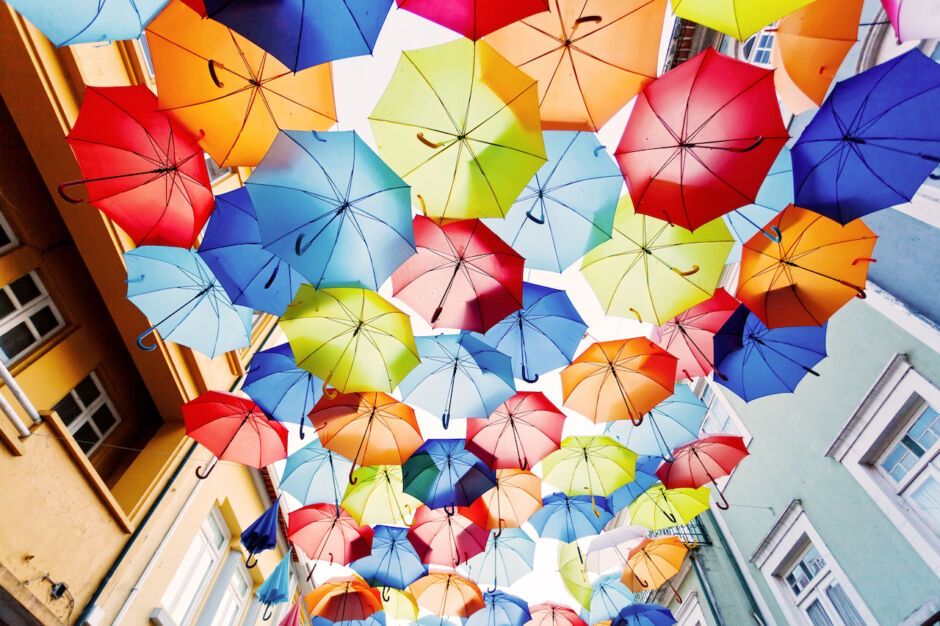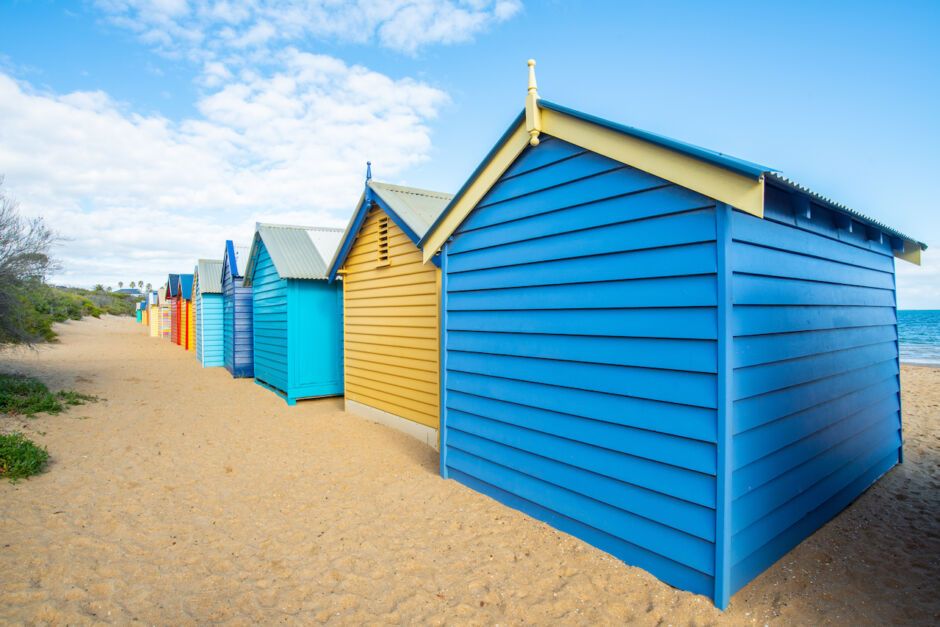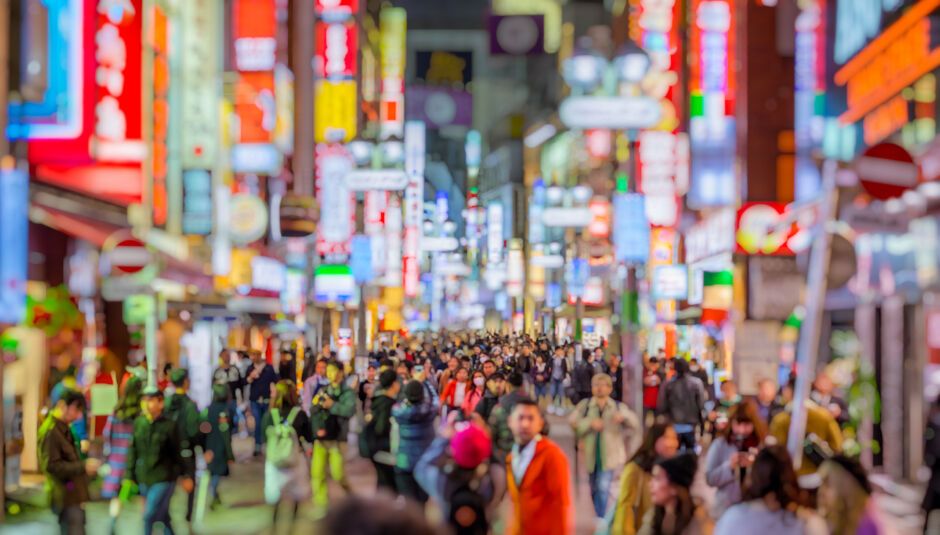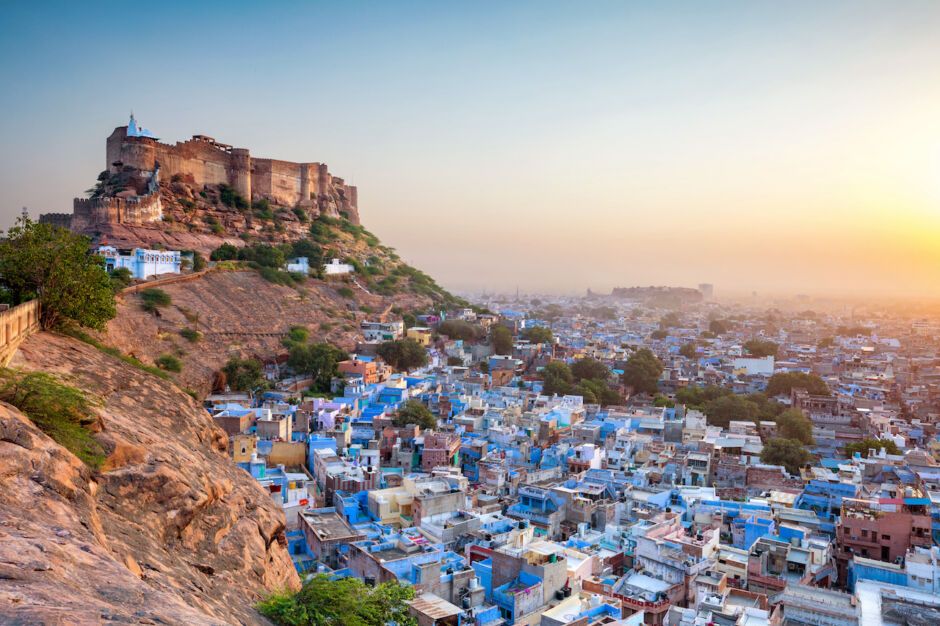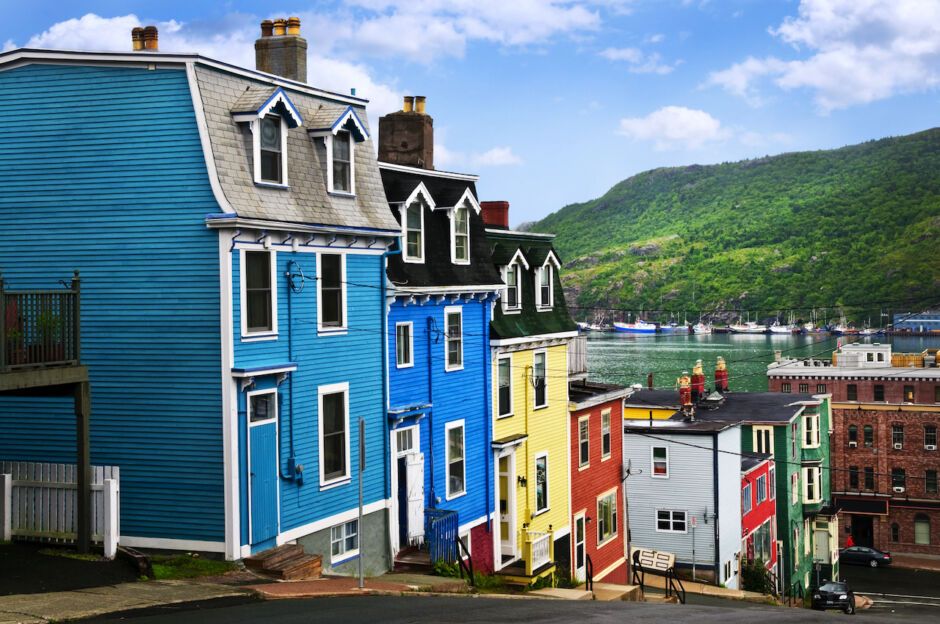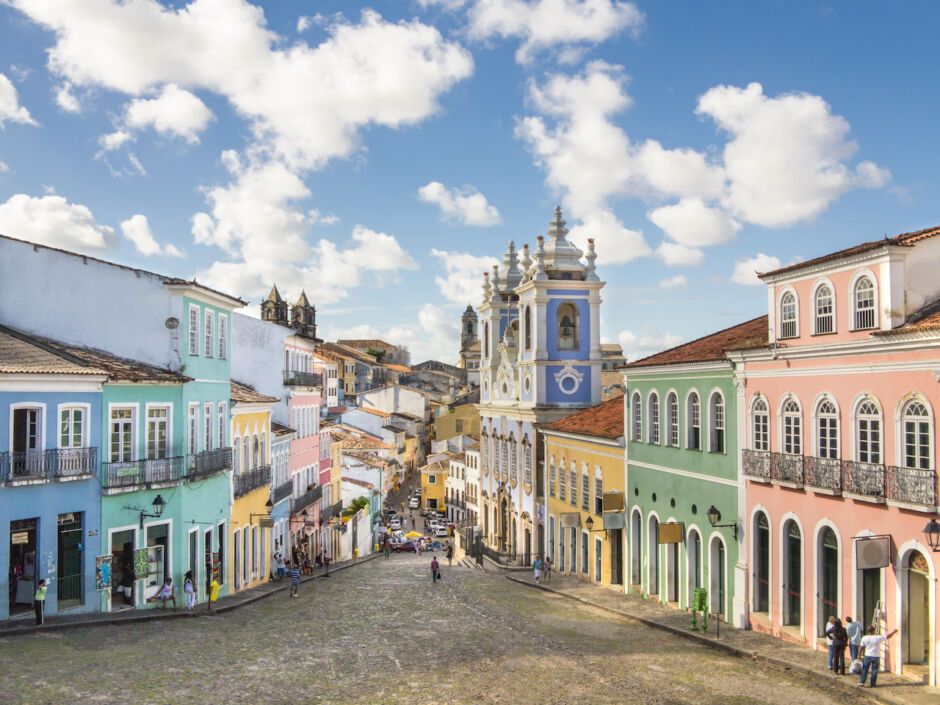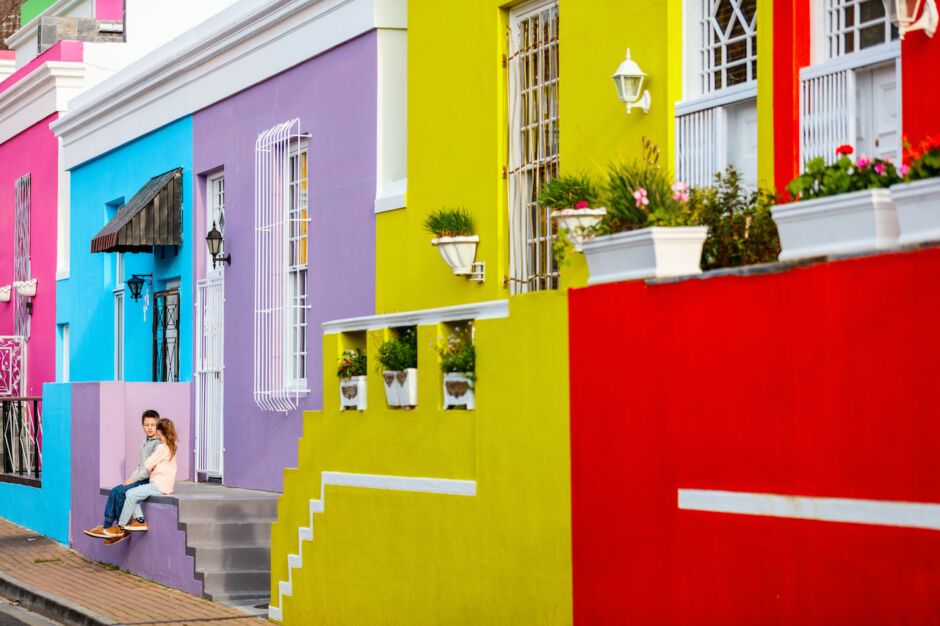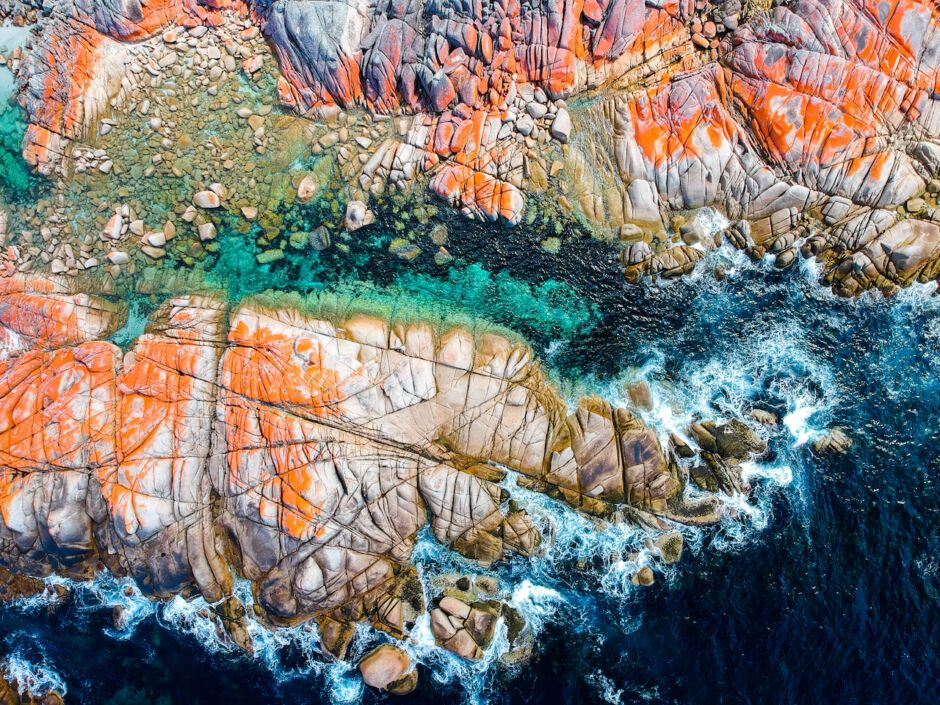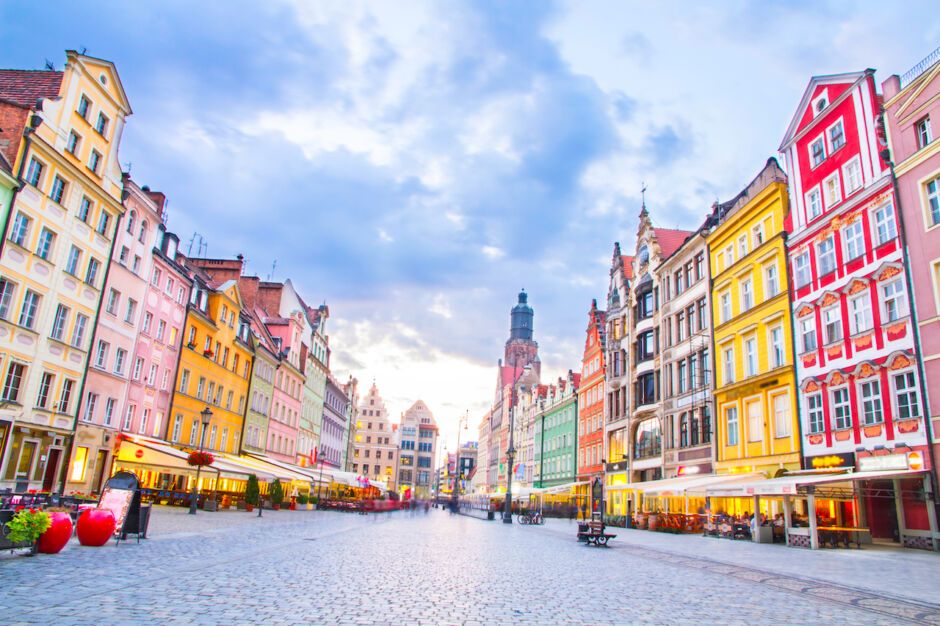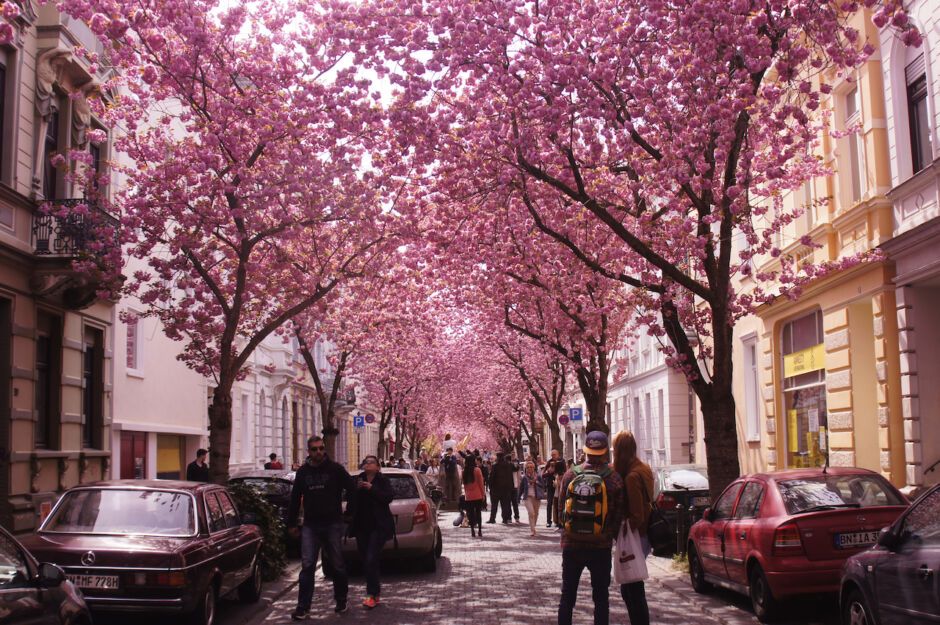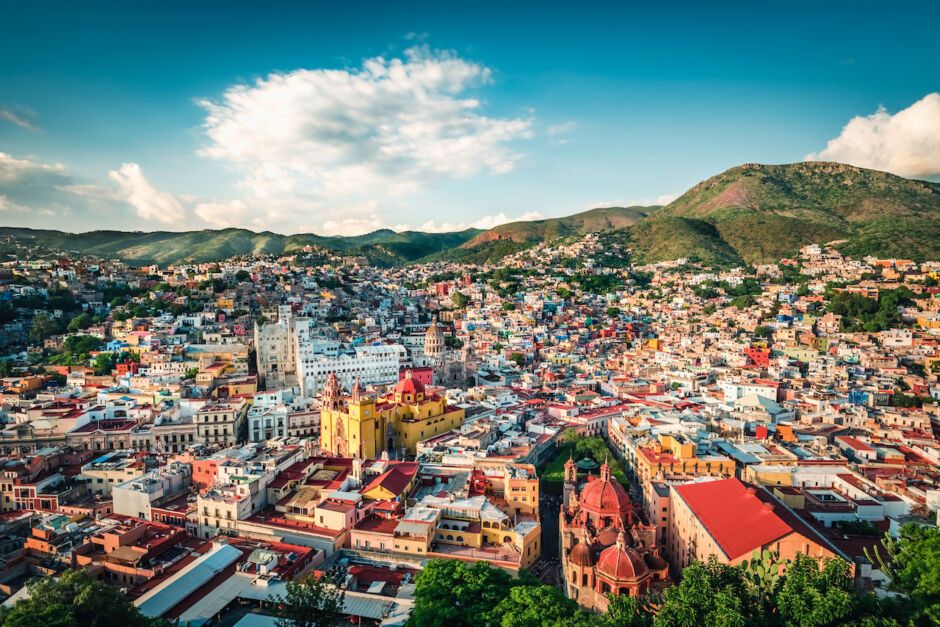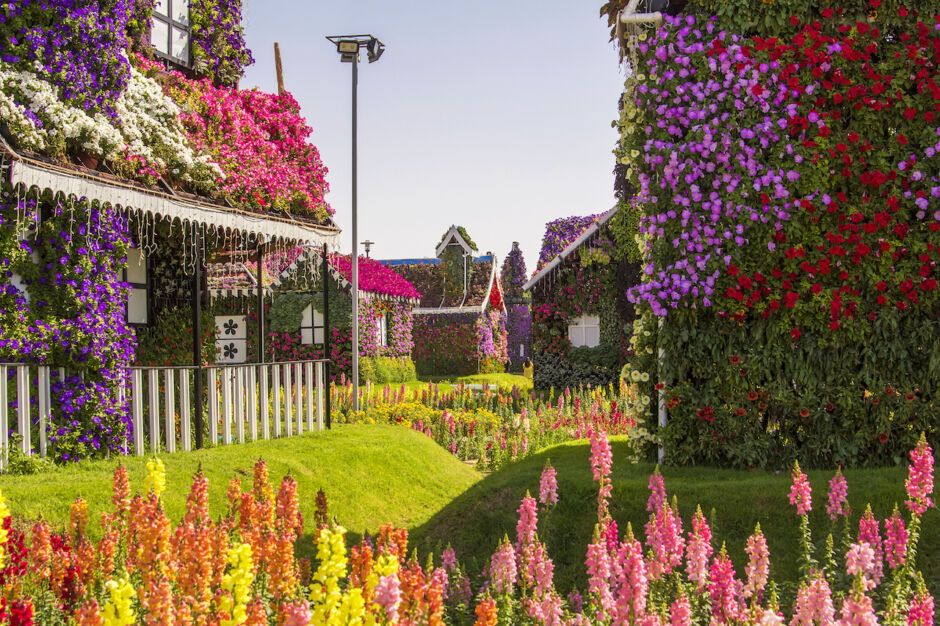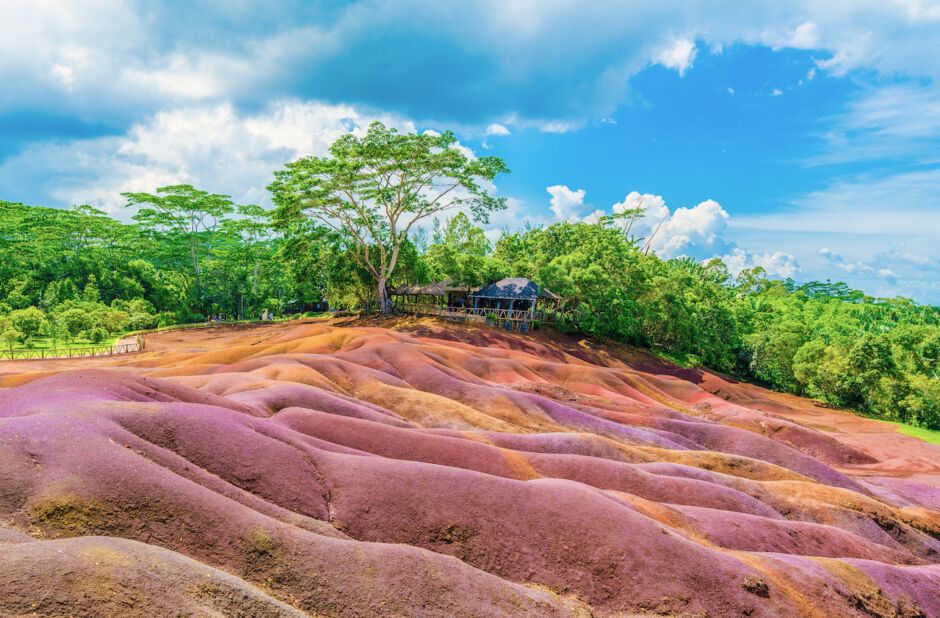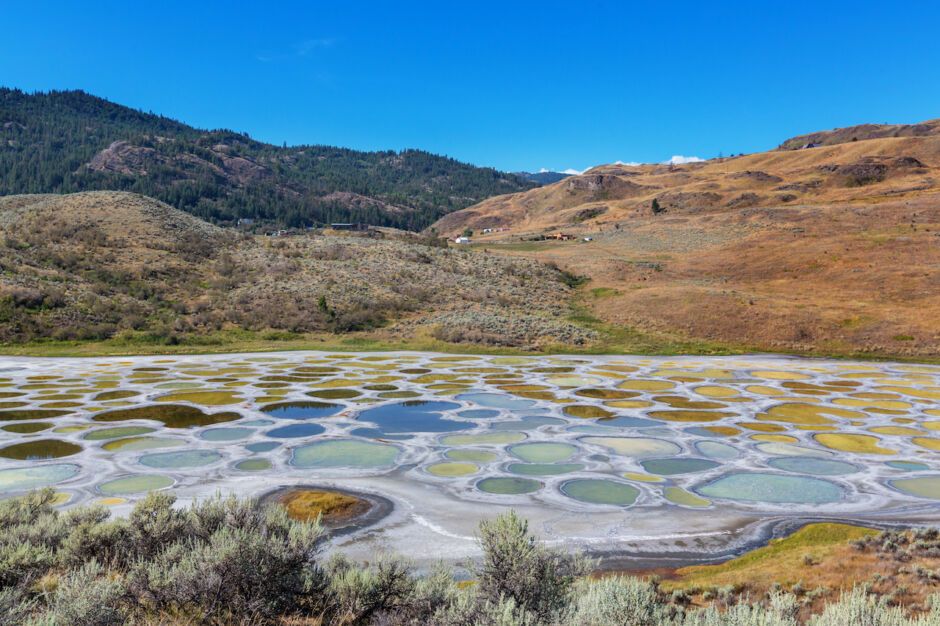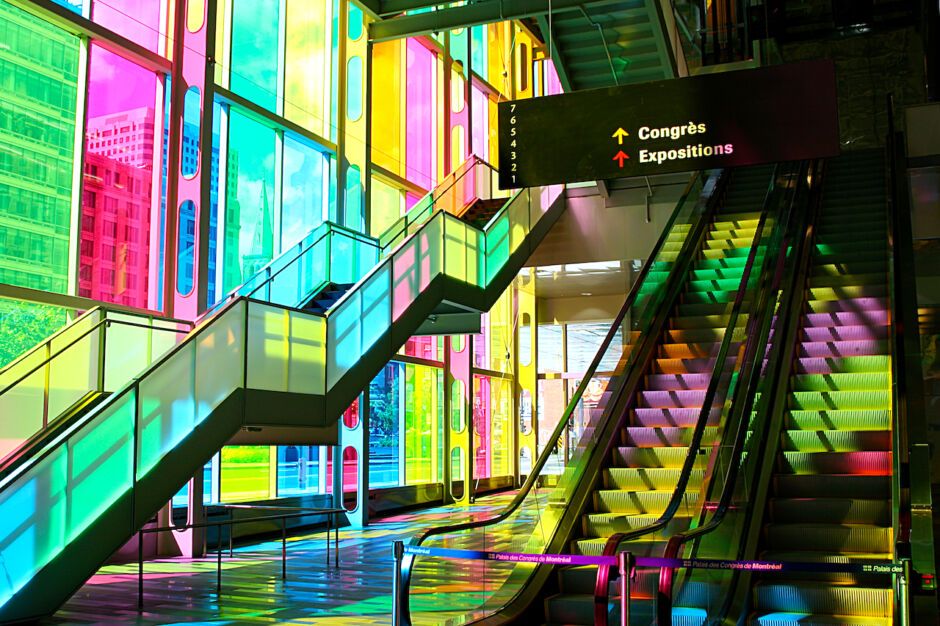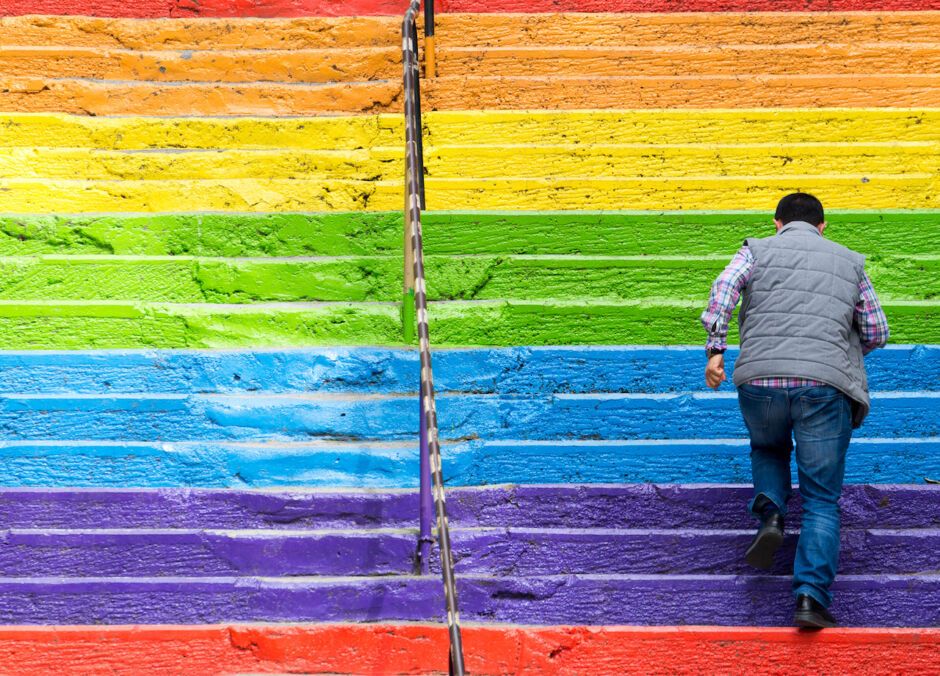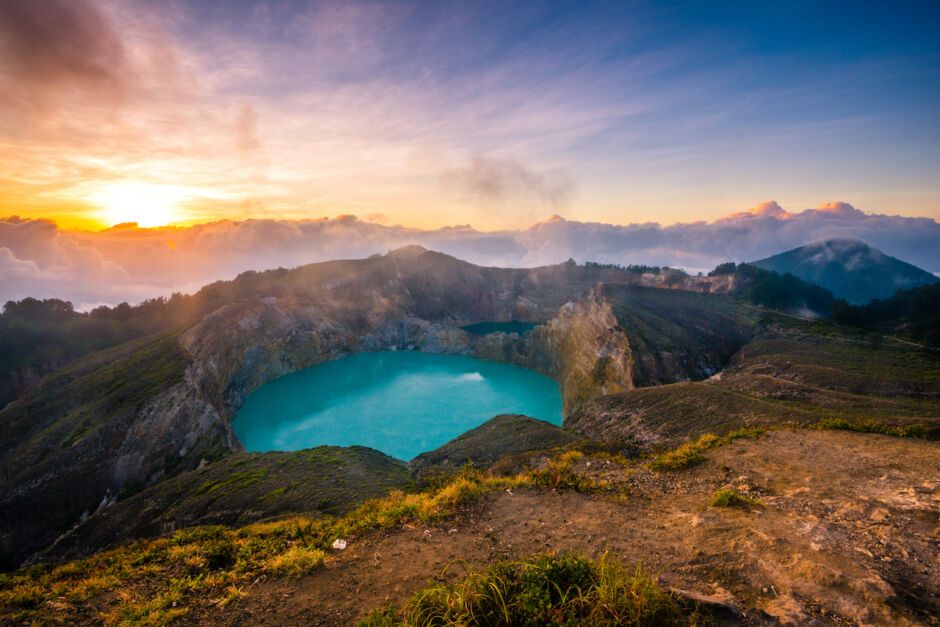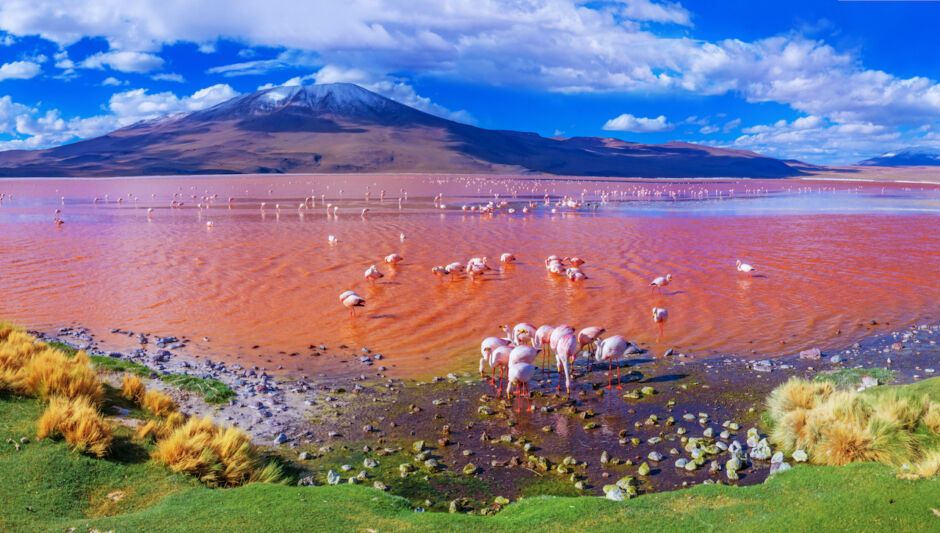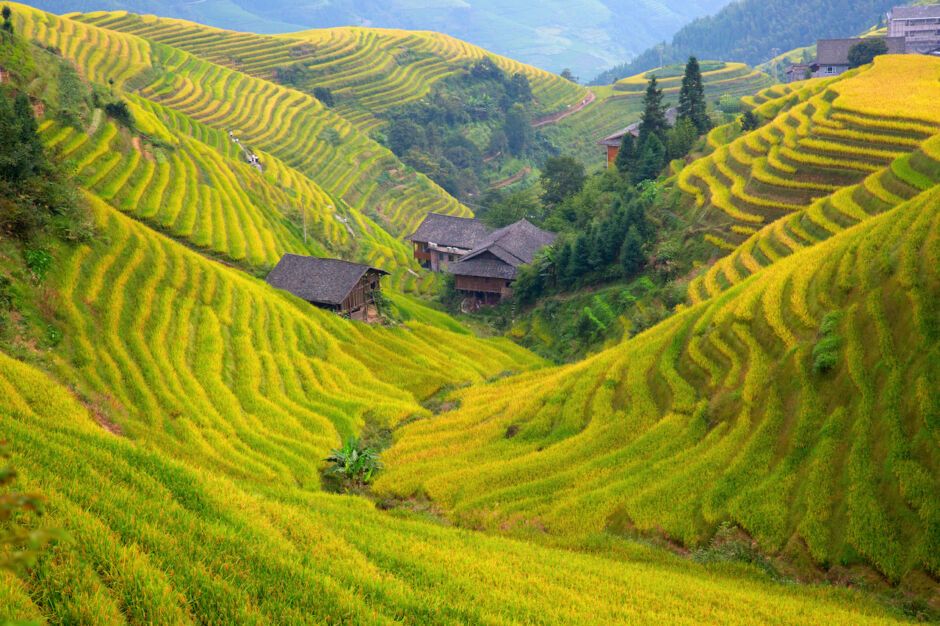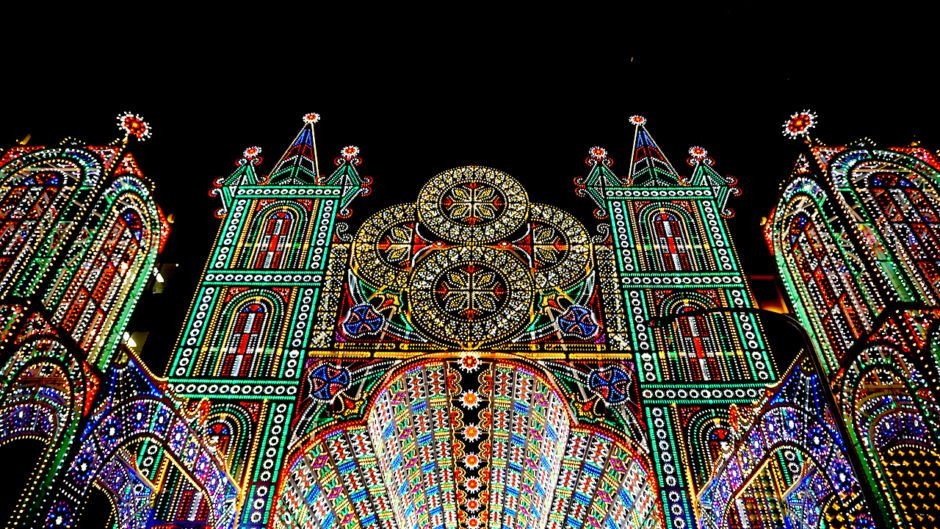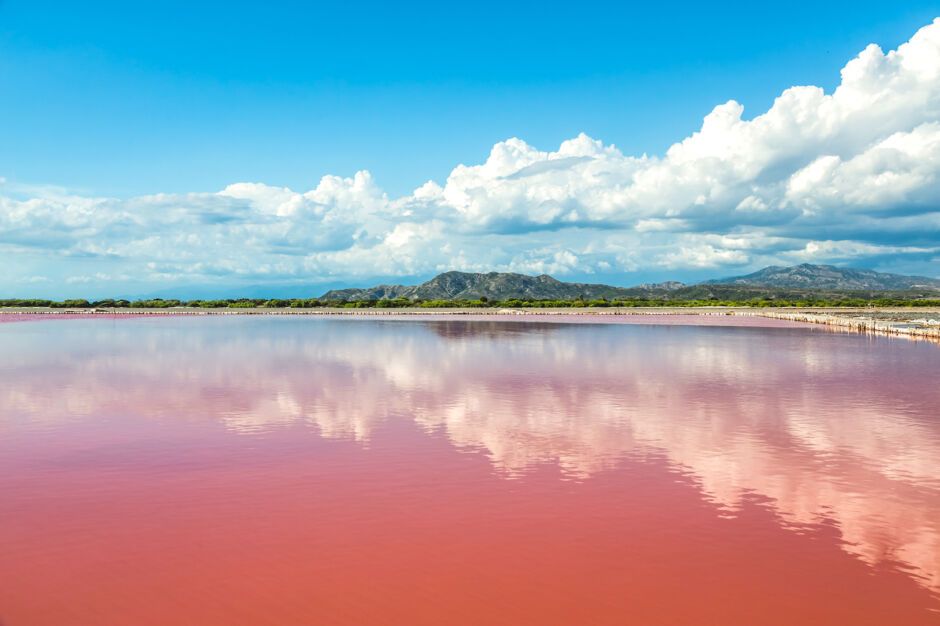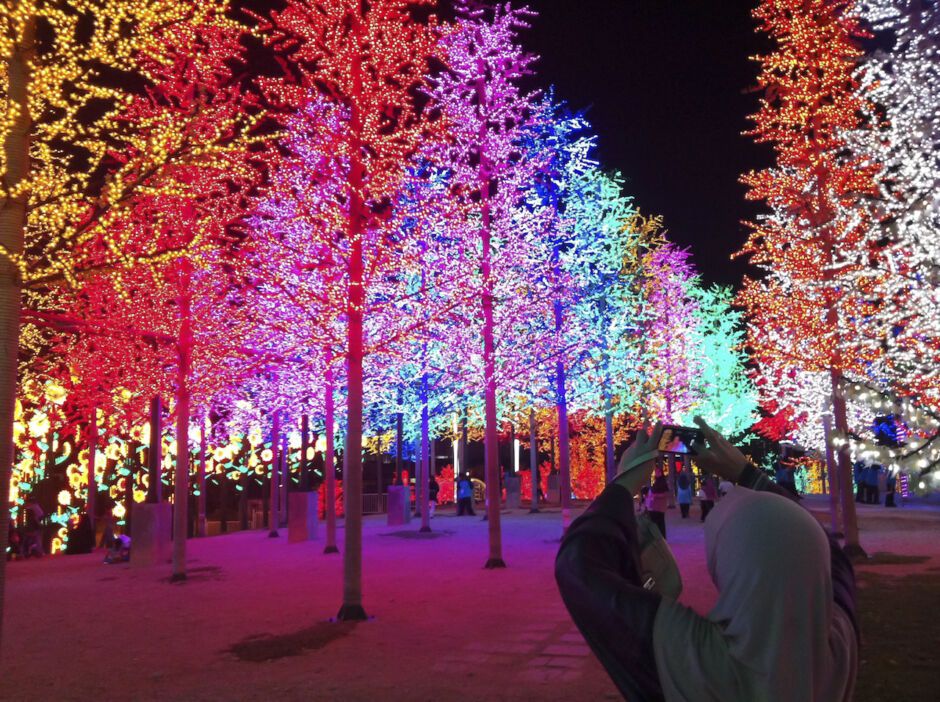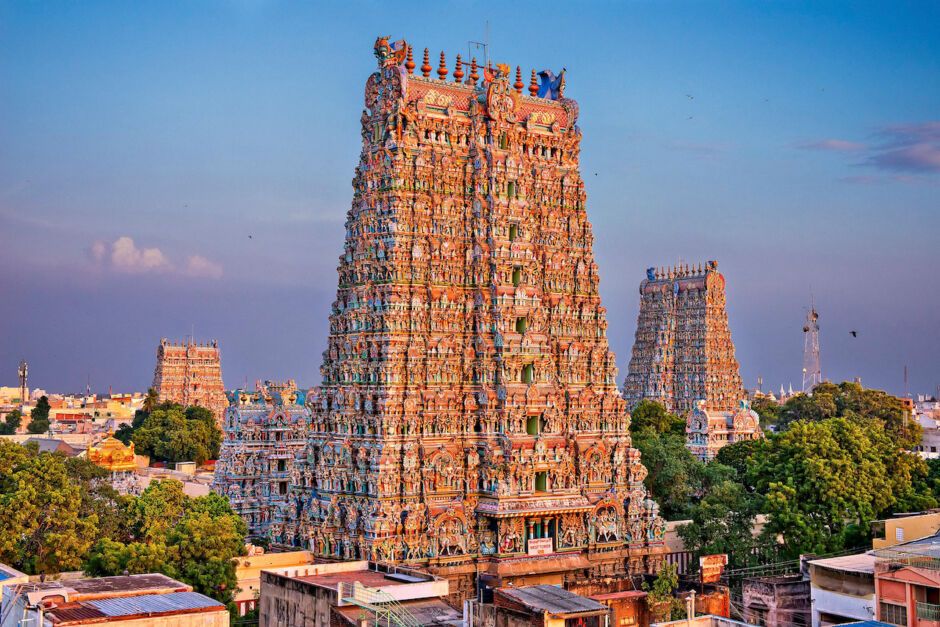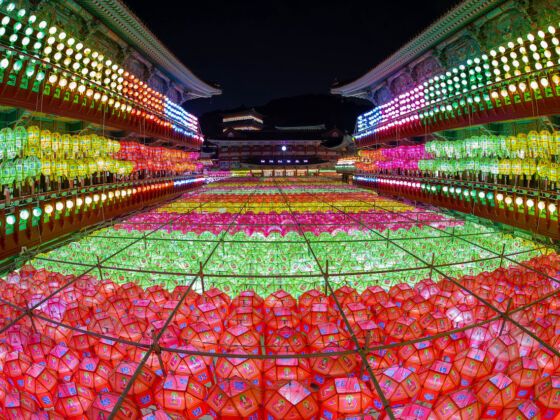No, you don’t need to adjust your screen, nor are any of these the product of extreme photoshopping.
Instead, these places (natural and manmade, seasonal and perennial) possess such incredible and unusual colors that it’s hard to believe they really exist.
The Crayola junkie in me was compelled to catalog them here.
Kawachi Fuji Garden, Kitakyushu, Japan
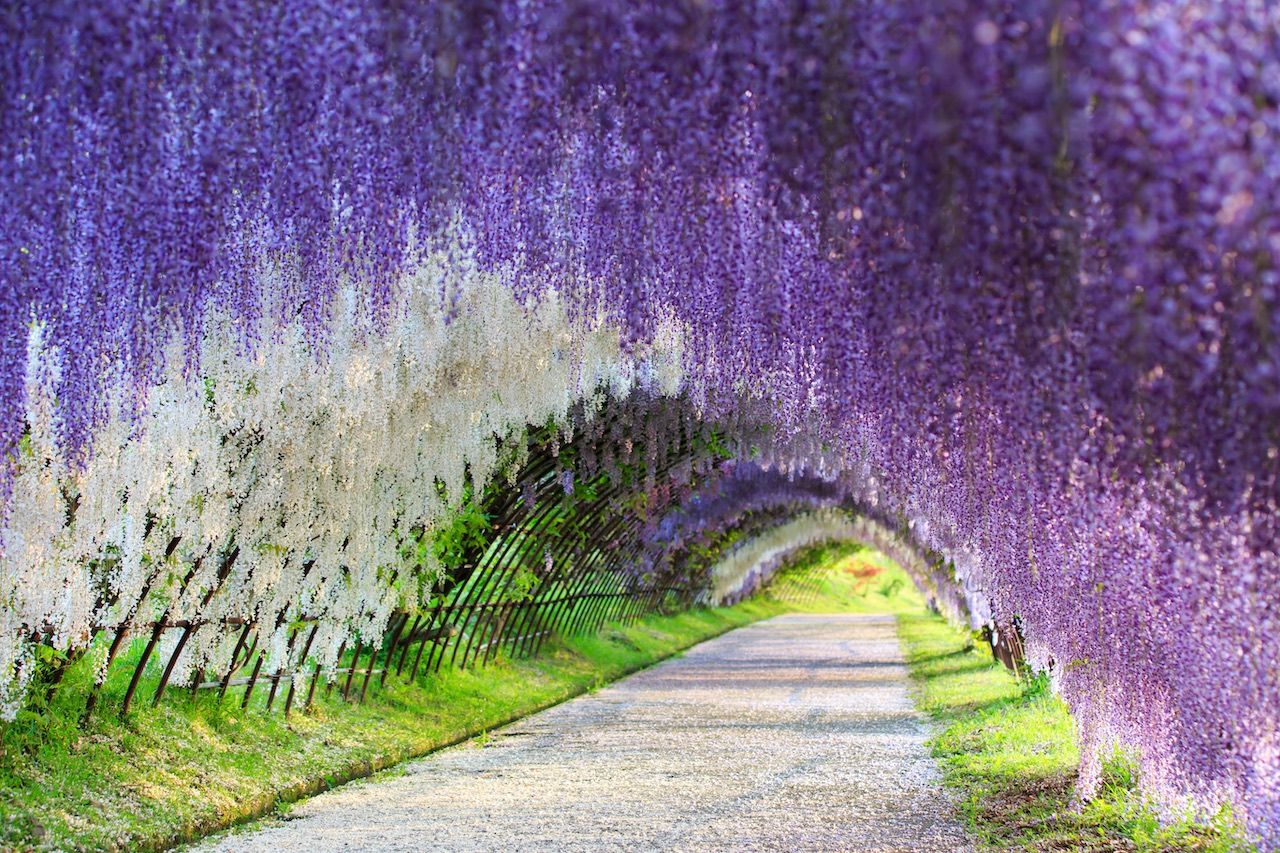
Photo: dk tazunoki/Shutterstock
Despite the internet popularity of the Wisteria Tunnel image at this Japanese garden, the private Kawachi Fuji Garden remains one of Japan’s better kept secrets. Located in the Fukuoka Prefecture in Kyushu, the garden is home to 150 trees, broken into 22 distinct breeds of wisteria, and costs between 300-1000 yen to enter depending on the season. The prime time to visit the garden is April and May, with the annual Wisteria festival held at the end of April.
Canola flower fields, Yunnan, China
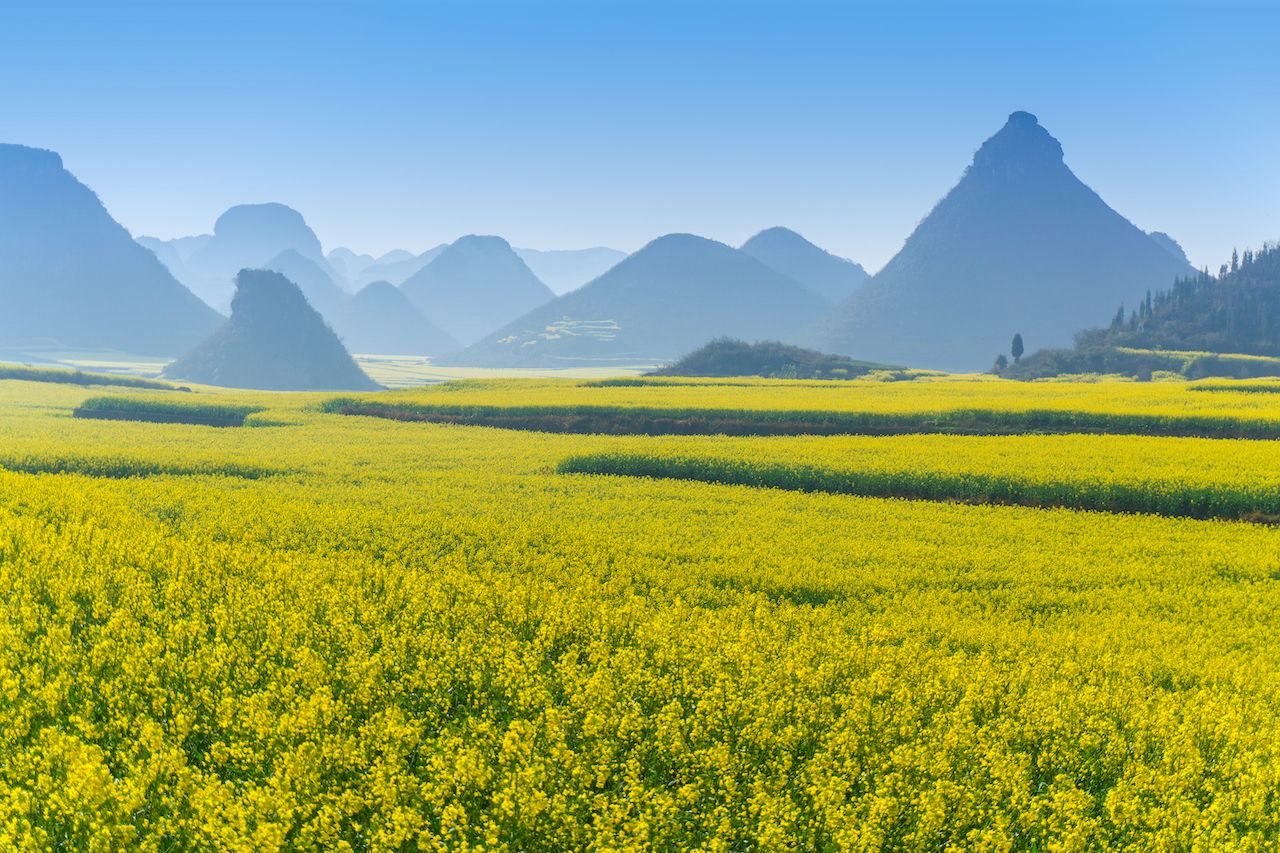
Photo: Journey is bliss/Shutterstock
These yellow canola flowers (also known as rapeseed flowers) bloom in early spring, giving the small county of Luoping in Yunnan the appearance of a golden ocean. These flowers don’t just attract humans, though; Luoping is also a national center for raising bees and producing honey.
Morning Glory Pool, Yellowstone National Park, Wyoming
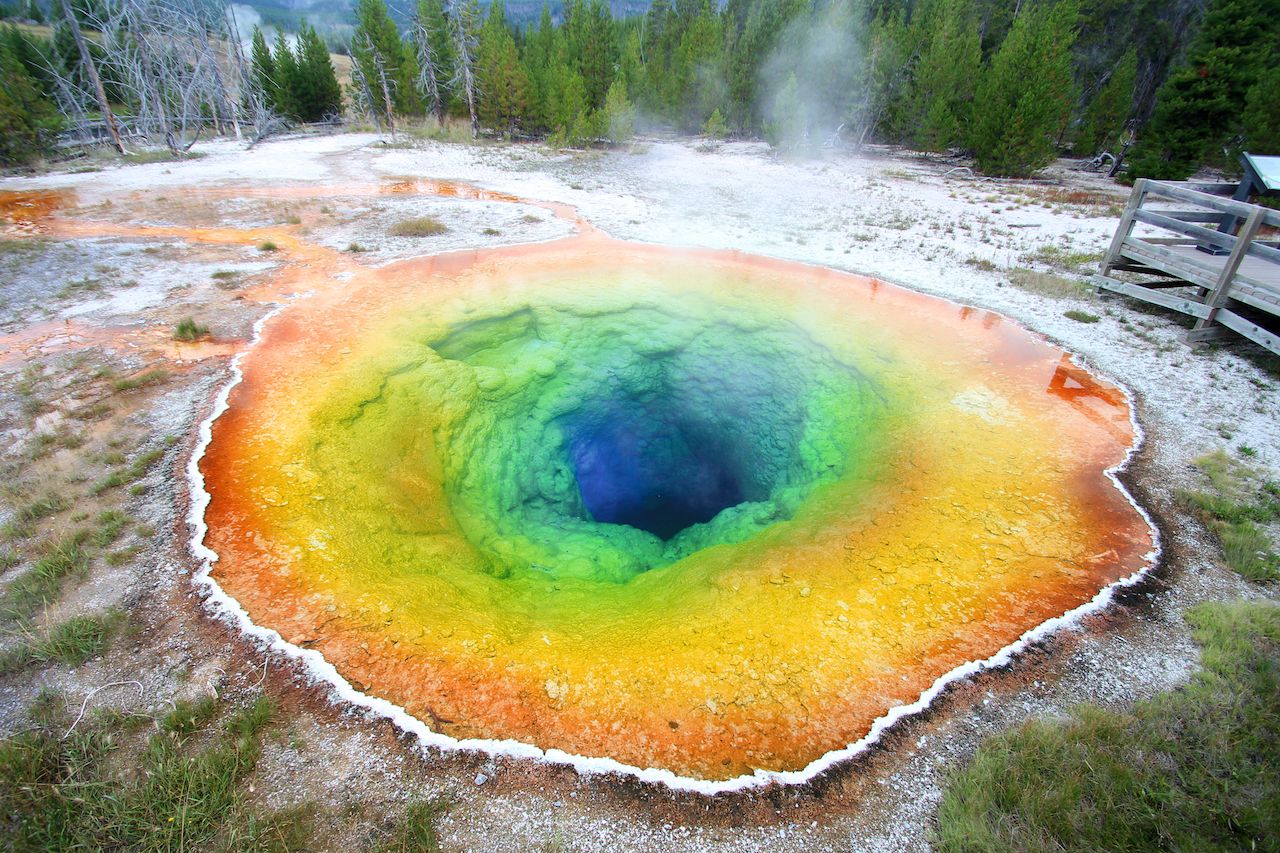
Photo: MisterStock/Shutterstock
The colors in this hot spring have been more thoroughly researched than the distinctive pink hue of Lake Hillier and are definitely due to bacterial colonies lining its walls. Sometimes, after heavy seismic activity in the area, the pool will erupt as a geyser.
Hitachi Seaside Park, Hitachinaka, Ibaraki, Japan
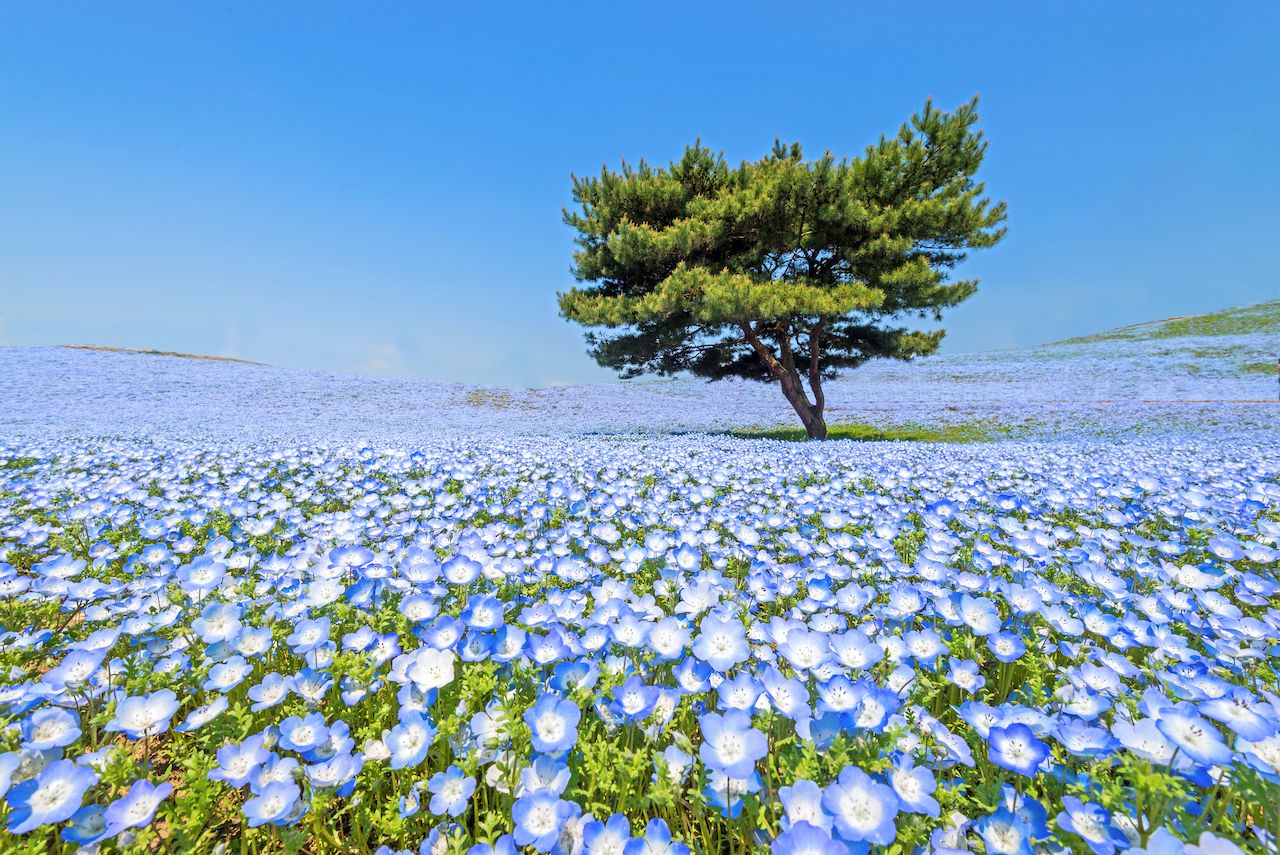
Photo: milezaway/Shutterstock
Sprawling over an area of 470 areas, the Hitachi Seaside Park is best known for the “Nemophila Harmony,” a massive flower festival held in May celebrating the blooming of over 4.5 million translucent blue Nemophila (baby blue-eyes) flowers. The park is also home to 170 types of tulips, over a million daffodils, and myriad other flowers. Fun fact: Hitachi Seaside Park also hosts the “Rock in Japan Festival” annually, in August.
Fly Geyser, Northern Nevada
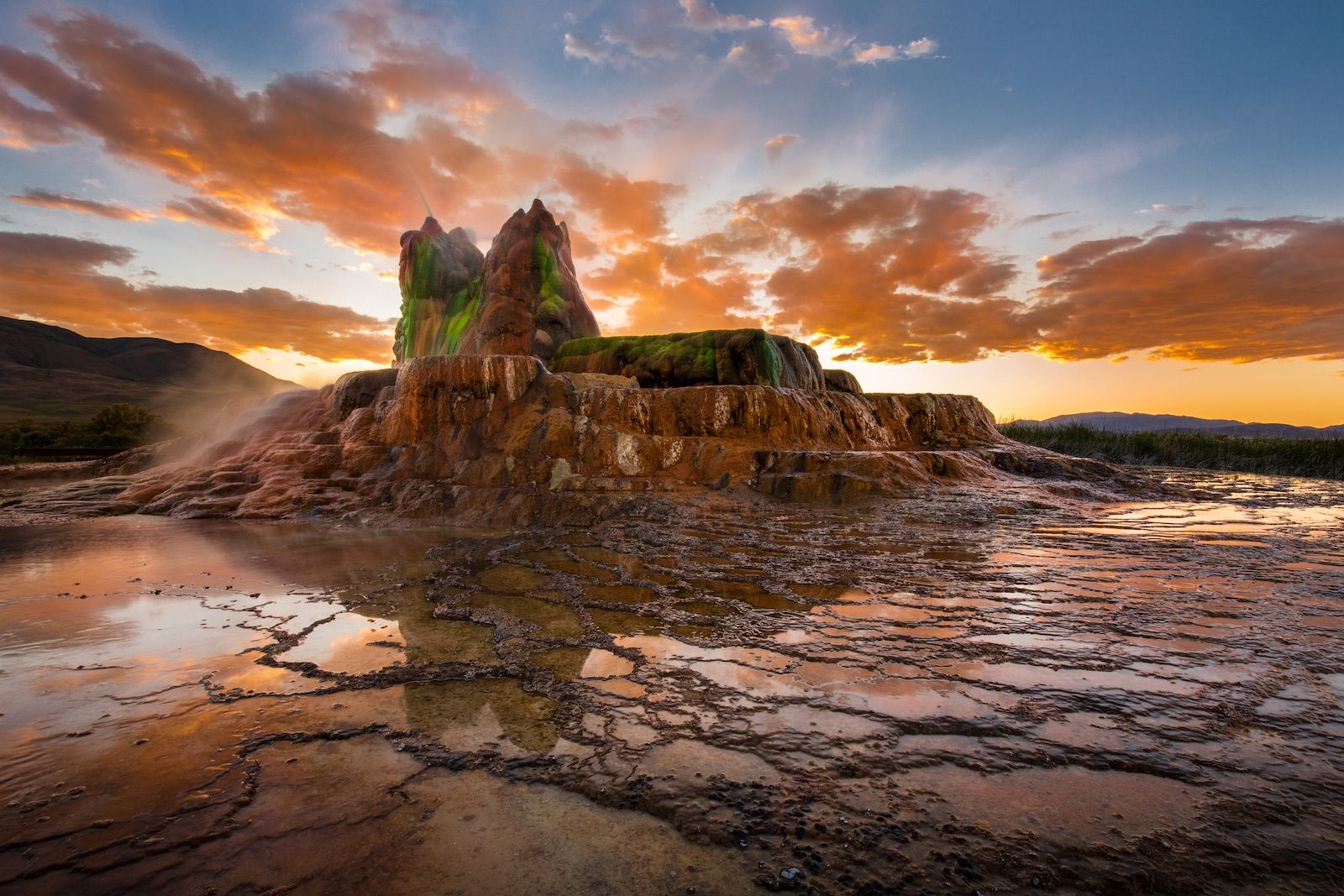
Photo: Rylandwest/Shutterstock
An accidental man-made phenomenon, Fly Geyser is the byproduct of well drilling in the 1960s–a poorly capped well began spewing dissolved minerals, and over the years those minerals have piled up to form the geyser’s distinctive rainbow pillars. Sadly, it’s on private property (though that hasn’t stopped people from extensive blogging about how to find it).
Sagano Bamboo Forest, Arashiyama, Japan
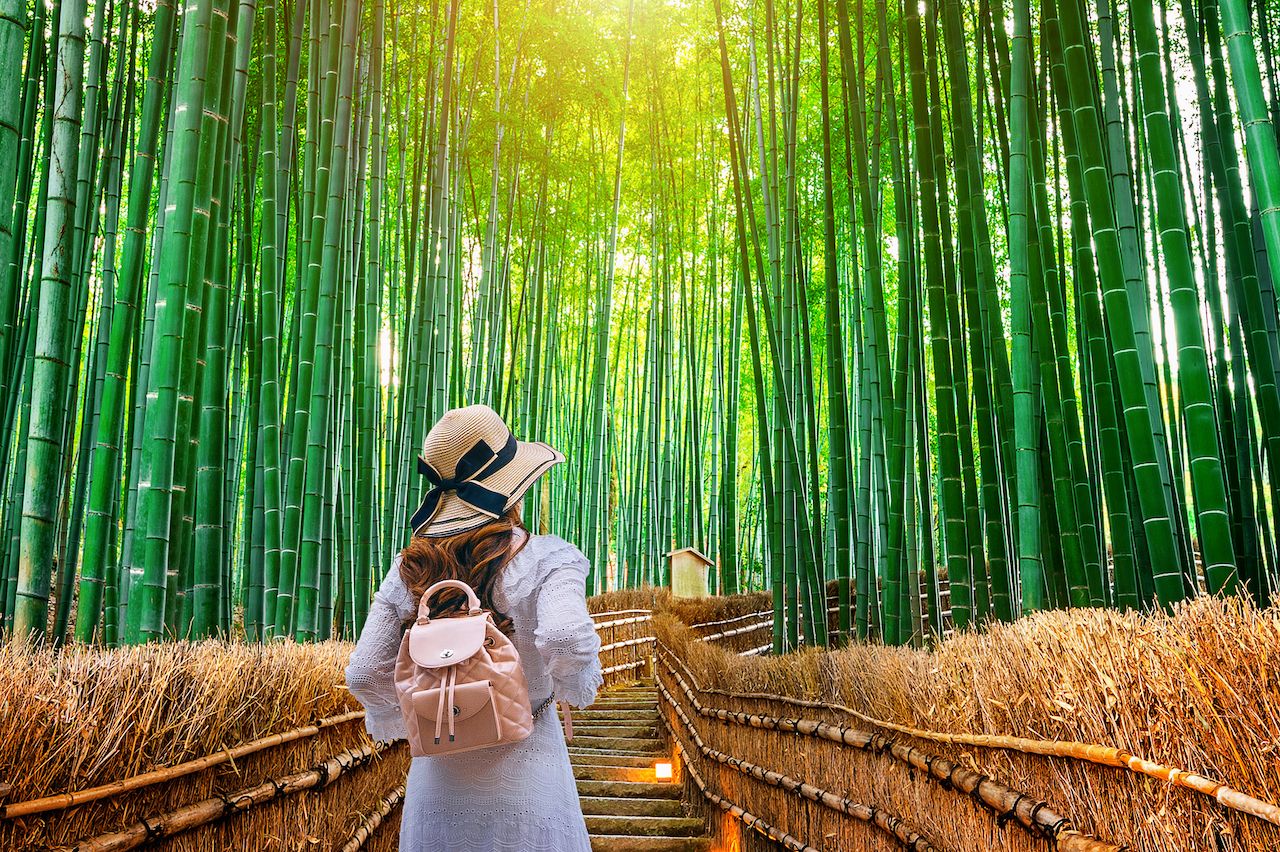
Photo: Guitar photographer/Shutterstock
Designated as both a Historic Site and Place of Scenic Beauty under the Japanese Monument classification system, Arashiyama (or Storm Mountain, so-called for the mountain near the district opposite the Ōi River) is located on the western edge of Kyoto. Another season-dependent region, tourism to Arashiyama peaks during the spring and fall, with the blooming of cherry blossoms and the color changes of autumn. Fun fact: The Sagano Bamboo Forest lies just north of the Togetsukyo bridge (Moon Crossing Bridge), and depending on which bank you stand on, the river you’re facing is called either the Hozu River (on the west side) or the Katsura River (on the east side).
Zhangye Danxia, Southwest China
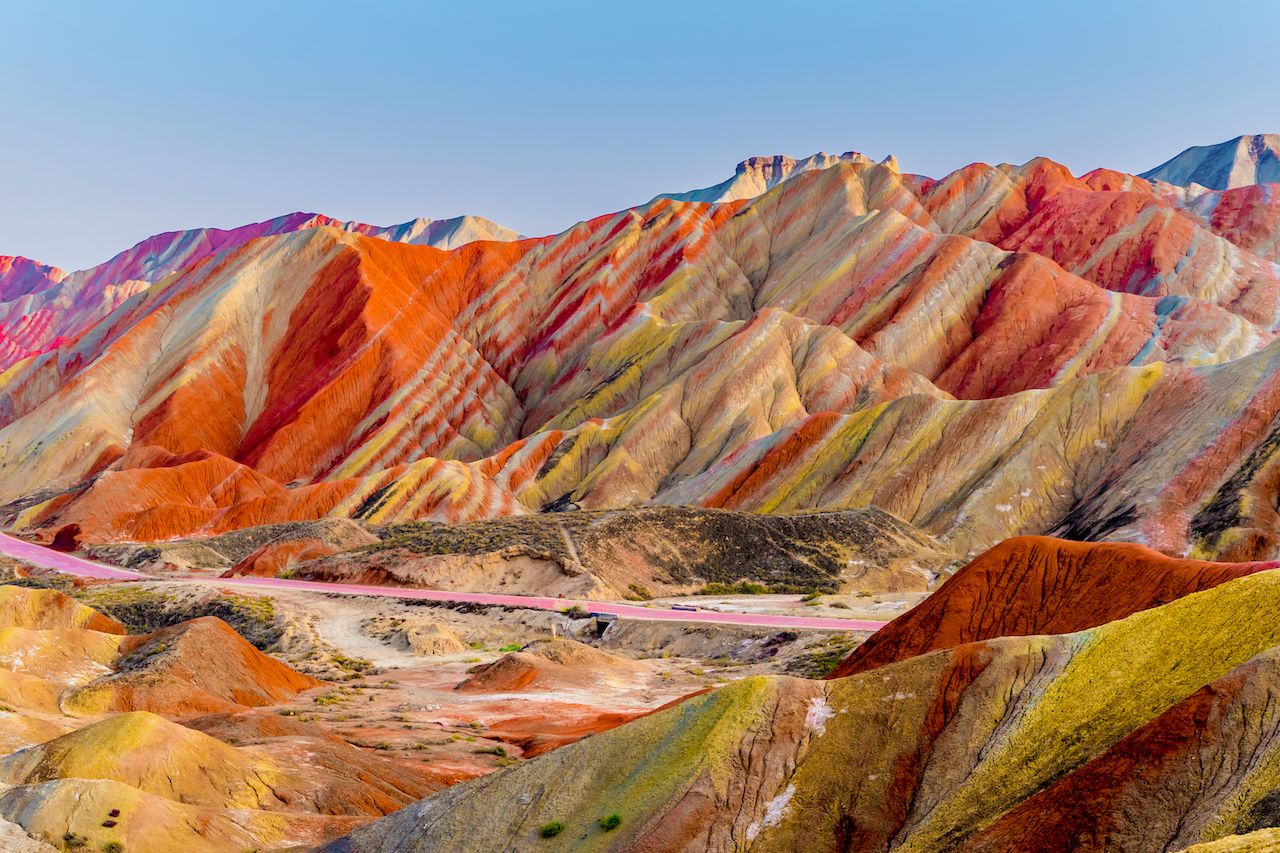
Photo: THONGCHAI.S/Shutterstock
More popularly known as the “Rainbow Mountains of China,” the Zhangye Danxia landforms cover an area of almost 300 square miles, and are formed from geological processes unique to China. This landform was declared a World Heritage Site in 2010.
Yi Peng, Thailand
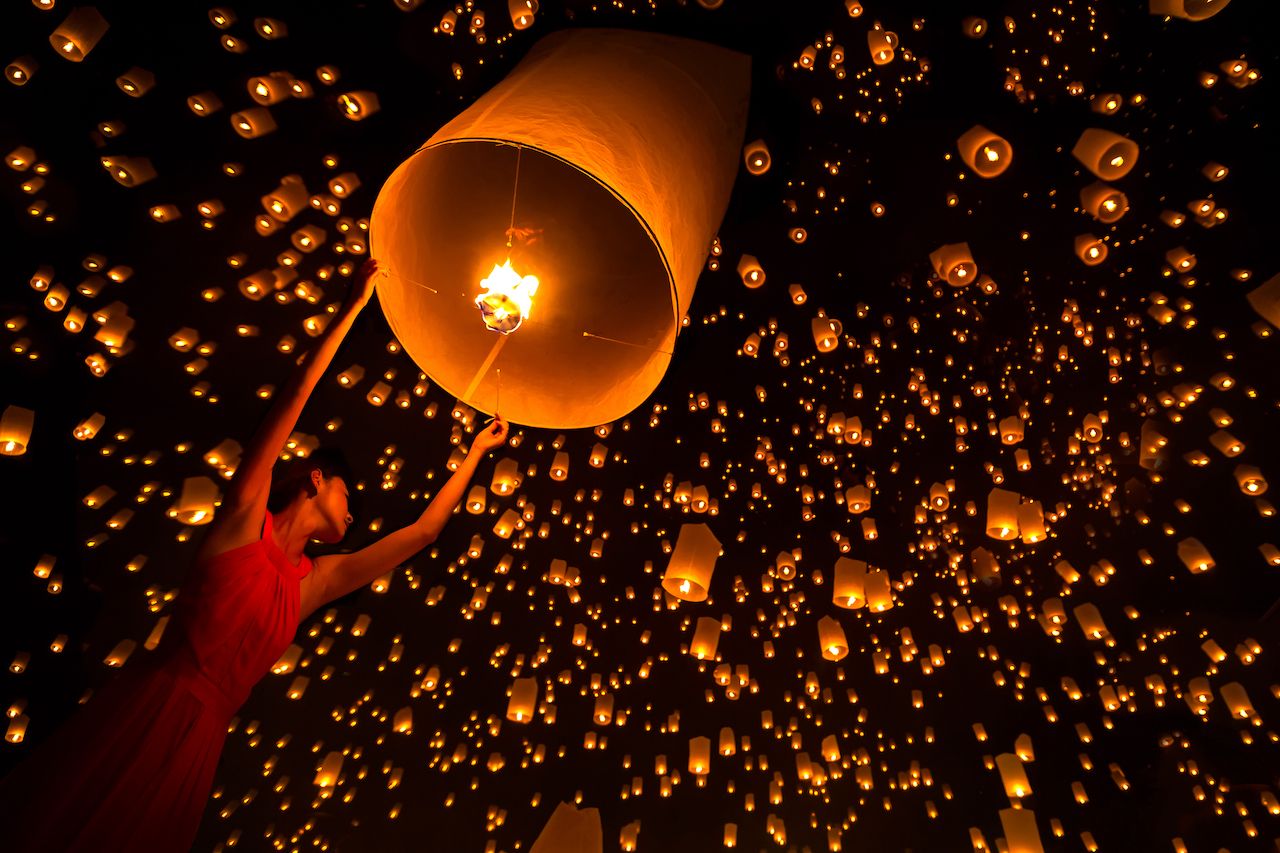
Photo: Krunja/Shutterstock
Celebrated annually throughout Thailand and parts of Laos, but with the most impressive display at Chiang Mai, the festival of merit now coincides with Loi Krathong, and is celebrated together by releasing a seemingly infinite amount of lanterns both into the sky, and floating along the waters.
Cinque Terre, Italy
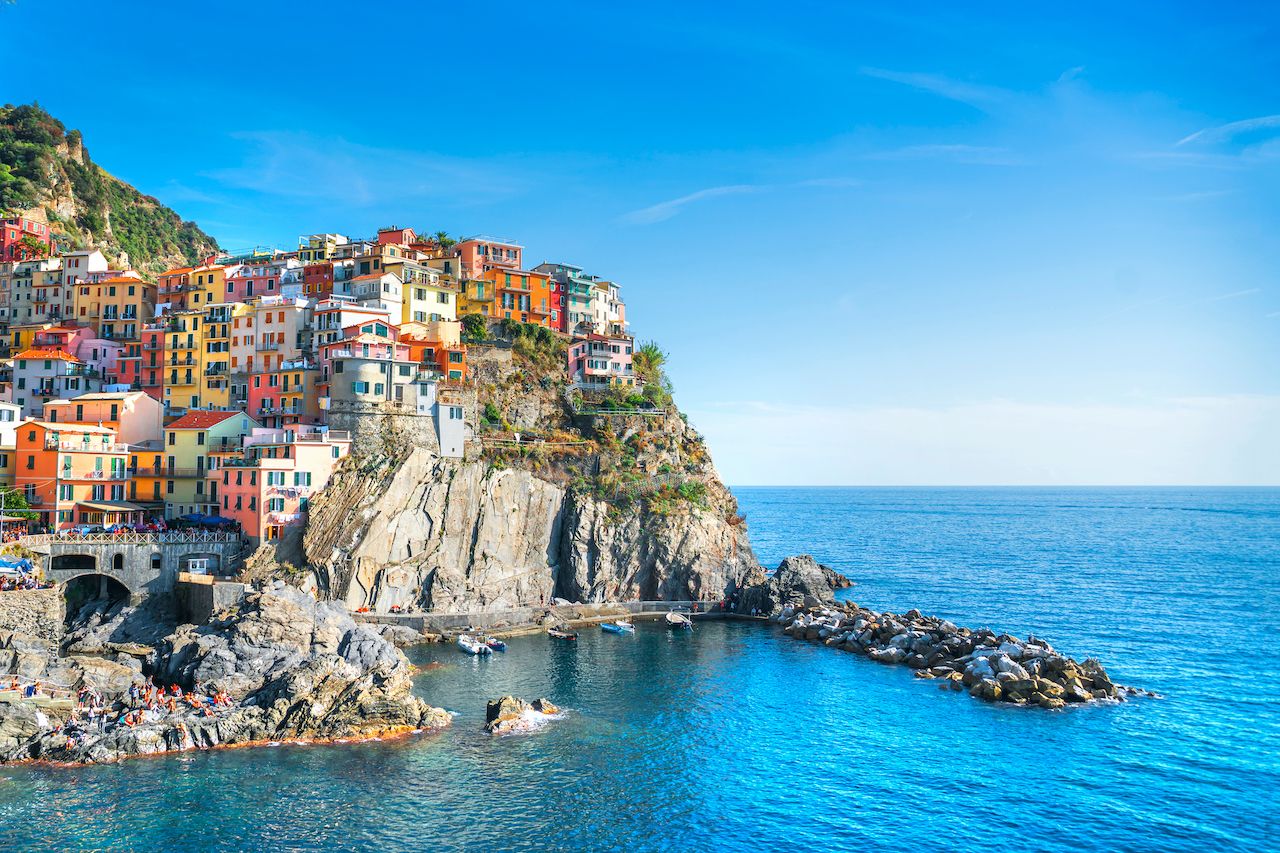
Photo: Anton Watman/Shutterstock
Cinque Terre (“the five lands”) is a portion of coast on the Italian Riviera composed of five villages, built on terraces that overlook the sea. Pictured is the village of Manarola.
Lake Hillier, Middle Island, Australia
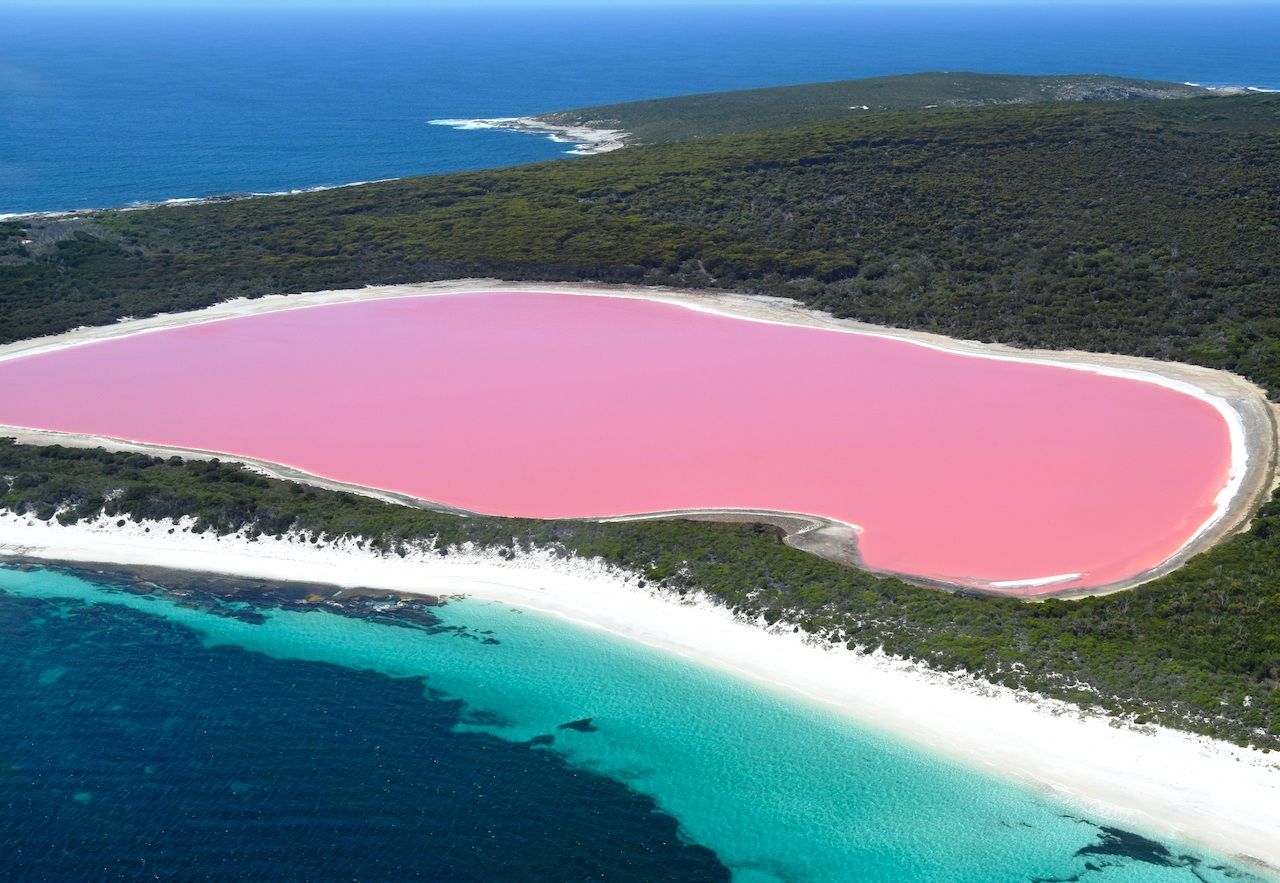
Photo: matteo_it/Shutterstock
There is no consensus on why this particular lake is pink, but some hypotheses include the presence of dye produced by bacteria in the water, or colonies of red bacteria living in the lake’s salt crusts. Fun fact: the water stays pink even when you take it away in a bottle, so it’s not just a trick of the light.
Tulip fields, The Netherlands

Photo: Olena Z/Shutterstock
As the world’s main producer of tulips, some 3 billion tulip flowers are grown annually in the Netherland’s Duin- en Bollenstreek (Dune and Bulb region in Dutch). The prime time to see the tulips is between the end of March and the beginning of May.
Santorini, Greece
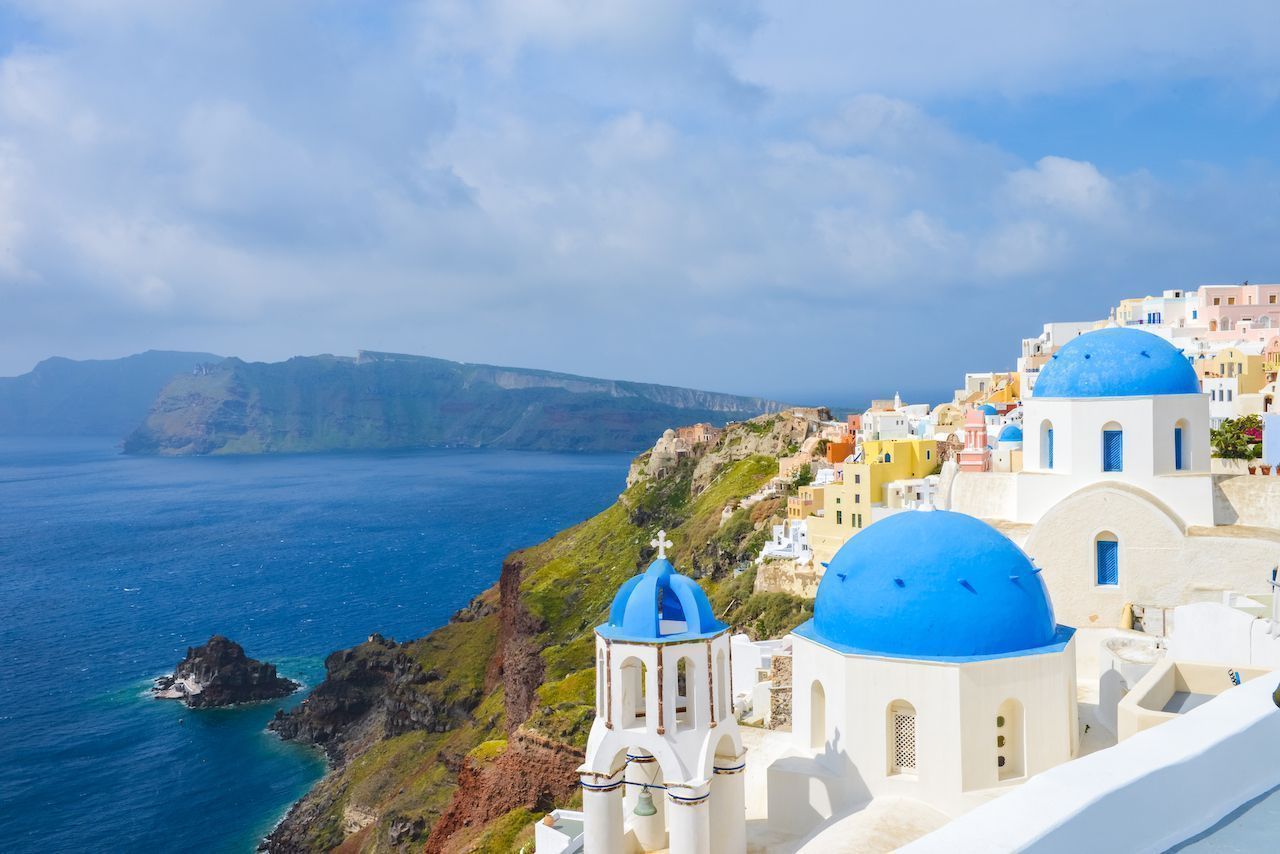
Photo: SweetRiver/Shutterstock
A small island located in the southern Aegean Sea off Greece’s southeastern coast, Santorini is renowned for its blue-roofed, whitewashed architecture, killer sunsets, and its fascinating volcanic activity.
Burano, Venice, Italy
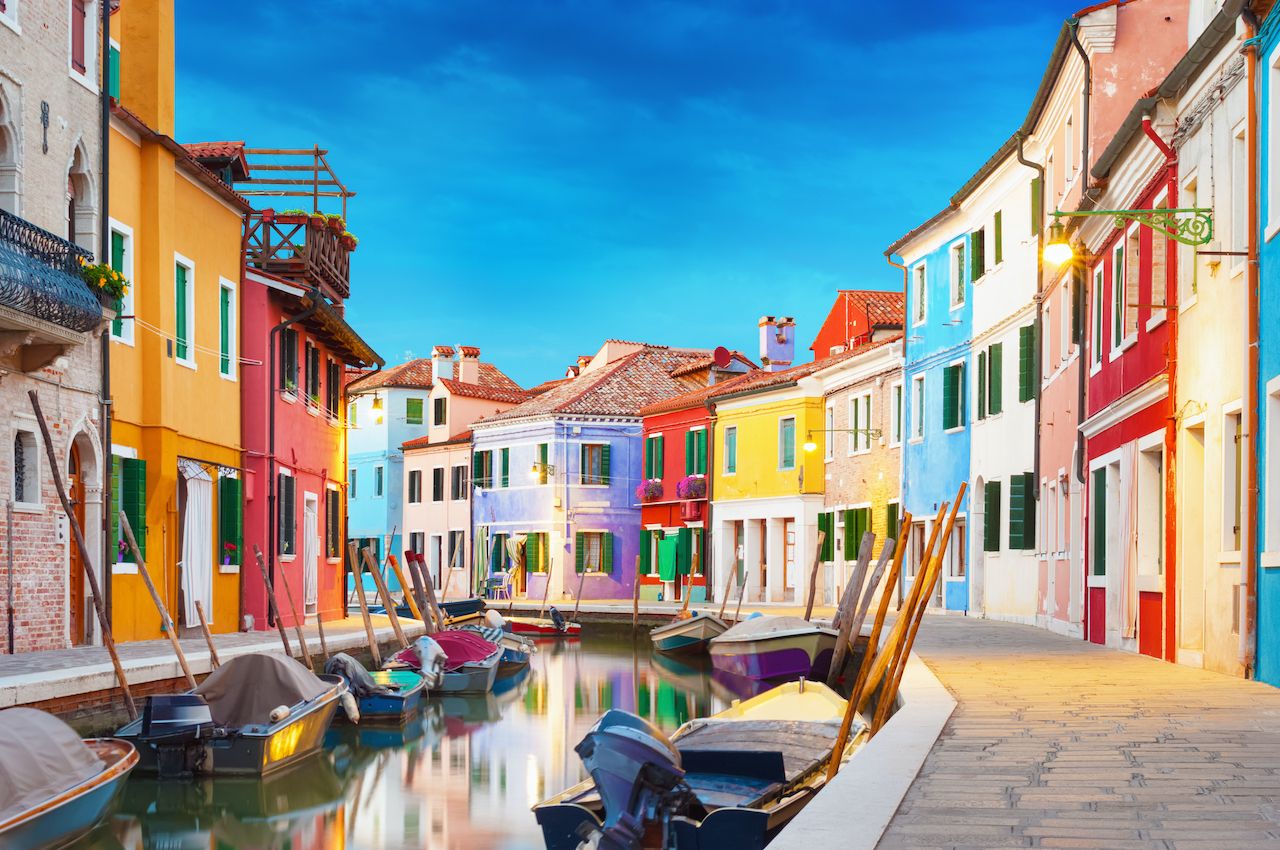
Photo: waku/Shutterstock
Burano is located about 4 miles from the city of Venice. The colors of the houses are subject to a strict, government-regulated system; one must submit a formal request to paint one’s home, and the government will respond with a specific set of colors acceptable for that particular property.
Black Forest, Germany
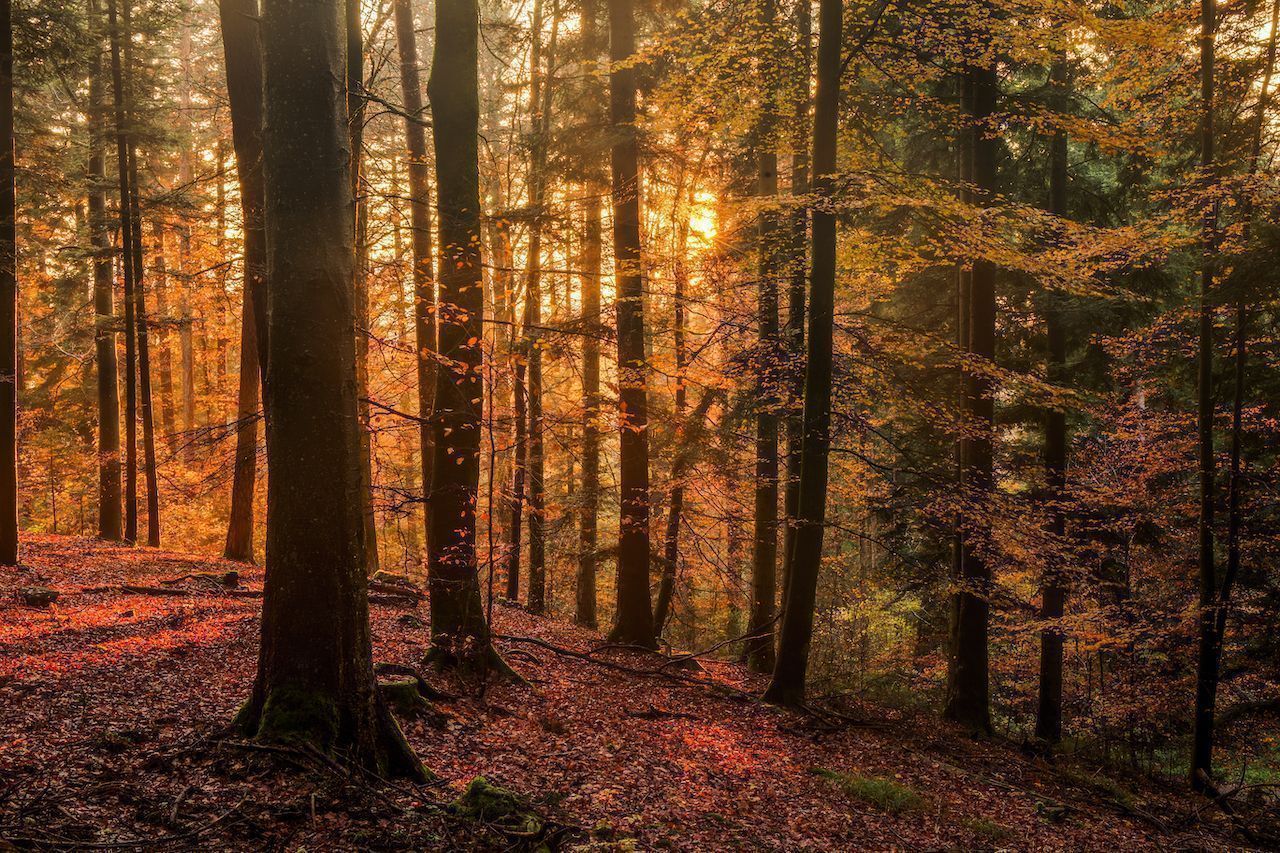
Photo: Andreas Zerndl/Shutterstock
Home to its own unique breed of cattle, horses, and a giant earthworm, the Black Forest is part of a mountain range situated in the state of Baden-Württemberg, in the southwestern region of Germany. The actual forest consists mostly of Norway Spruce, Douglas Fir, and White Pine trees, and is riddled with popular hiking, biking, and cross-country skiing trails. The region is also known for the origins of Black Forest Ham, Black Forest Cake, and renowned precision clocks (made before the closure of the factories over the two World Wars).
Chefchaouen, Morocco

Photo: Vixit/Shutterstock
A mountain town in northwestern Morocco, Chefchaouen (or just “Chaouen” to the locals) is named for the mountain peaks above the town, which have the appearance of two goat horns (“chaoua”). The countryside surrounding this city is renowned as a prolific source of kief; in fact, the region is one of the main producers of cannabis in Morocco.
Valparaiso, Chile
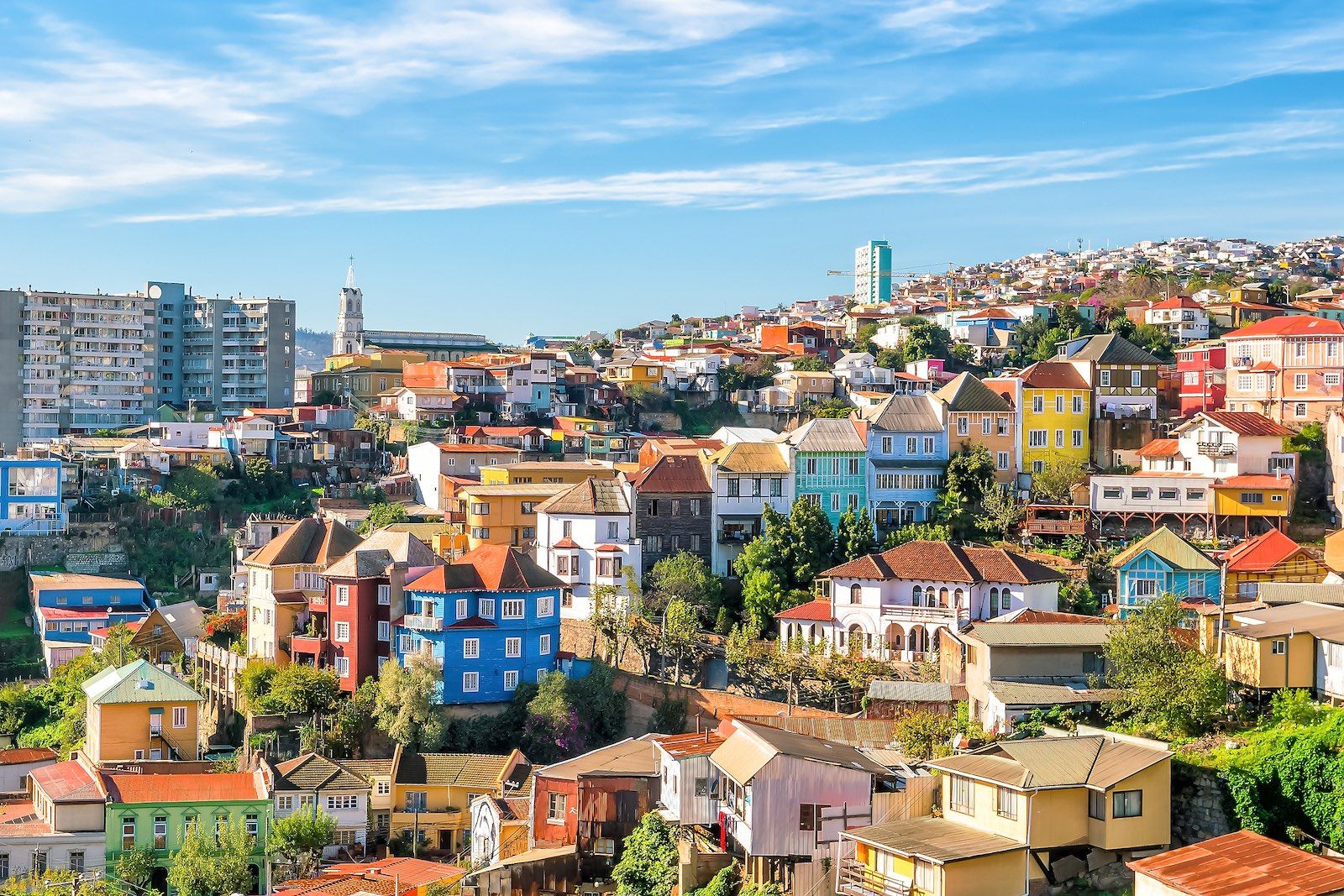
Photo: f11photo/Shutterstock
This Chilean port city, also known as “Little San Francisco” and “The Jewel of the Pacific,” is where Chile’s National Congress has convened since 1990. Valparaiso is home to South America’s very first fire department, as well as a famed and elaborate system of funicular elevators.
Havasu Falls, Grand Canyon, Arizona
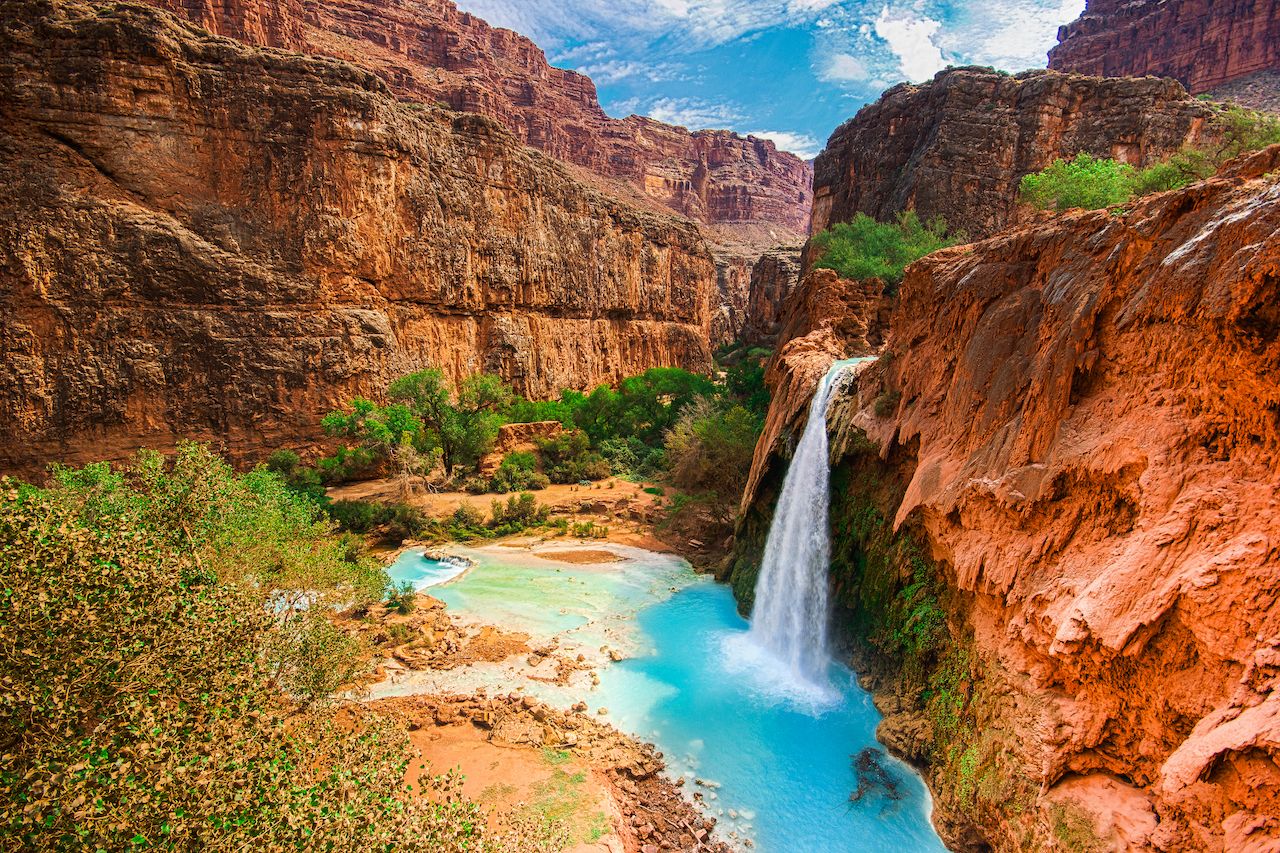
Photo: iacomino FRiMAGES/Shutterstock
The Havasu creek plummets 100 feet over a vertical cliff in the Grand Canyon, landing in a pool rich in calcium carbonate (which gives it that vivid blue-green color). Because the mineral content of the creek is so high, the configuration of the waterfall is always changing (as the cliff top builds up and breaks off).
Antelope Canyon, Arizona
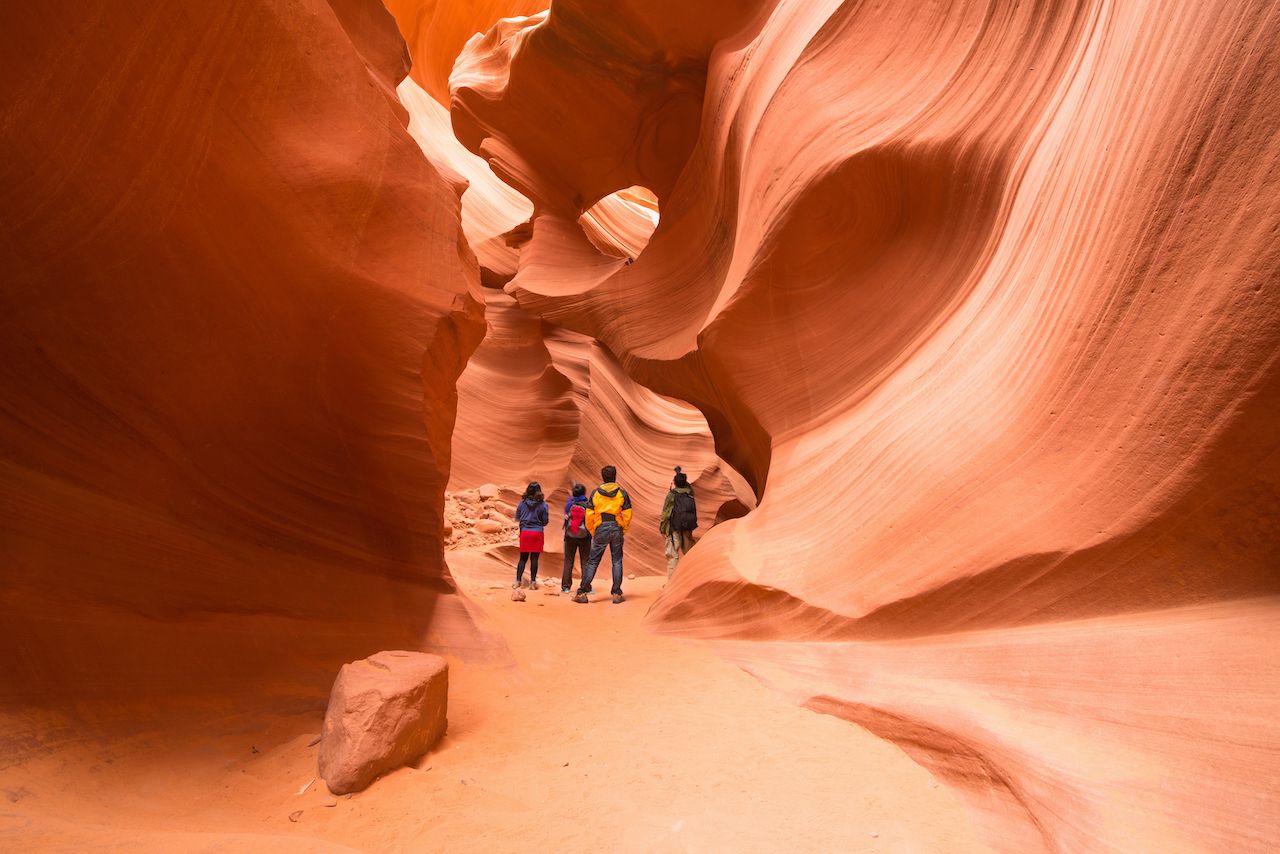
Photo: Shutterstock/Yongyut Kumsri
Just southwest of Havasu Falls is Antelope Canyon in northern Arizona. Formed by flash floods roaring through sandstone, the canyon’s name in Navajo actually translates to “the place where water runs through rocks.”
Rotorua Hot Springs, New Zealand
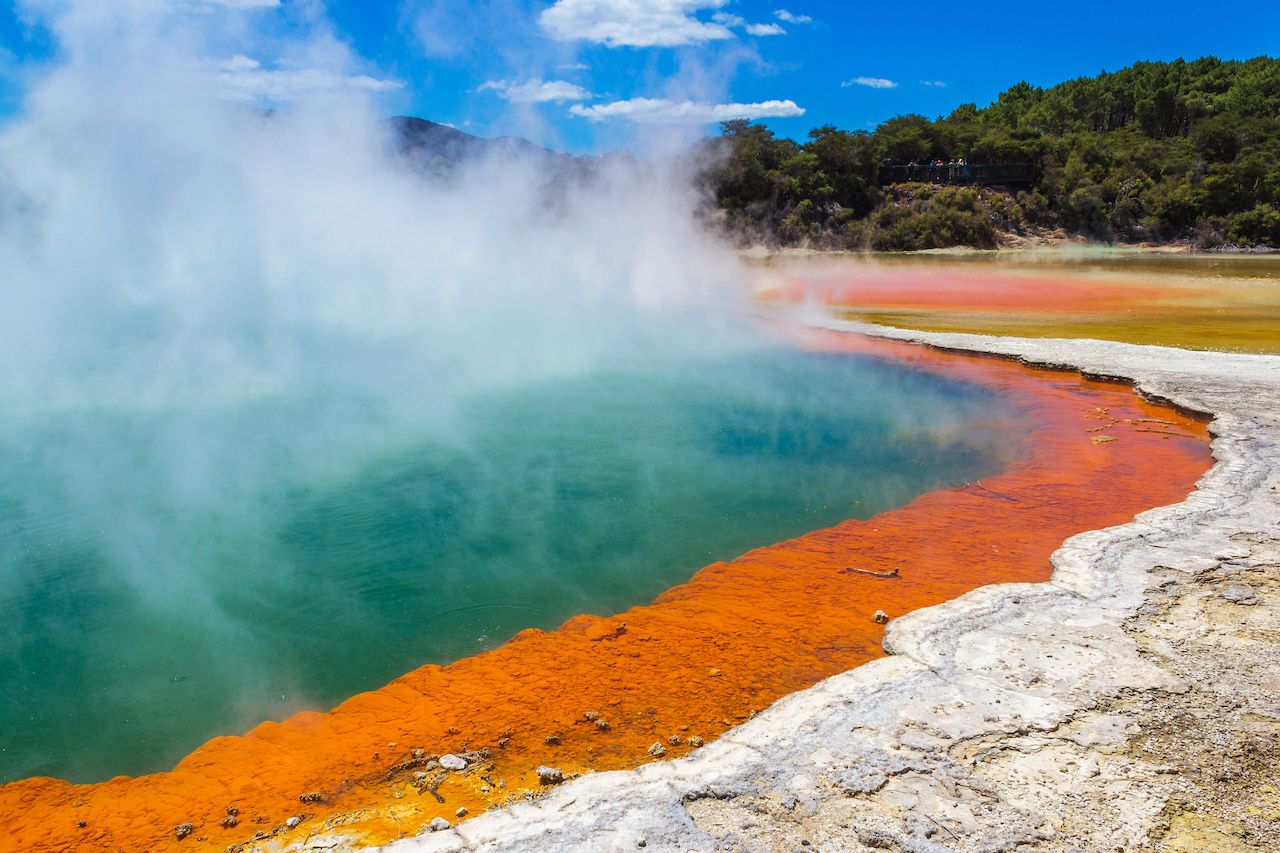
Photo: Sorang/Shutterstock
Powerful geothermal activity in the area has created an array of hot springs and mud pools in and around Rotorua, New Zealand. The downside of all of that geothermal activity is that it causes heavy hydrogen sulfide emissions, which smell like rotten eggs and have earned the city the nickname “Sulfur City.”
Daigo-ji Temple, Kyoto, Japan
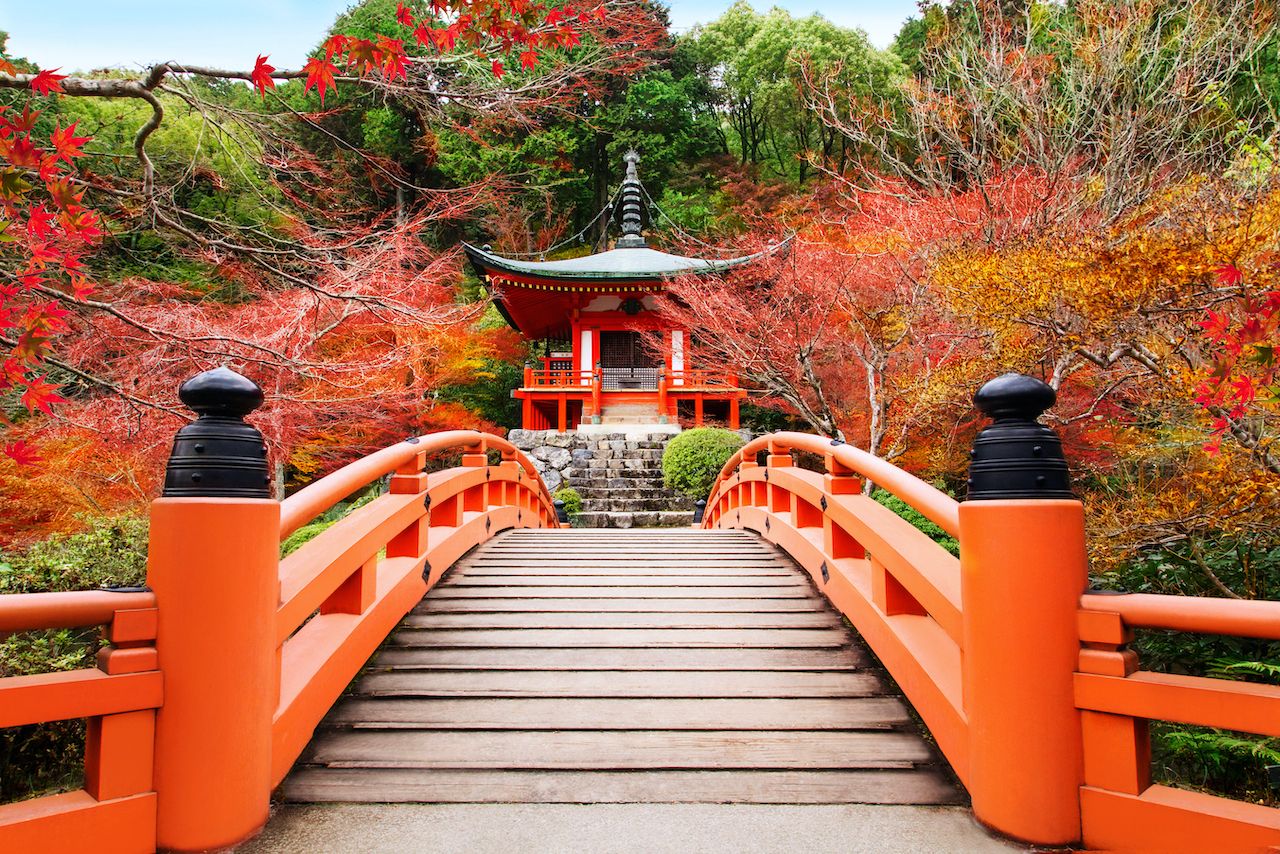
Photo: Moustache Girl/Shutterstock
Daigo-ji Temple, Kyoto, Japan
Panjin Red Beach, China

Photo: riverwill_kay/Shutterstock
Located in the Liaohe River Delta, this beach is home to a massive population of seaweed, which flourishes in the saline-alkali soil. Though the seaweed is green for most of the year, it undergoes its startling transformation to red in the autumn.
Takinoue Park, Hokkaido, Japan
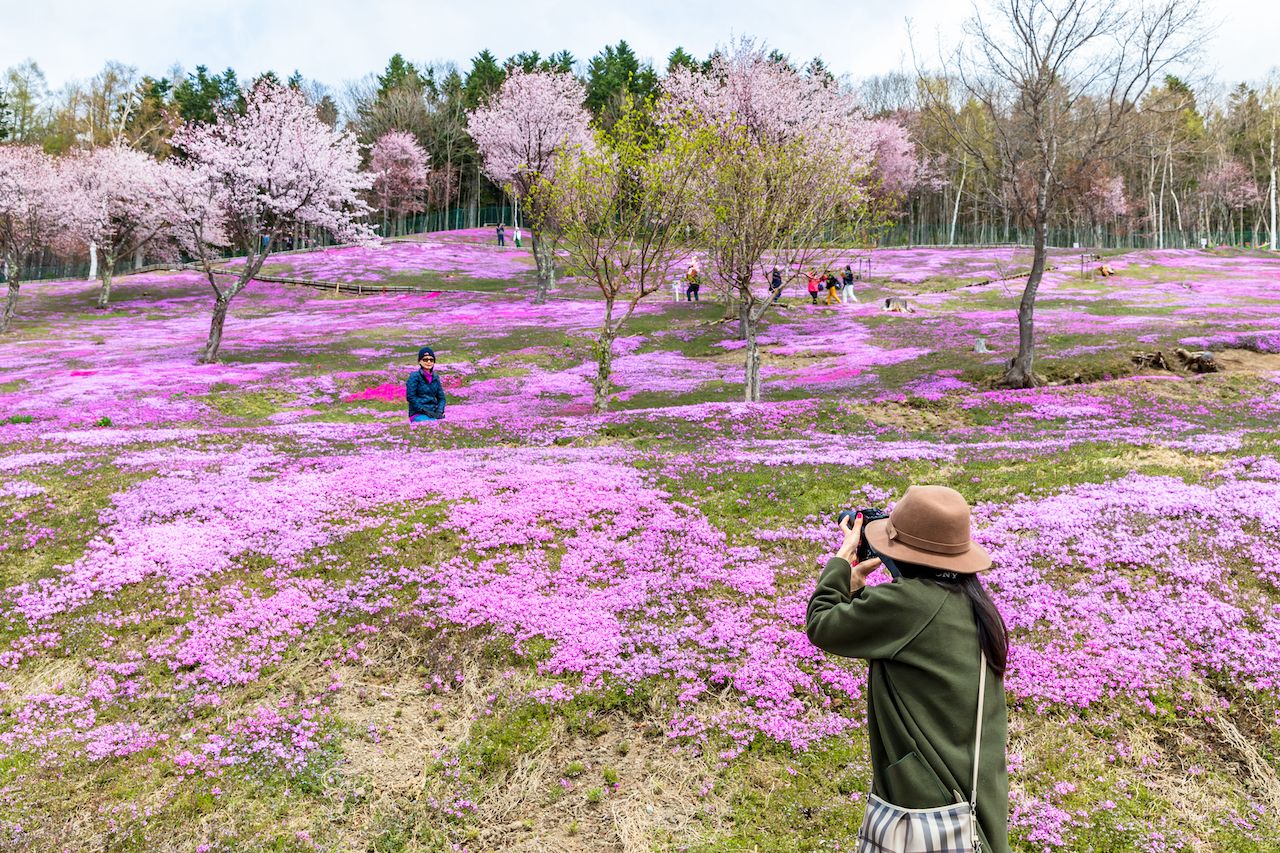
Photo: Suchart Boonyavech/Shutterstock
This 2.5-acre park is famous for the Shibazakura (pink moss) that grows there and blooms in May and June. In fact, there is a dedicated Pink Moss Festival put on by the city of Hokkaido every year.
Santa Marta, Rio de Janeiro, Brazil
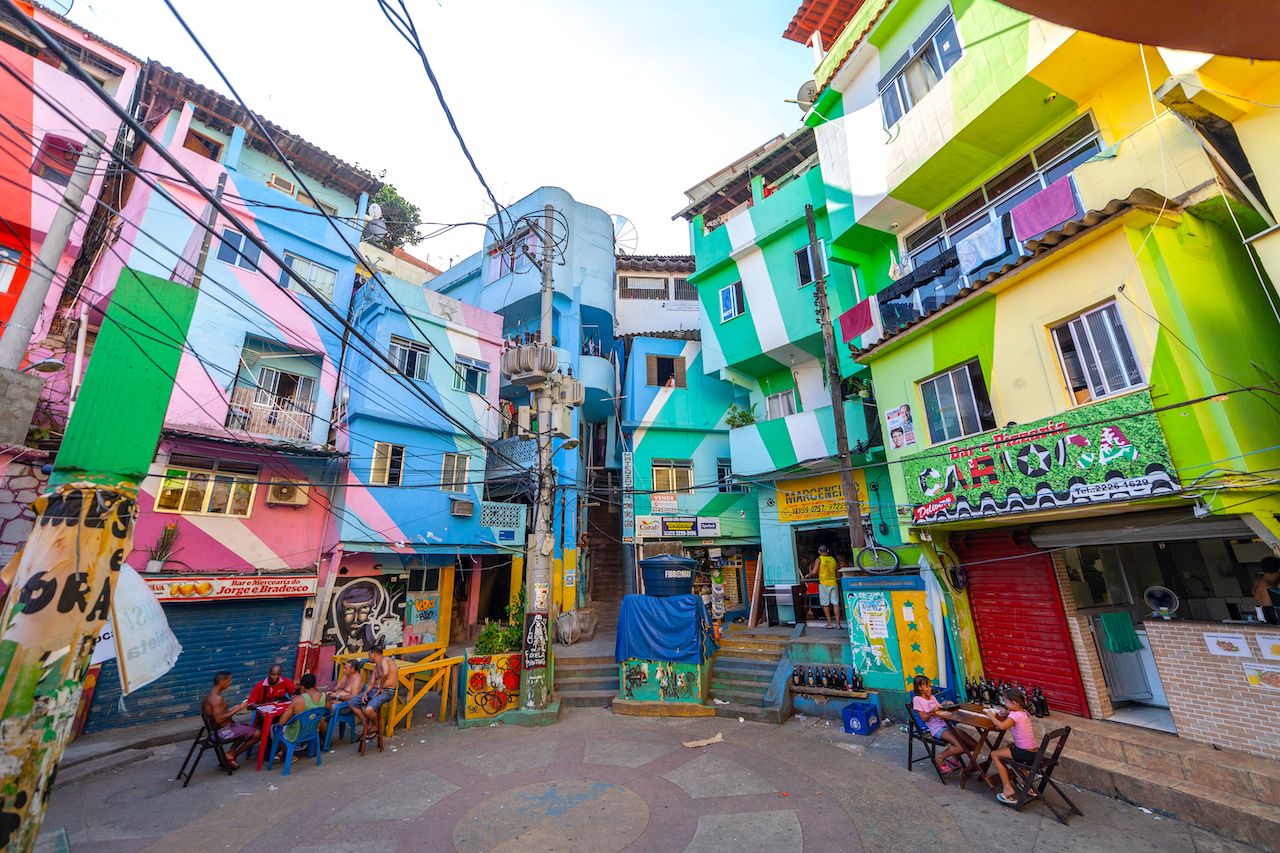
Photo: Maarten Zeehandelaar/Shutterstock
The Favela Painting Project is an ongoing Kickstarter campaign to improve the feel and appearance of Rio de Janeiro’s favelas (shanty towns). Their first (very successful) painting project was executed at Santa Marta, and they continue to recruit local youths to help beautify the city.
Annual Umbrella Installation, Agueda, Portugal
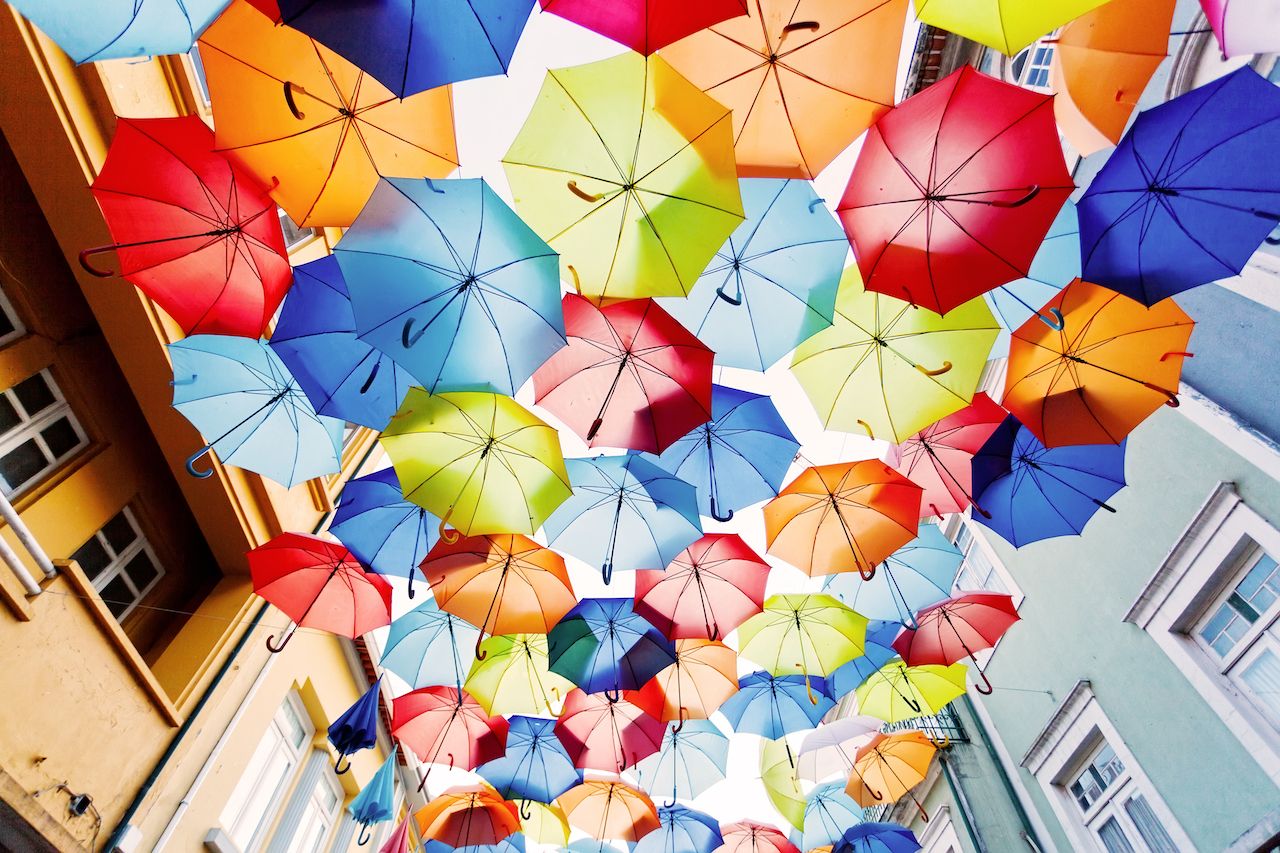
Photo: Shchipkova Elena/Shutterstock
In what has become a yearly occurrence, Umbrella Sky Project installs a canopy of brightly colored umbrellas over the streets of Agueda from July to September. Not only do they provide shade from the strong summer sun, but they also add a startling pop of color and a break from the everyday to residents’ lives.
Dendy Street Beach, Melbourne, Australia
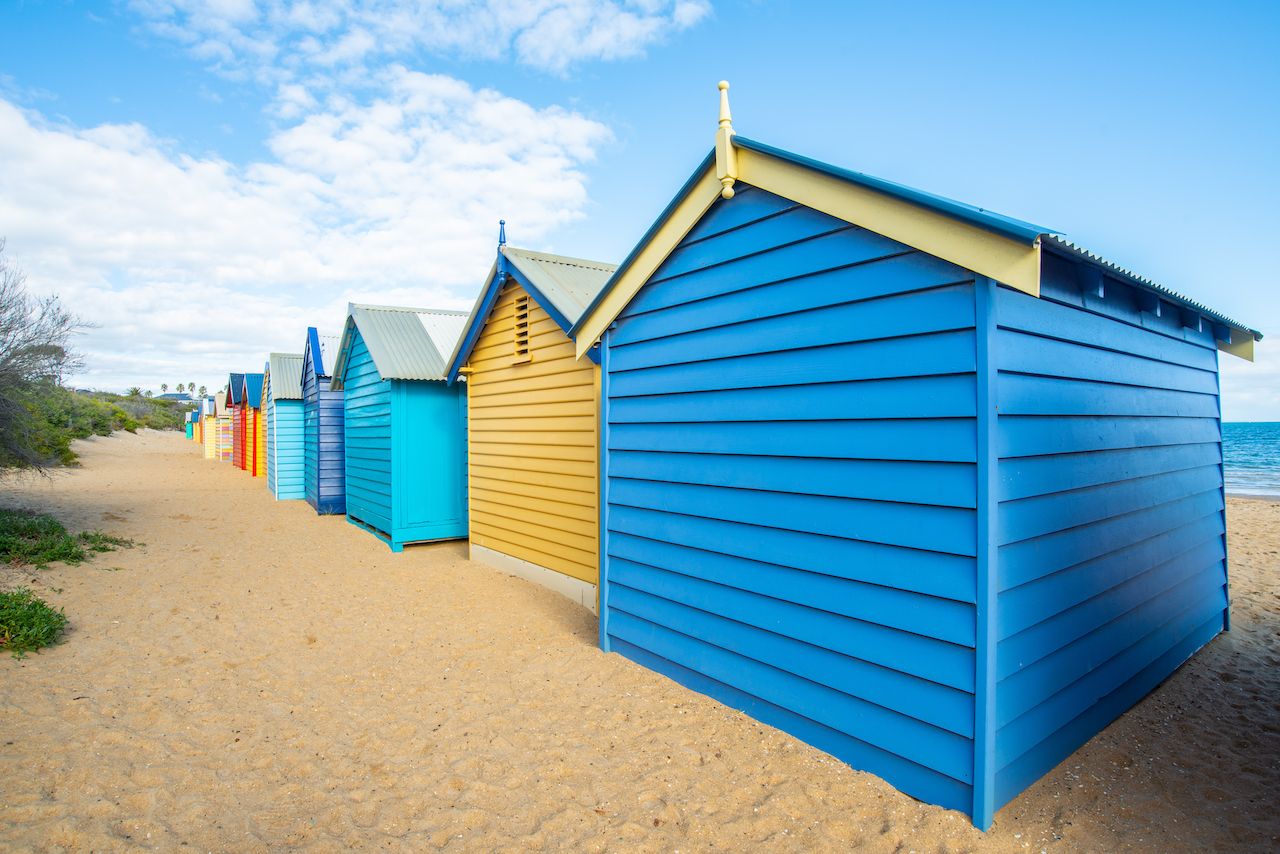
Photo: Boyloso/Shutterstock
The Dendy Street Beach in Melbourne features precisely 82 brightly painted “bathing boxes,” all of the same size and shape, usually used for shelter or for changing in and out of swimwear. All of these boxes retain their original Victorian-era architecture, and are the only surviving such structures close to the city’s business district.
Rainbow eucalyptus groves, Mindanao, Philippines
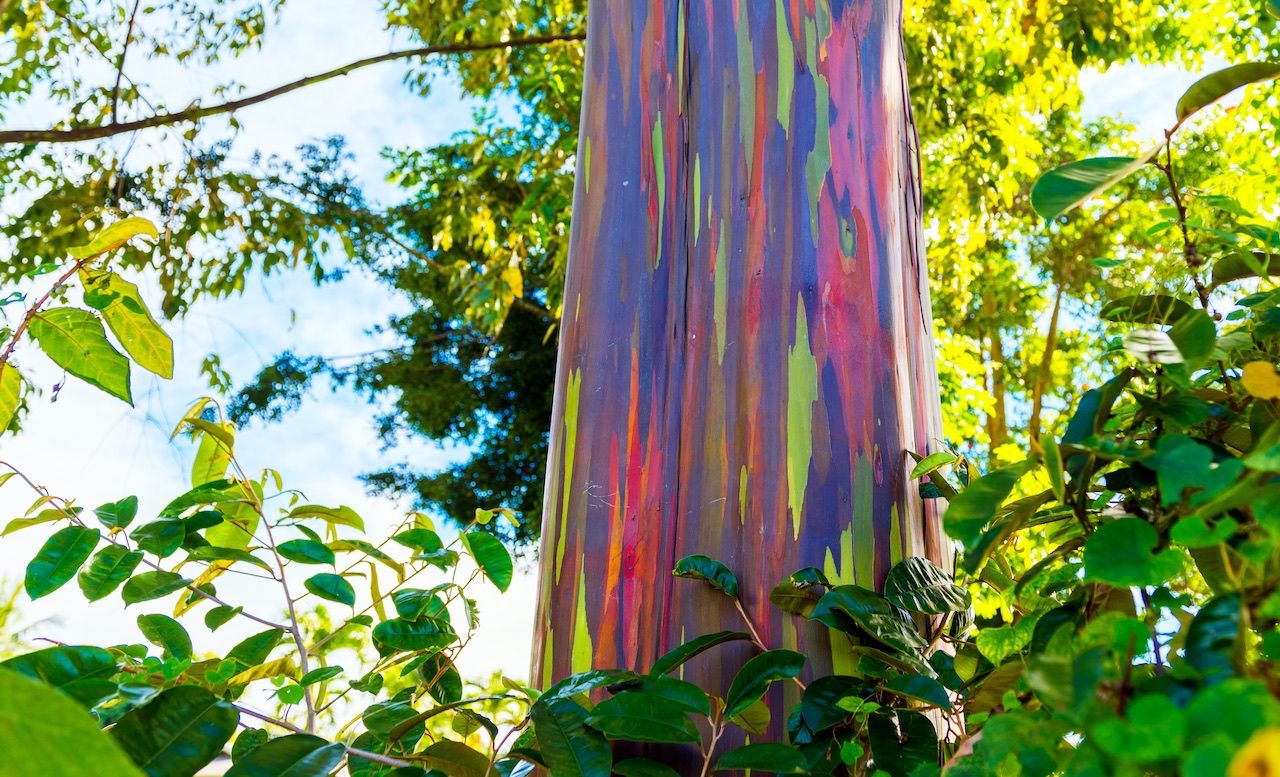
Photo: gg-foto/Shutterstock
Though the outer bark of the rainbow eucalyptus is a brownish-purple, it flakes away to reveal the green inner bark, which matures into blue, then orange, then purple and maroon. This occurs over the whole of the tree, creating a rainbow-like appearance.
La Boca, Buenos Aires, Argentina
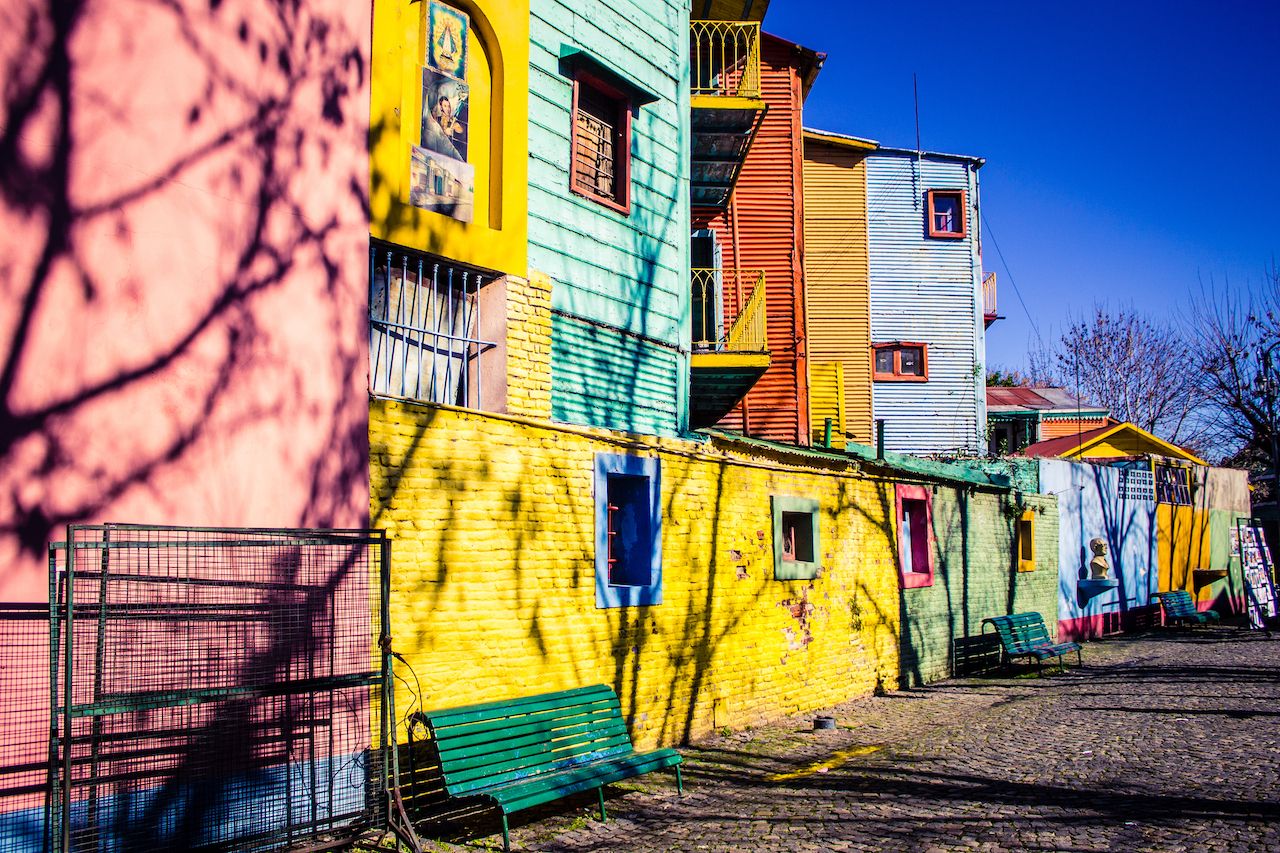
Photo: Samuel Kochhan/Shutterstock
Argentine artist Benito Quinquela Martin spent three years, from 1954-1957, converting this closed-rail-line-turned-landfill into a street museum. Painted in bright colors, the traditional pedestrian alley called Caminito hosts tango performances, as well as artists selling tango-related memorabilia.
Tunnel of Love, Klevan, Ukraine
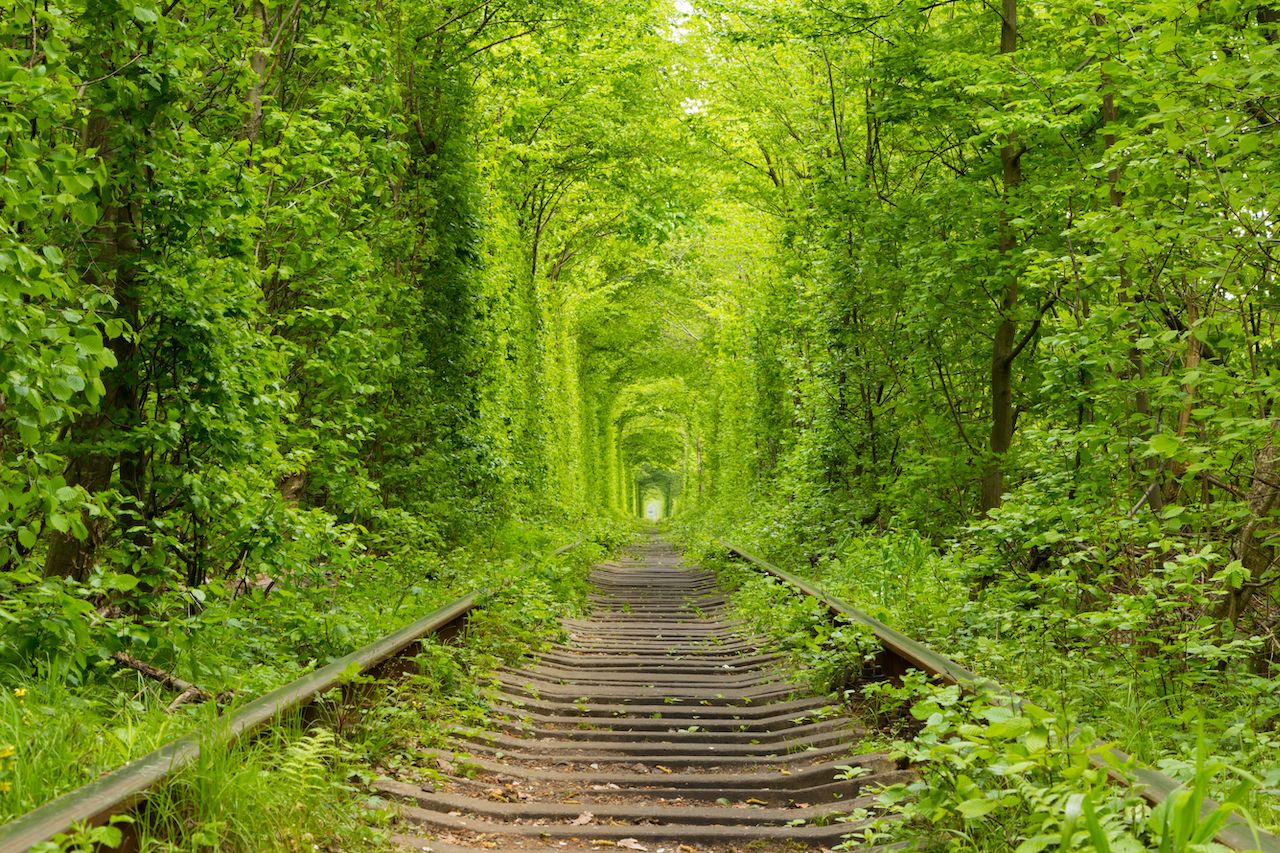
Photo: GoodMan_Ekim/Shutterstock
On the banks of the Stubla River, in the Rivne Oblast province in western Ukraine, lies the small settlement of Klevan. Founded in 1458, and with a population of just 7,470, the town is one of only three “urban-type settlements” in the Rivne Raion district of Rivne Oblast (the other two are Kvasyliv and Orzhiv). The popular “tunnel of love” is actually tree coverage over a railroad track, formed by the passage of trains through the trees.
Longyearbyen, Norway
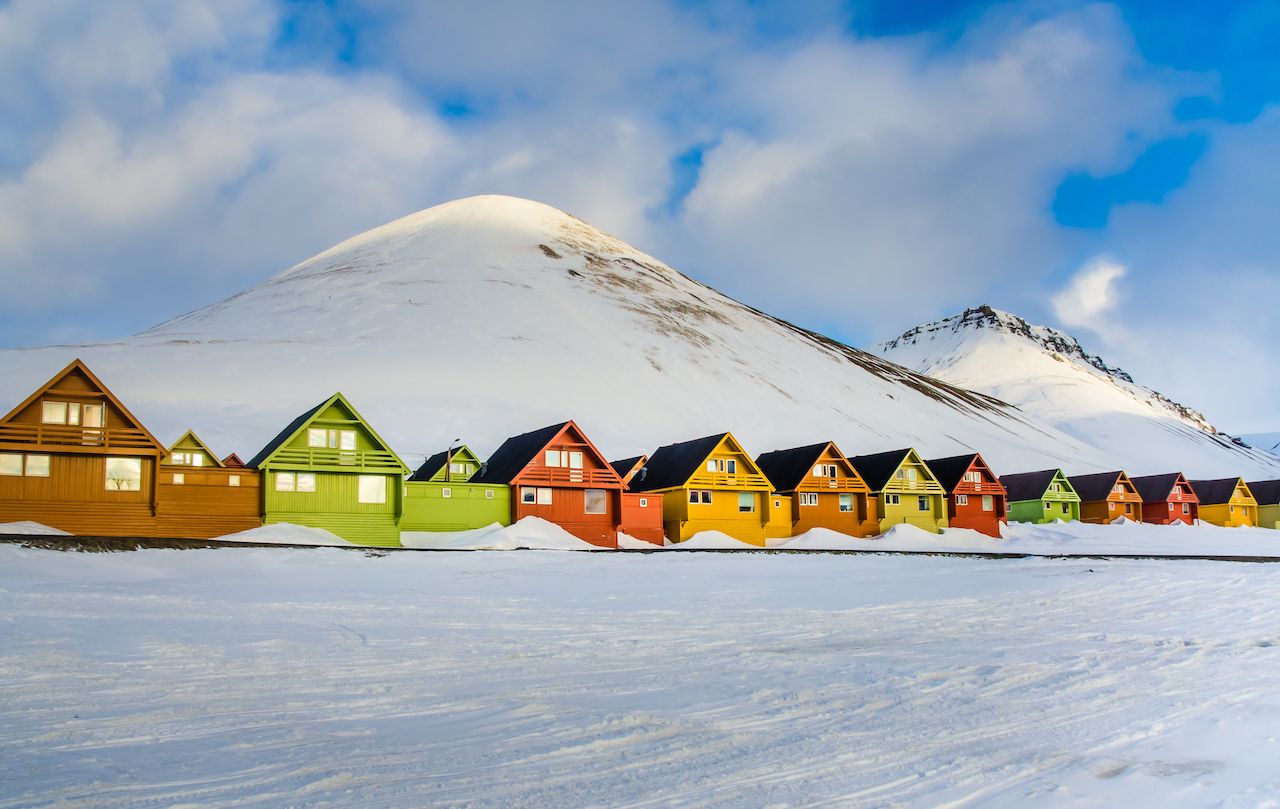
Photo: LouieLee/Shutterstock
Not only is Longyearbyen the world’s northernmost town, but also the world’s northernmost settlement with greater than 1,000 residents. In mid-July, temperatures may get as high as 45˚F, but for most of the year, it stays resolutely within the single digits.
Shibuya, Tokyo, Japan
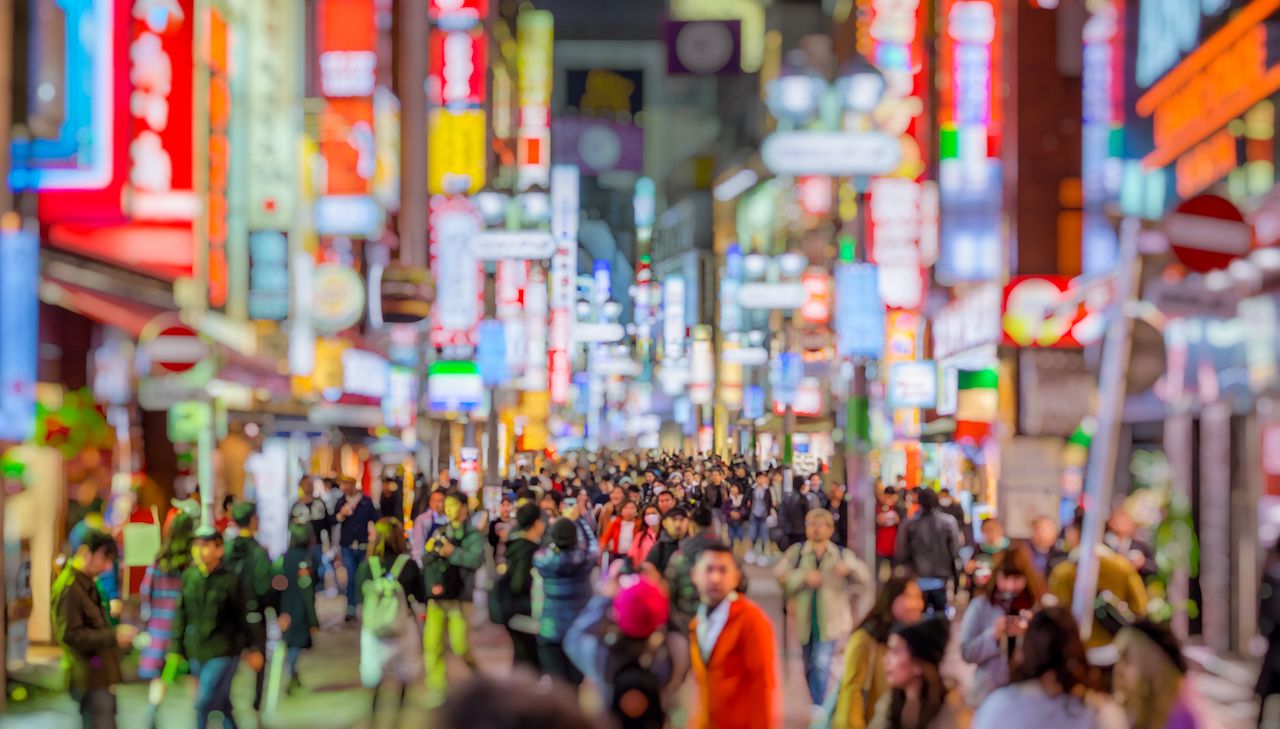
Photo: siriwat sriphojaroen/Shutterstock
Known as the fashion center of Japan, Shibuya is renowned for its incredibly bright and colorful nightlife. Aside from the thousands of neon signs, Shibuya is also home to Shibuya Crossing, the busiest crosswalk in the world–traffic is regularly stopped from all directions as thousands of pedestrians flood the entire street.
Salar de Uyuni, Bolivia

Photo: Rickson Davi Liebano/Shutterstock
These 4,086 square miles in southwest Bolivia make up the world’s largest salt flat. The vast and incredibly flat plains and clear skies of Salar de Uyuni make it both one of the most famous “natural mirrors” on the planet, as well as an ideal altimeter calibration site for Earth observation satellites.
Jodhpur, India
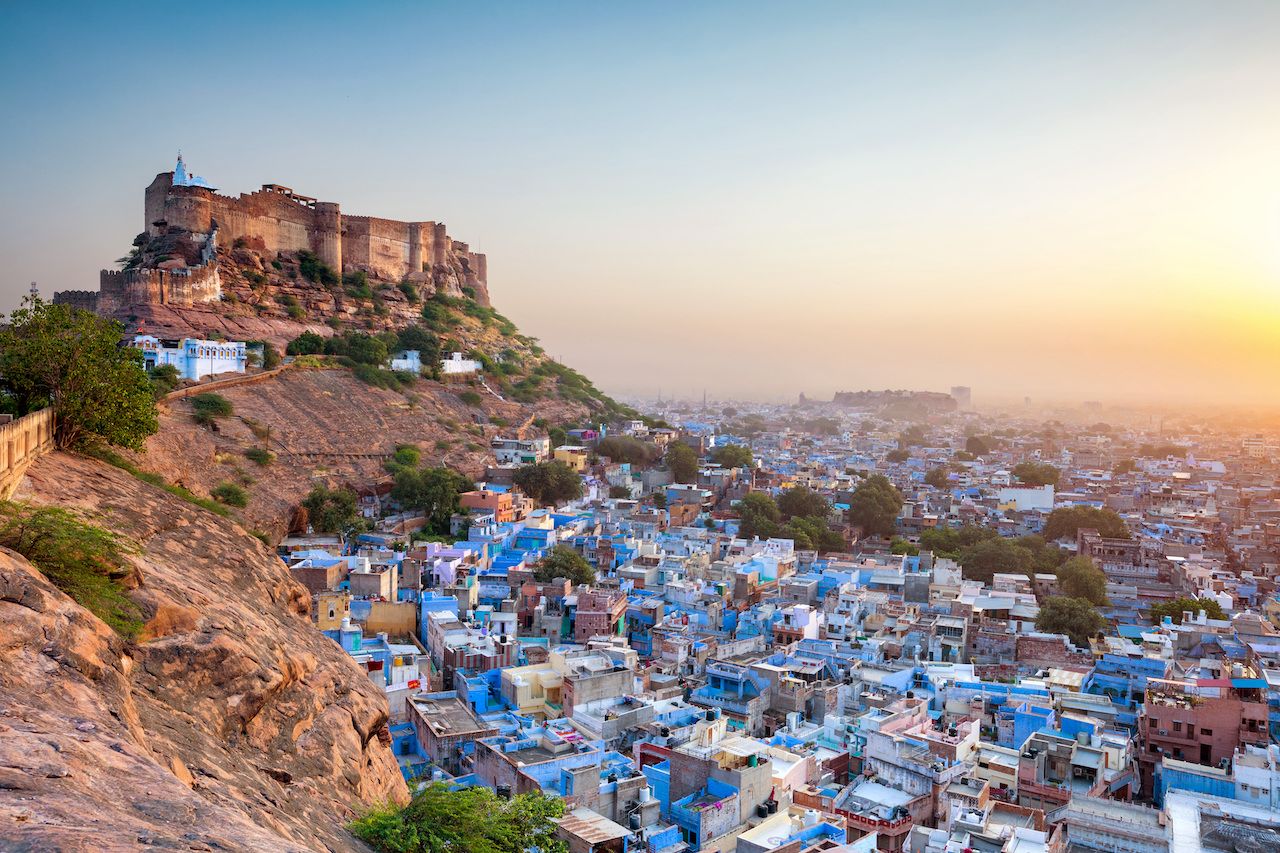
Photo: Sean Hsu/Shutterstock
Founded in 1459, the “Sun City” of India is another curiously blue construct on the edge of the desert. The blue paint practice is thought to have originated from Brahmins (high priests in the Indian caste system) painting their homes blue to distinguish them as a holier status than the surroundings, a trend that then caught on for the balance of the city.
Caño Cristales River, Colombia

Photo: Shutterstock/Sunsinger
Also known as “The River of Five Colors” or “The Liquid Rainbow,” the colors of this South American river are primarily due to a dense population of corals and aquatic herbs. However, due to its high concentration of sedimentary minerals, Caño Cristales is completely devoid of fish.
St. John’s, Newfoundland, Canada
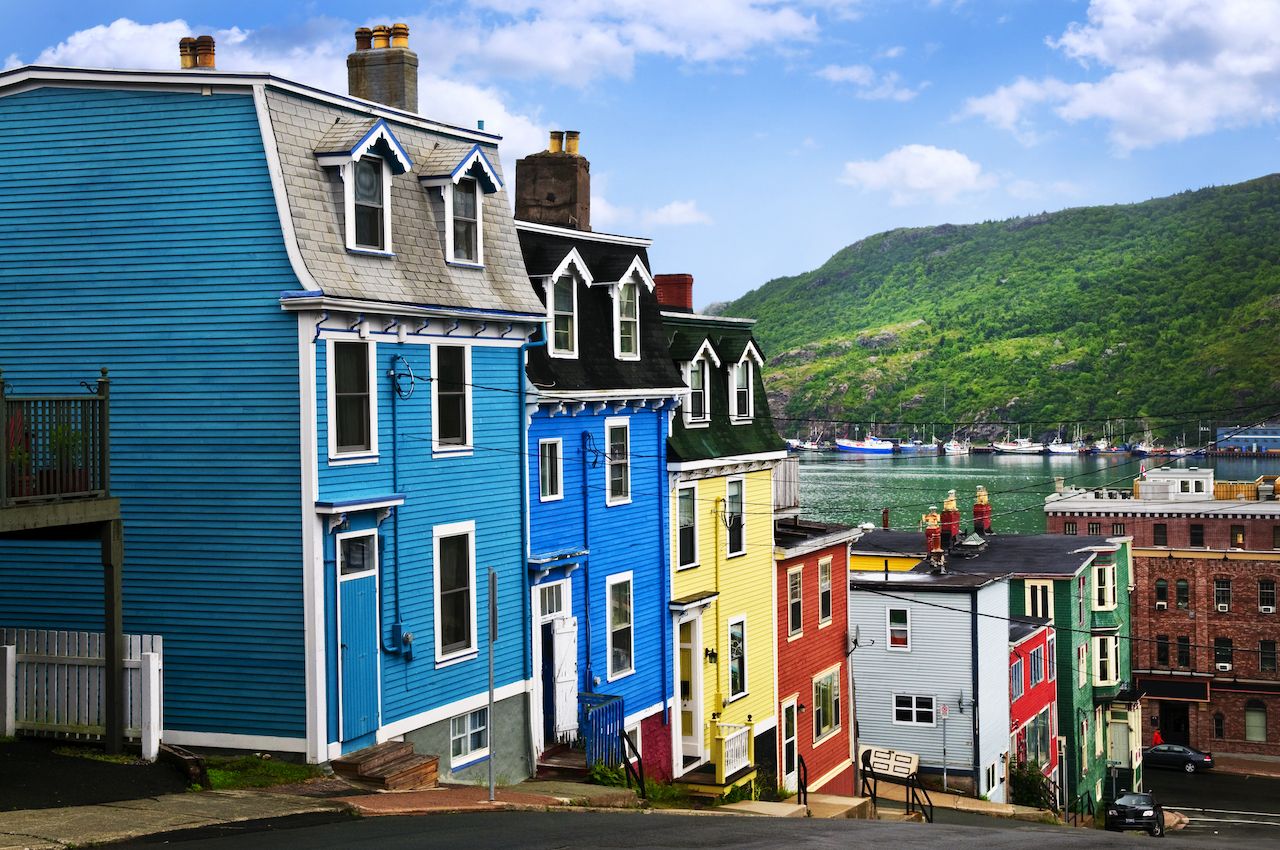
Photo: Elena Elisseeva/Shutterstock
With its hilly terrain and labyrinth of streets, this “San Francisco of Canada” has been inhabited from the 16th century onward. The majority of the city is protected as a historical landmark, as it is considered the oldest English settlement in North America to have expanded into a city.
Júzcar, Spain
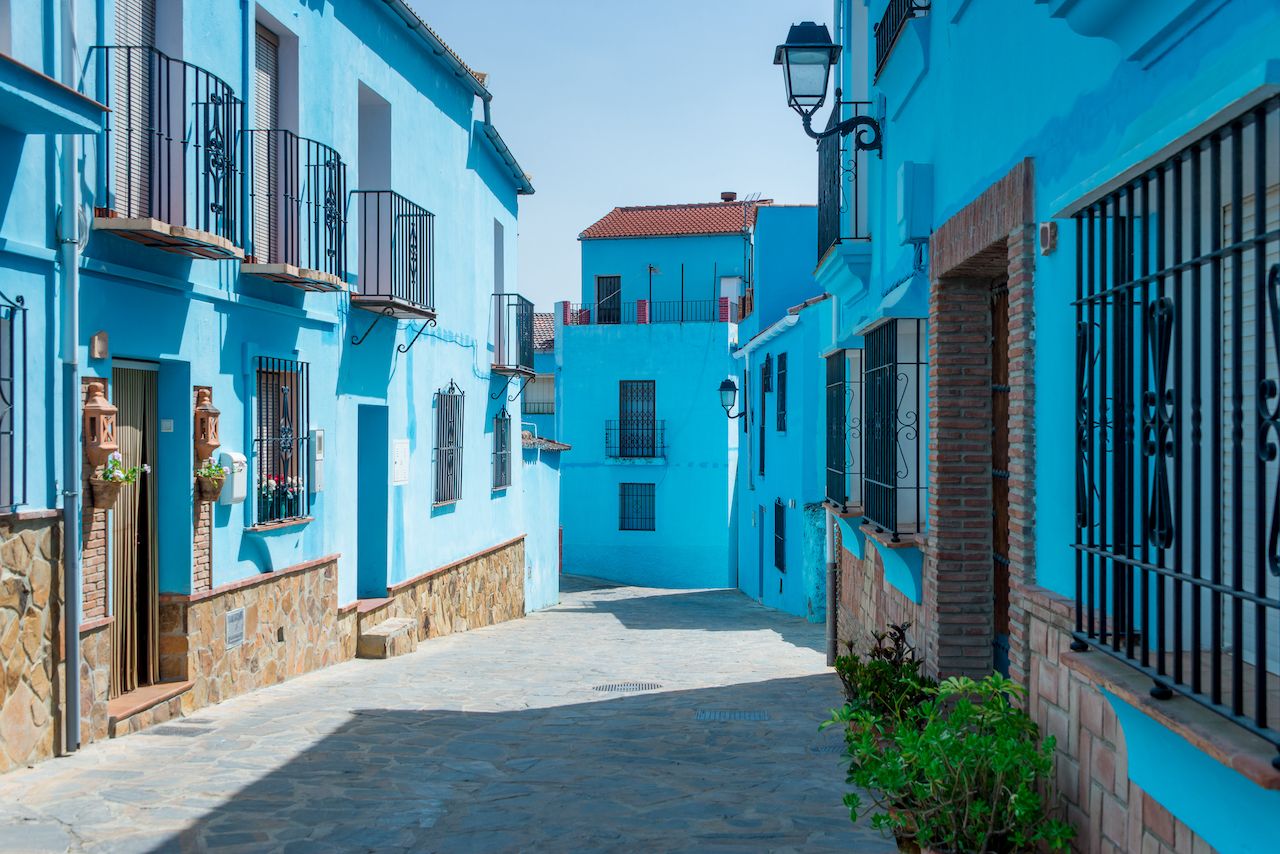
Photo: cineuno/Shutterstock
In the province of Málaga in southern Spain, Júzcar was originally one of the “White Towns of Andalusia” until 2011, when Sony Pictures used 1,100 gallons of blue paint to cover the town as a promotion for the upcoming Smurfs movie. This increased tourism to the location by about 533% in the 6 months after the stunt, and despite Sony’s offer to return the town to its historic white, residents voted to keep it blue.
Lavender fields, Provence, France

Photo: iacomino FRiMAGES/Shutterstock
Huge fields of lavender are grown and harvested every year in France and the UK. Provence in southeastern France is particularly renowned for its geometric purple landscapes, blooming in late June and early July.
Pelourinho, Salvador, Brazil
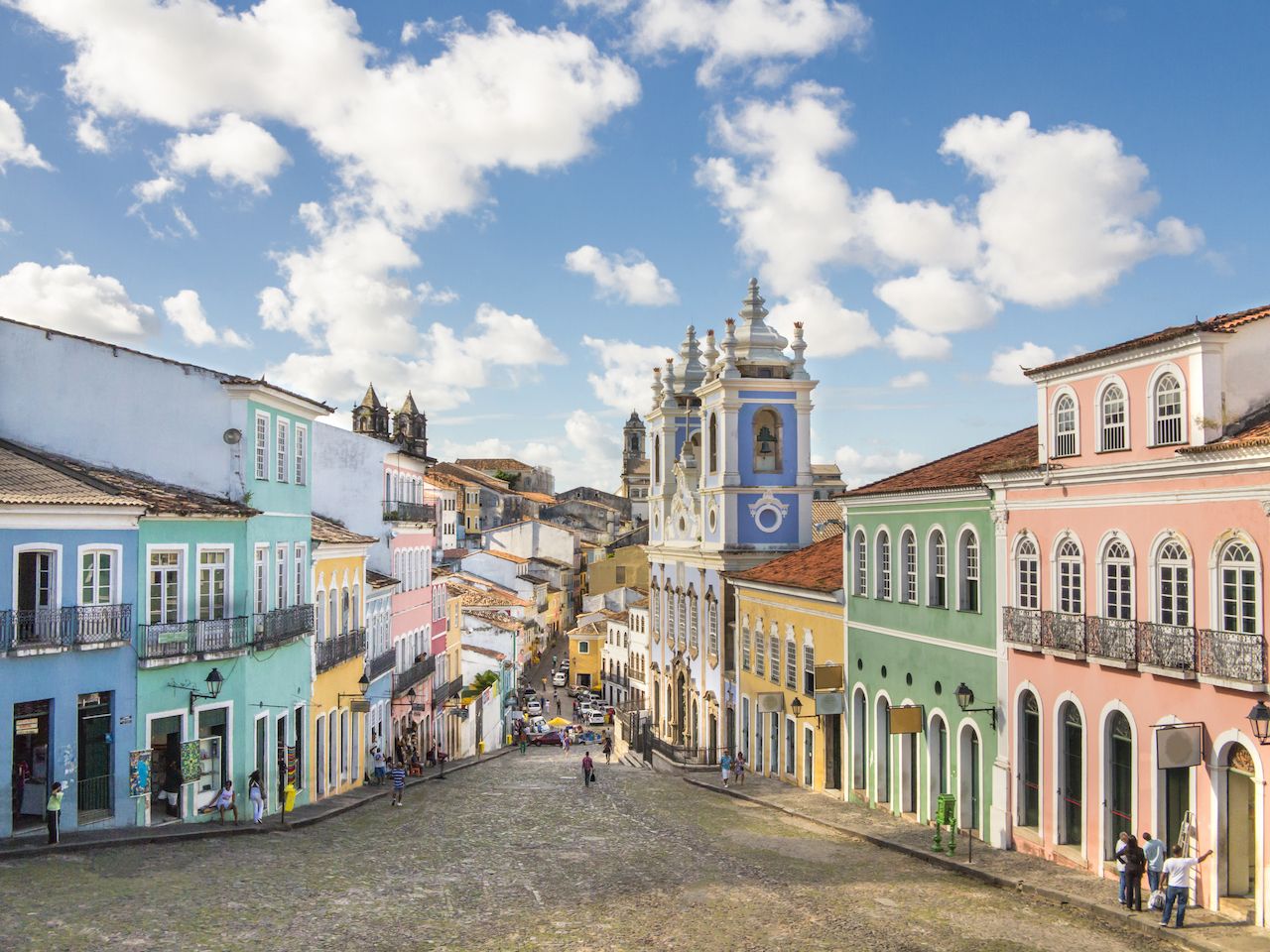
Photo: hbpro/Shutterstock
Located at the center of the historic district in Salvador, Bahia, Pelourinho was painted as part of a cultural revival project. Today, it is a center for the arts, featuring daily events like musical performances, dances, short plays, and live band practices as part of the Pelourinho Night and Day Project.
Reed Flute Cave, Guilin, China

Photo: DnDavis/Shutterstock
This natural limestone cave in China is over 180 million years old (though the colorful lighting is a bit more recent). Fun fact: Ink inscriptions on the cave walls have been dated all the way back to 792 AD, and tell us that the cave was an attraction even then.
Bo-Kaap, Cape Town, Africa
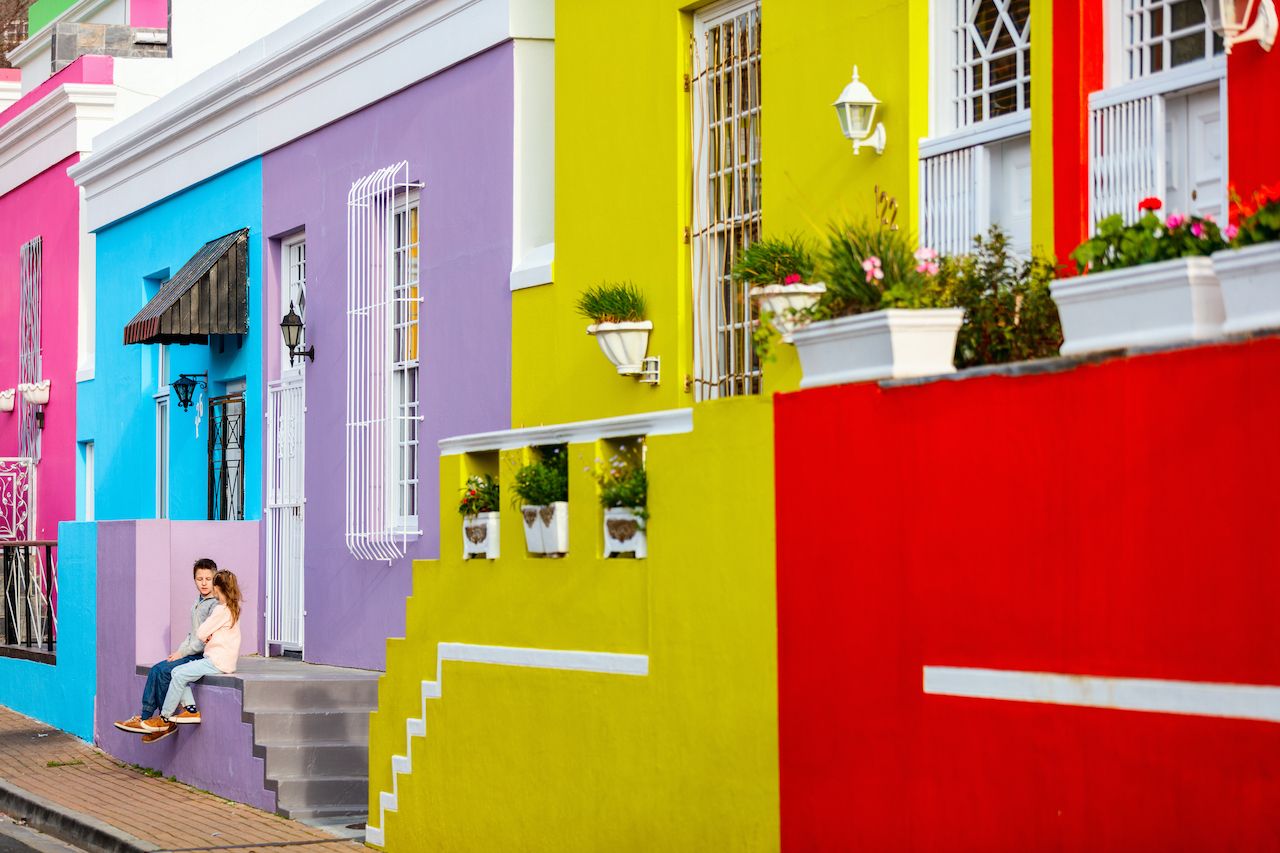
Photo: BlueOrange Studio/Shutterstock
Formerly the Malay Quarter, Bo-Kaap was one of the original hubs of Malay culture, the original movement to bring Islam to South Africa. Today, property in Bo-Kaap is a hot commodity, with increasing gentrification stemming from the recent economic prosperity of Cape Town.
Binalong Bay, Bay of Fires, Tasmania
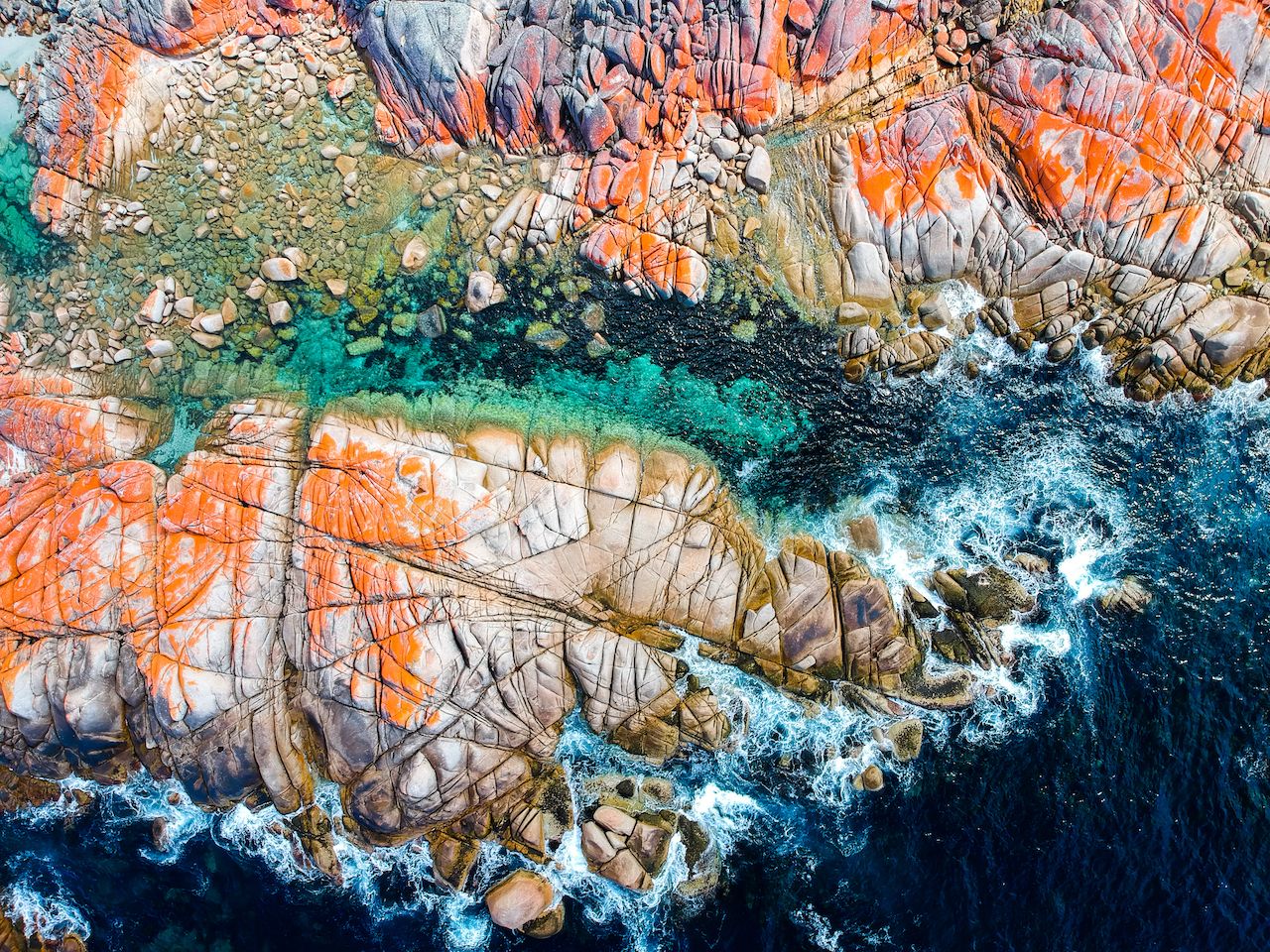
Photo: Tom Burden/Shutterstock
With white sand beaches and clear turquoise water, this small bay is set apart from thousands of other beaches in the world by its incredible bright orange rocks; their coloration is due to a very persistent species of lichen.
Wroclaw, Poland
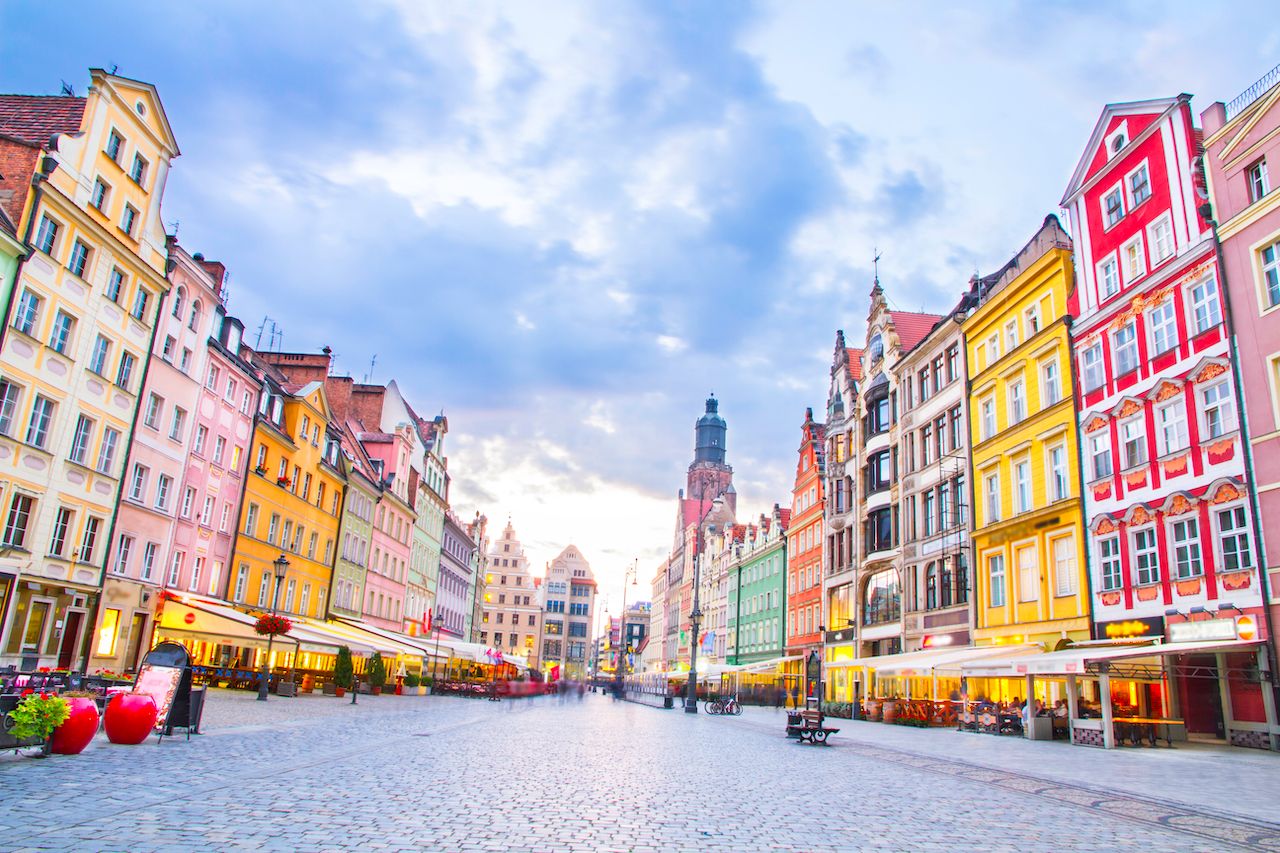
Photo: Whatafoto/Shutterstock
The largest city in western Poland, Wroclaw has historically changed hands several times, from the Kingdom of Poland, to Bohemia, the Austrian Empire, Prussia, Germany, and back to Poland in 1945. It is also a regular host for major European and world sporting events, and has been named a “European Capital of Culture” for 2016.
Saint Basil’s Cathedral, Moscow
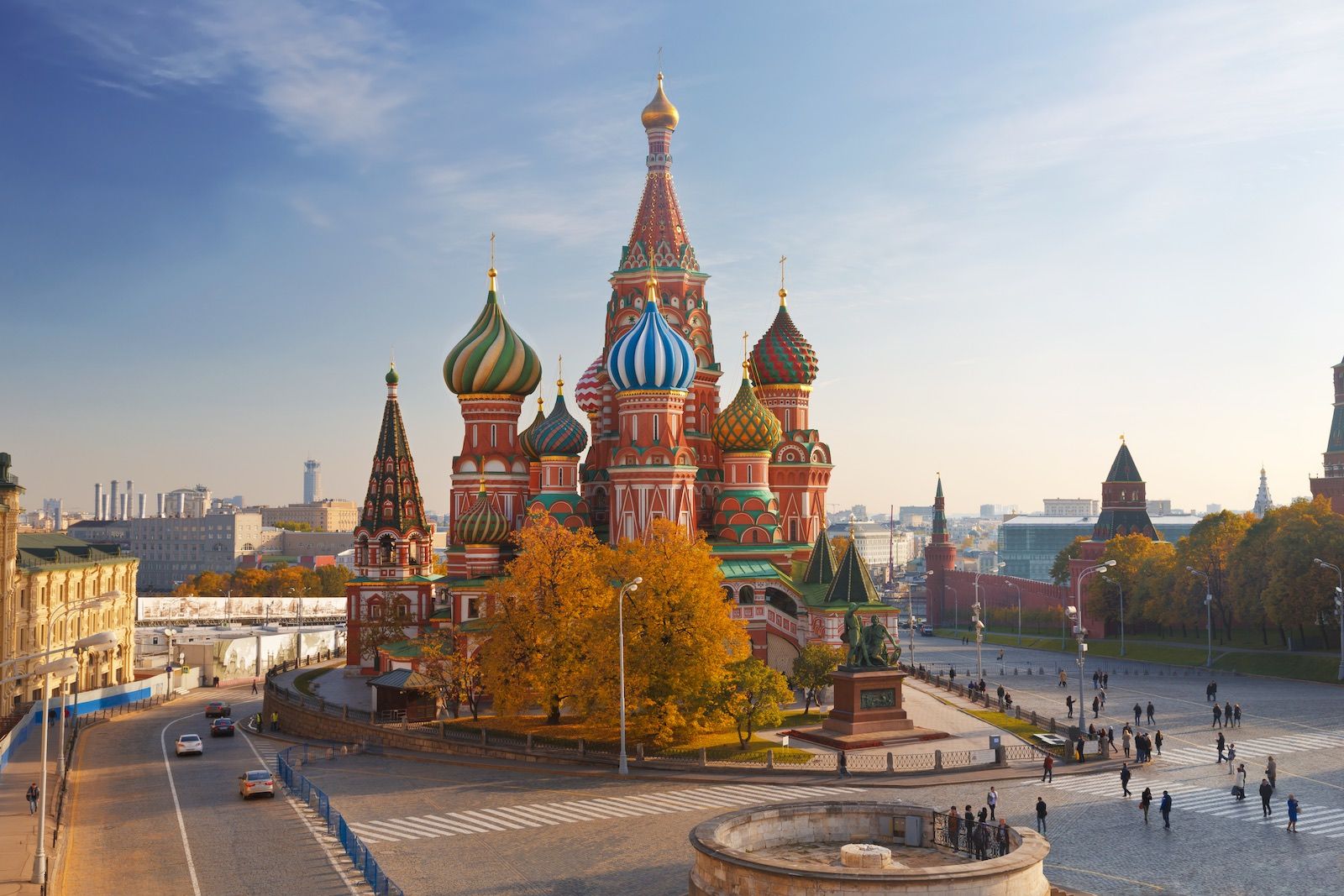
Photo: volkova natalia/Shutterstock
Also known, among many names, as “the Cathedral of the Protection of Most Holy Theotokos on the Moat,” Saint Basil’s Cathedral was constructed under Ivan the Terrible over the course of 1555-1561. The cathedral, marking the geometric center of Moscow, took on its vibrant hues starting in the 17th century, when bright colors became fashionable among the Russian people.
Bonn, Germany

Photo: S.Peace/Shutterstock
Founded by the Romans in the first century BC, Bonn is one of the oldest cities in Germany, and is located in North Rhine-Westphalia on the banks of the Rhine River. The street pictured, known as Heerstrasse Bonn, was originally built to enable rapid military mobilization through the city. Today, the street is a popular tourist destination for its iconic cherry blossoms, with the annual Kirschblütenfest (Cherry Blossom Festival) occurring there mid-April and signaling the arrival of springtime.
Willemstad, Curacao
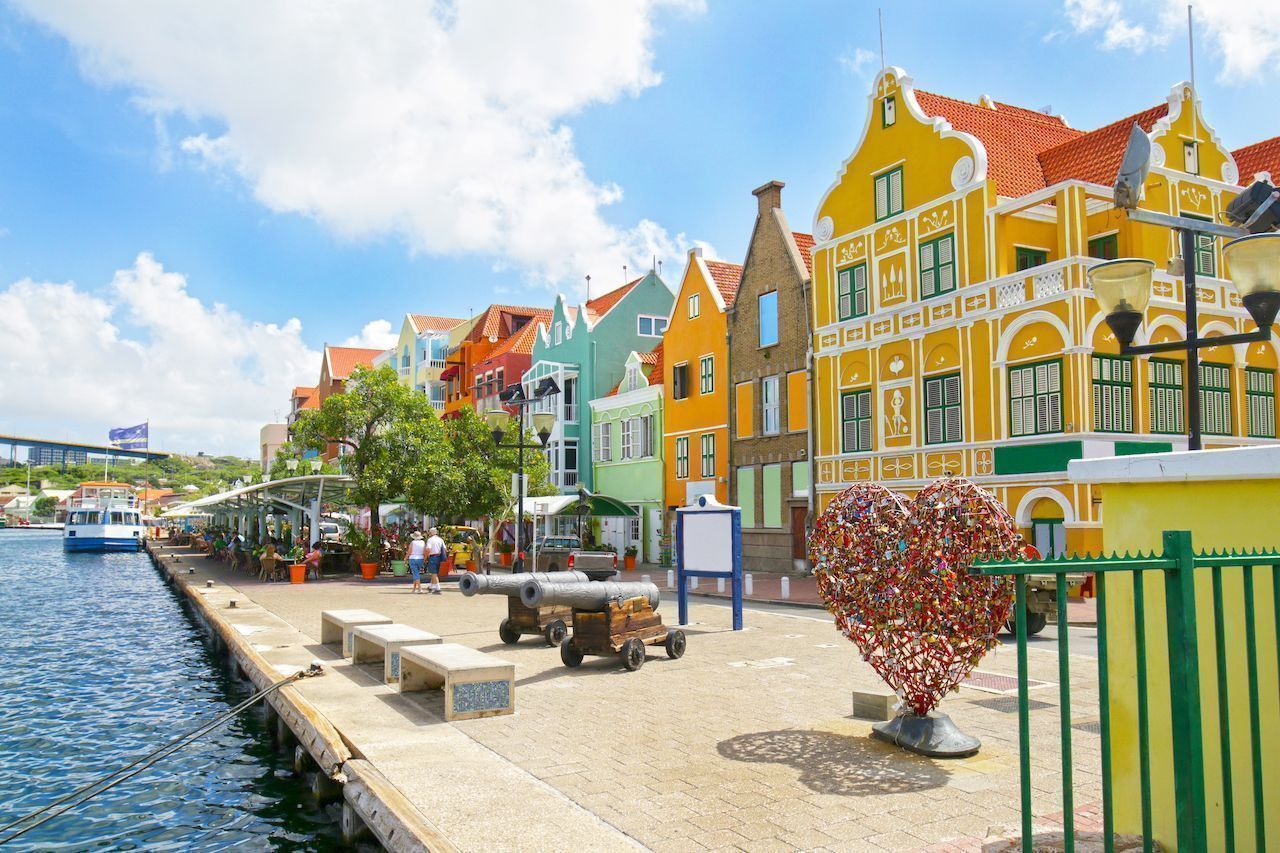
Photo: Birdiegal/Shutterstock
Situated on the southern Caribbean island of Curacao, this harbor-accessed city center is both Curacao’s capital, as well as a UNESCO World Heritage Site. Established in 1634, the city is known for its Dutch architecture and reputation as the largest oil refinery in the Caribbean (formerly the world).
Guanajuato City, Guanajuato, Mexico
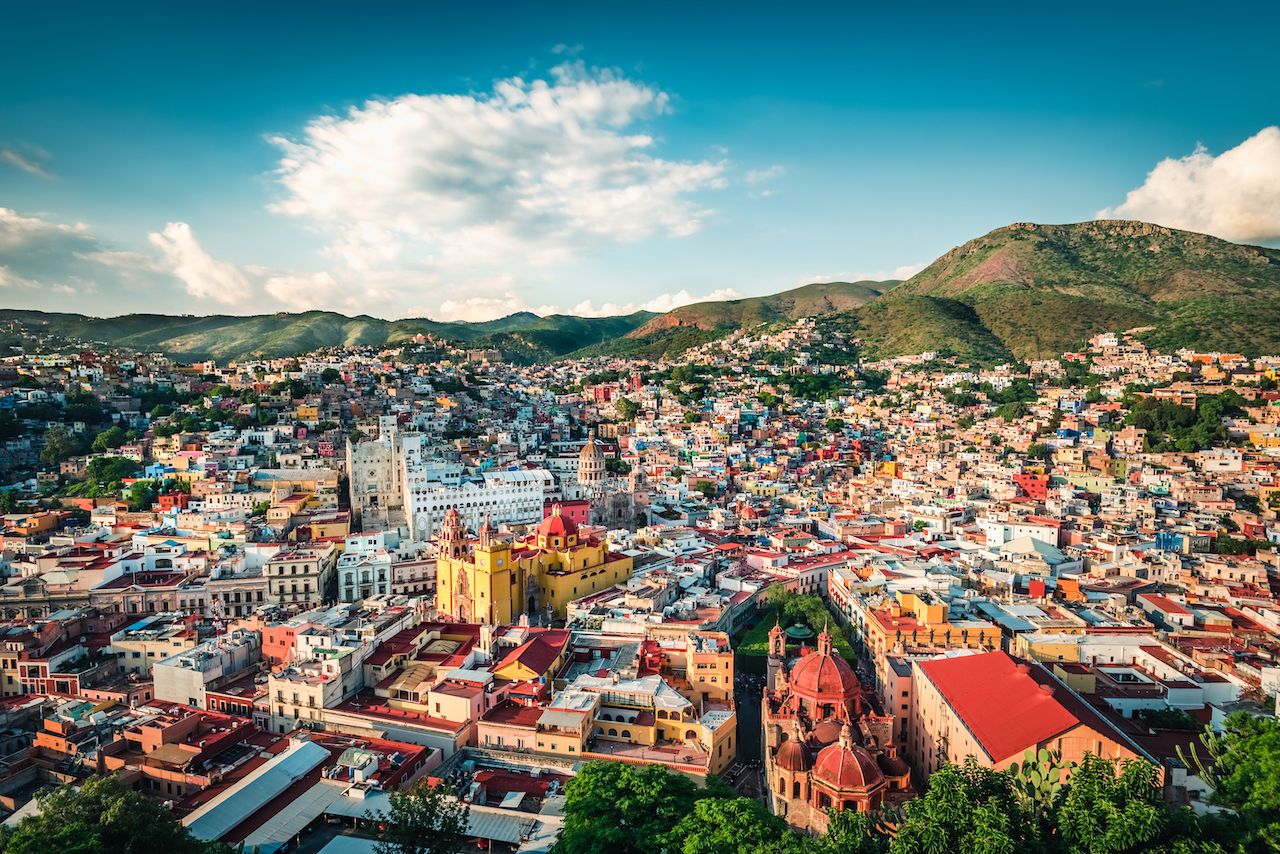
Photo: Raul Luna/Shutterstock
Known as one of the most colorful cities in Mexico, Guanajuato has a long history of art (as the birthplace of Diego Rivera, and home of Jose Chavez Morado and Olga Costa). It is also known for its Majolica pottery, done in the traditional Spanish style for the past 400 years, and the brightly hand-painted ceramics of Tarandacuao, located in Guanajuato state’s lowlands.
Great Barrier Reef, Queensland, Australia
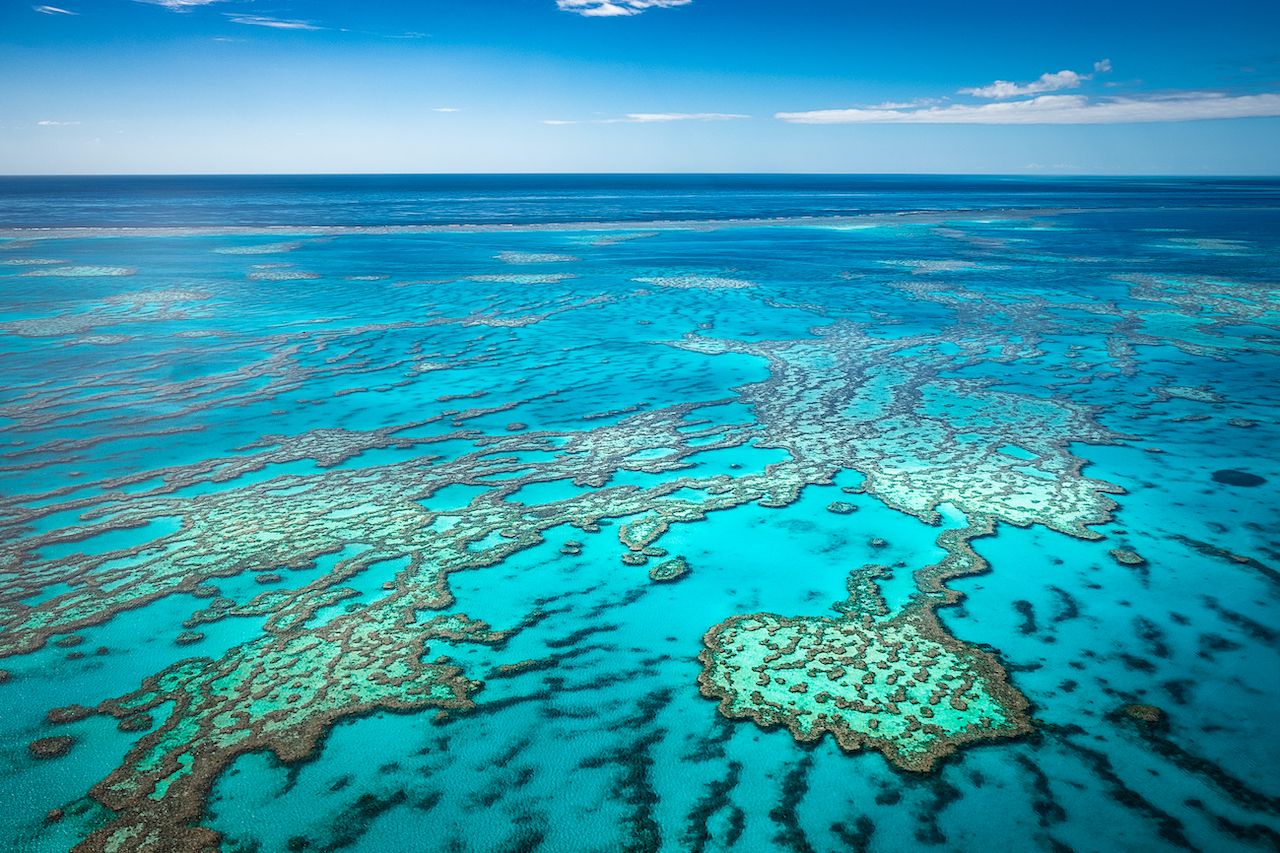
Photo: I Shafiq/Shutterstock
The largest reef system in the world, the 2,900 individual reefs and 900 islands span some 133,000 square miles, and are home to more than 1,500 species of fish and countless other species of marine life. Despite extensive conservation efforts, climate change, pollution from farm runoff, invasive species (the crown of thorns starfish), and overfishing still present major threats to the reef system.
Dallol, Ethiopia
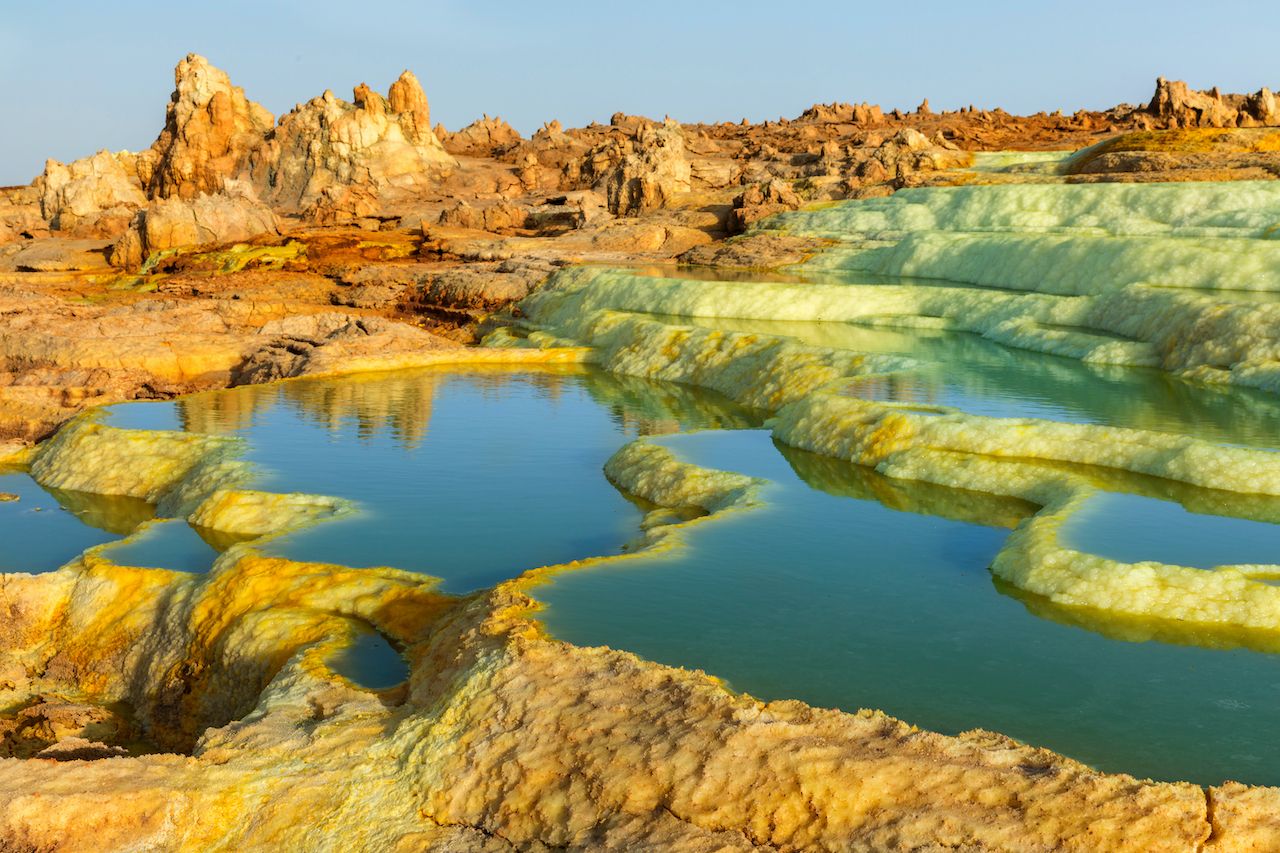
Photo: Manamana/Shutterstock
In the Danakil Depression (a crater from a volcanic explosion) this alien landscape was formed by Miocene salt deposts and hydrothermal activity. The constant geothermal activity forces geysers and hot springs up from below the Earth’s surface, which leak brine and acidic liquids. “Dallol” or “dissolution” refers to the green acid ponds (pH <1), sulfur, and iron oxide deposits, and comes from the Afar people native to the Horn of Africa.
Dubai Miracle Garden, Dubai
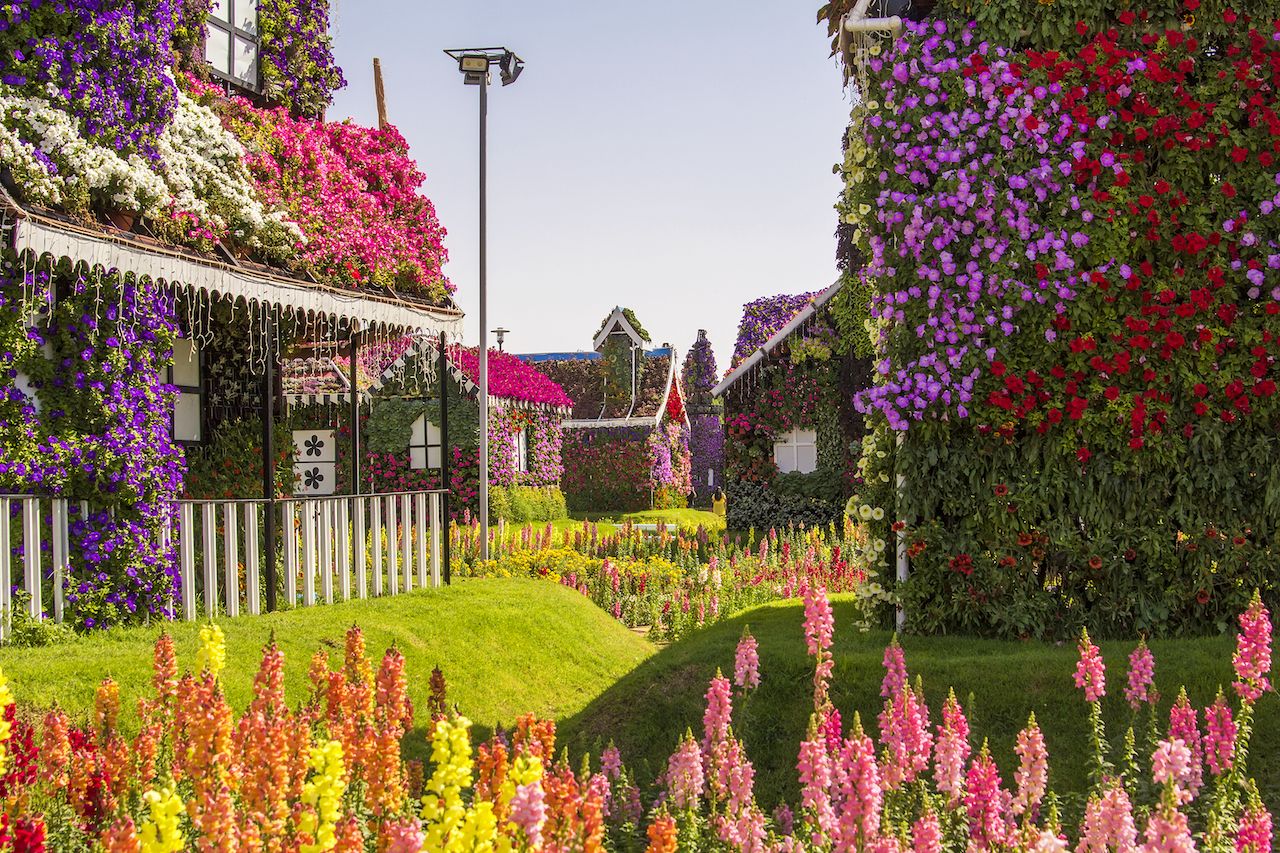
Photo: alfaori/Shutterstock
Now the “world’s biggest natural flower garden,” this 72,000 sq. foot garden contains over 45 million flowers, and is maintained through drip irrigation and the recycling of waste water.
Chamarel, Mauritius
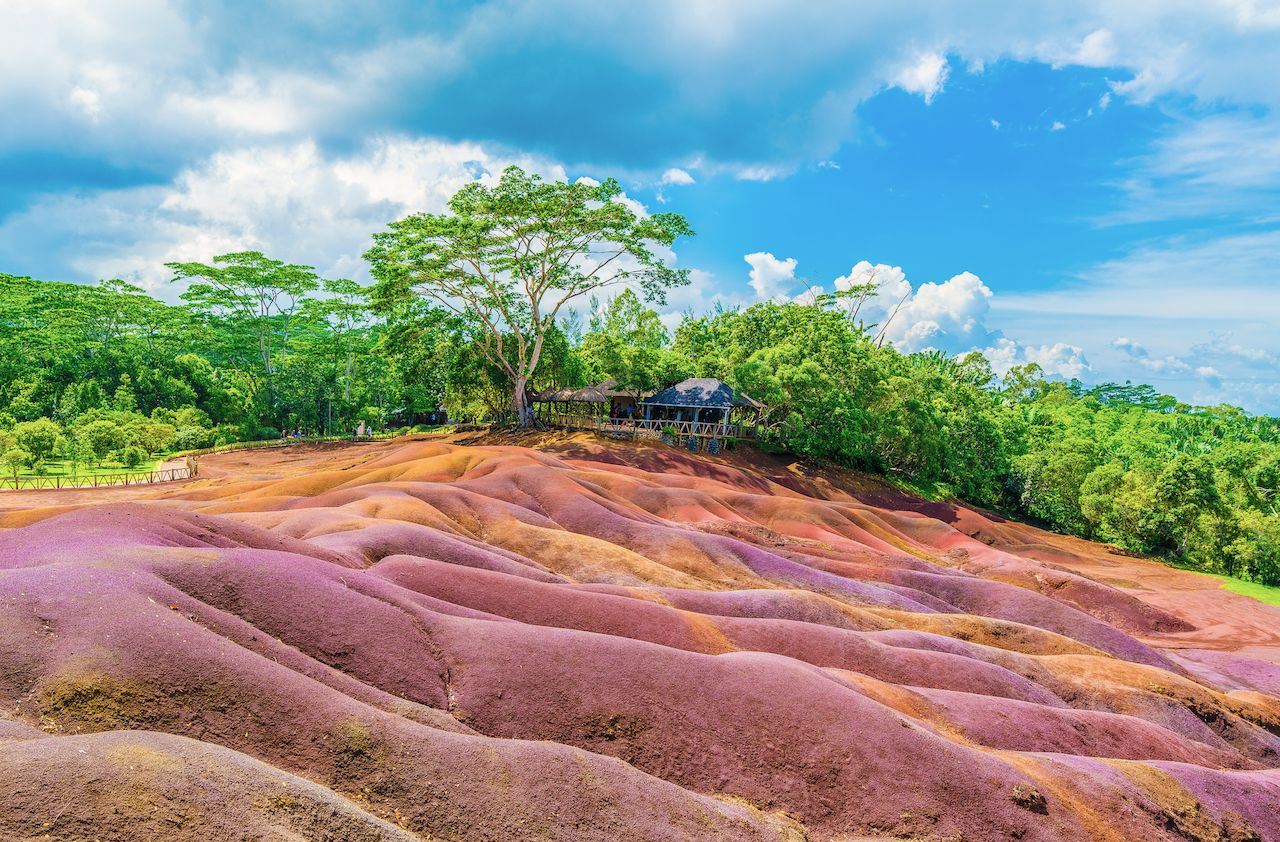
Photo: Balate Dorin/Shutterstock
Home of the “seven coloured earths” phenomenon still not fully explained by science, the multi-colored dunes at the village of Chamarel are one of the only places in the world where you can see as many as seven colors at once in nature.
Holi, worldwide
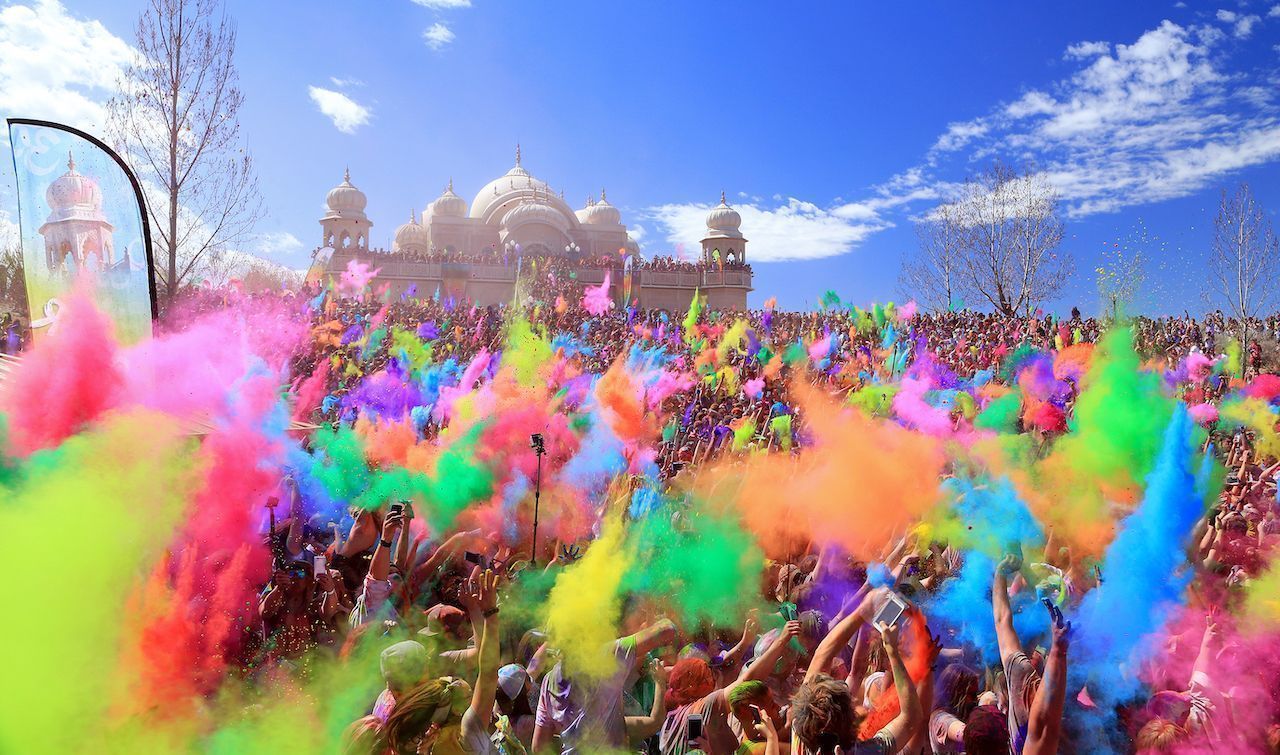
Photo: Johnny Adolphson/Shutterstock
Primarily observed in India and Nepal, but with growing popularity among non-Hindus in South Asia, the spring festival of colors and love is an ancient Hindu religious festival that starts with a bonfire, and proceeds into a color-carnival. Participants are showered with powdered paint, paint-filled water guns, and paint-filled water balloons. This celebration subsequently spawned the commercial “Color Run” global phenomenon, gaining traction since 2011.
Rio Tinto, Spain
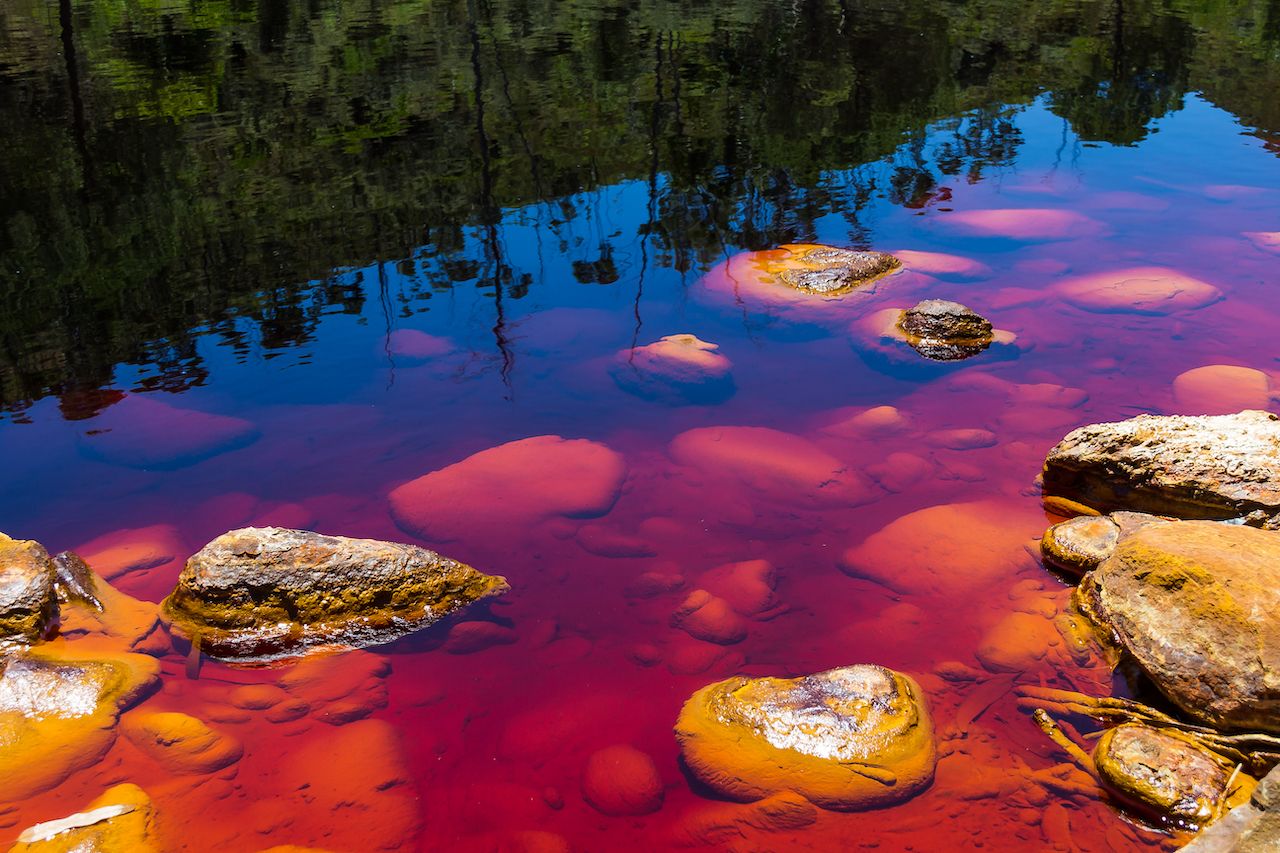
Photo: agsaz/Shutterstock
A river in southwestern Spain, the Rio Tinto flows from the Sierra Morena mountains south down to the Gulf of Cadiz. It gets its red color from dissolved iron deposits due to the river’s high acidity (pH 2), a possible byproduct of the heavy mining of precious metals in the area, from as early as 3,000 BC.
Kliluk Spotted Lake, Canada
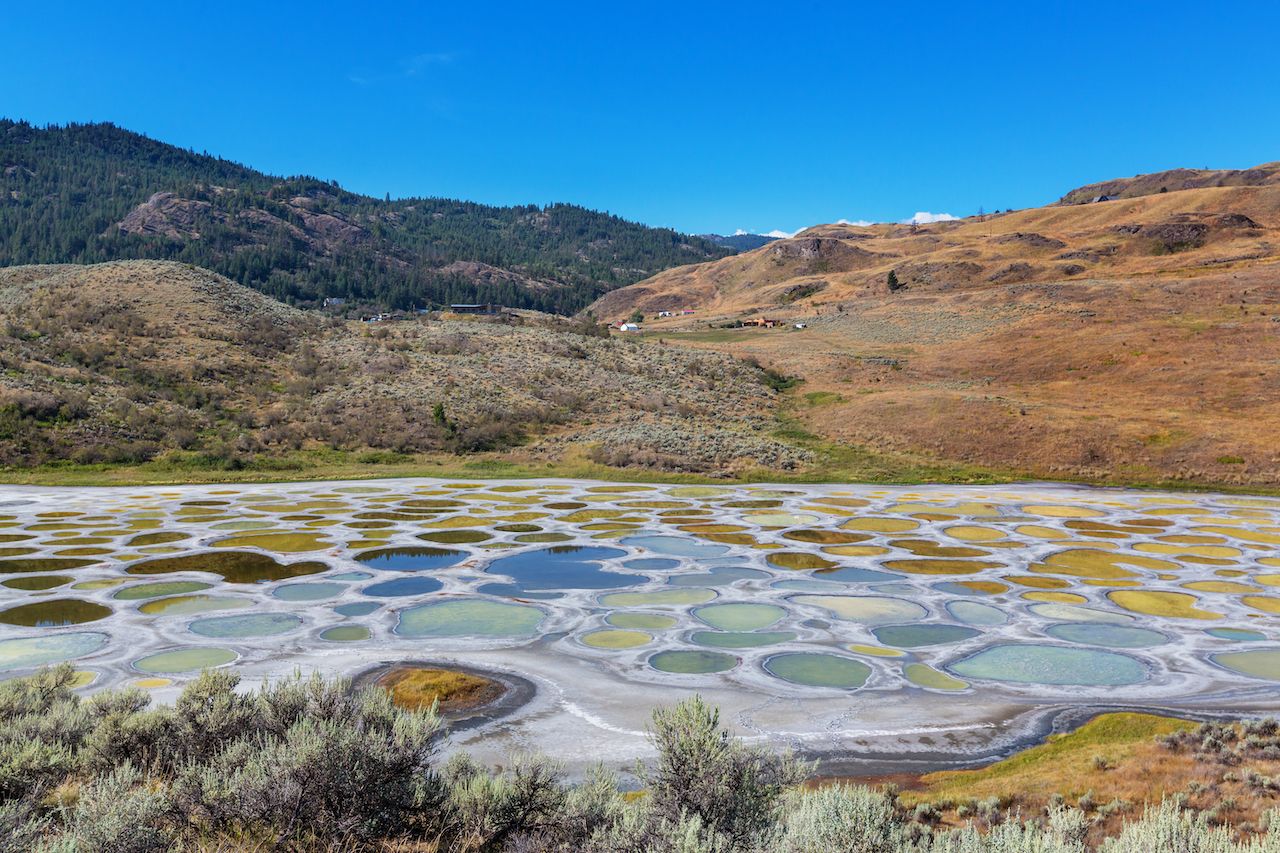
Photo: Galyna Andrushko/Shutterstock
Located northwest of Osoyoos, BC, the Kliluk Spotted Lake contains some of the highest concentrations of magnesium sulfate, calcium, and sodium sulfates (as well as a myriad of other minerals) in the world. When the water of the lake evaporates in the summer, it leaves pockets (the “spots’) of different colored ponds based on the individual mineral concentrations.
Palais des Congres, Montreal, Canada
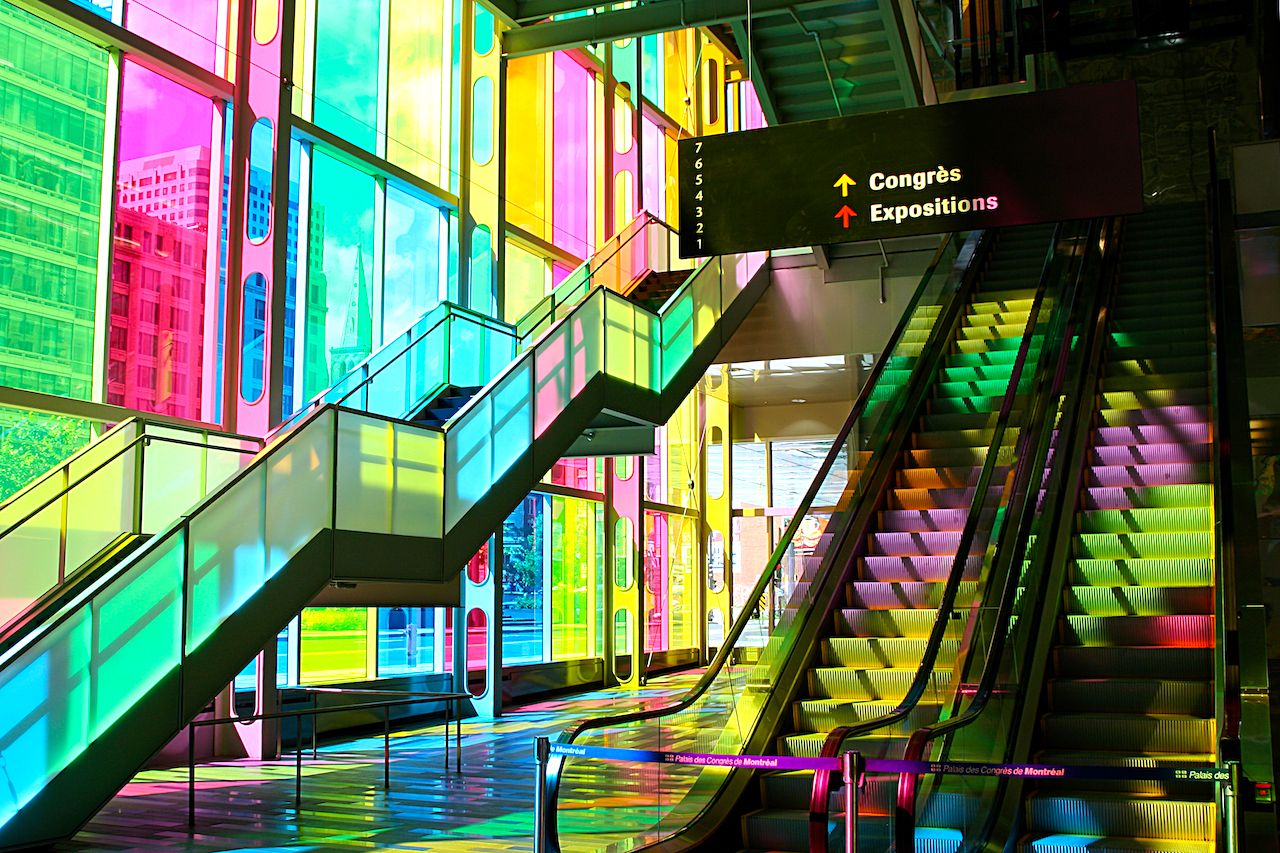
Photo: Alphonse Tran/Shutterstock
This French-Canadian convention center was built in the early 1980s, directly above Montreal’s main underground highway, the Ville-Marie Expressway. The entrance hall is paneled entirely in colorful glass, so when the sun shines in every bit of architecture is bathed in bright colors.
Mendenhall Ice Caves, Juneau, Alaska
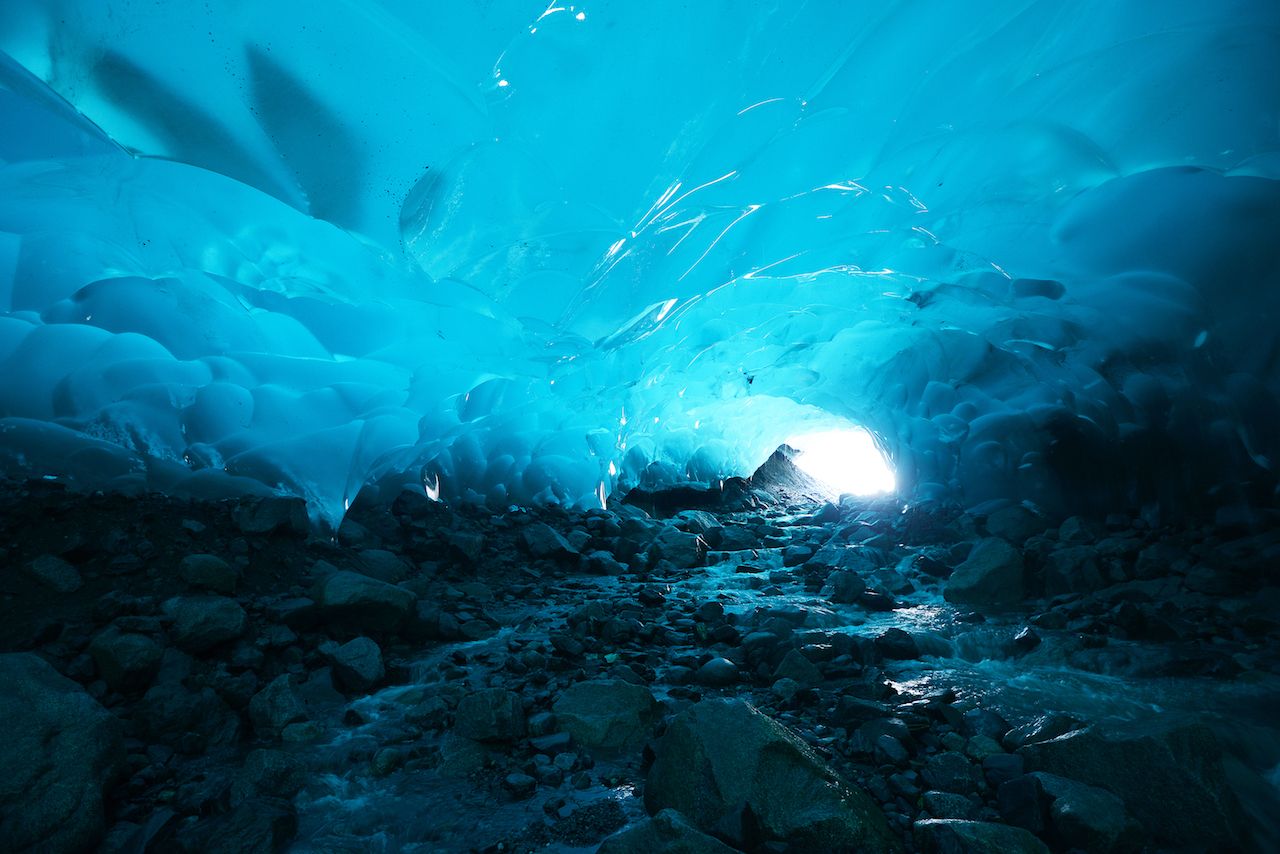
Photo: saraporn/Shutterstock
These unbelievably blue ice caves located within the Mendenhall Glacier in Alaska are only accessible by first kayaking to, and then ice climbing over, the glacier itself. However, sadly this glacier has receded 2 miles in the past 50 years, and may not be around much longer.
Da Nang, Vietnam
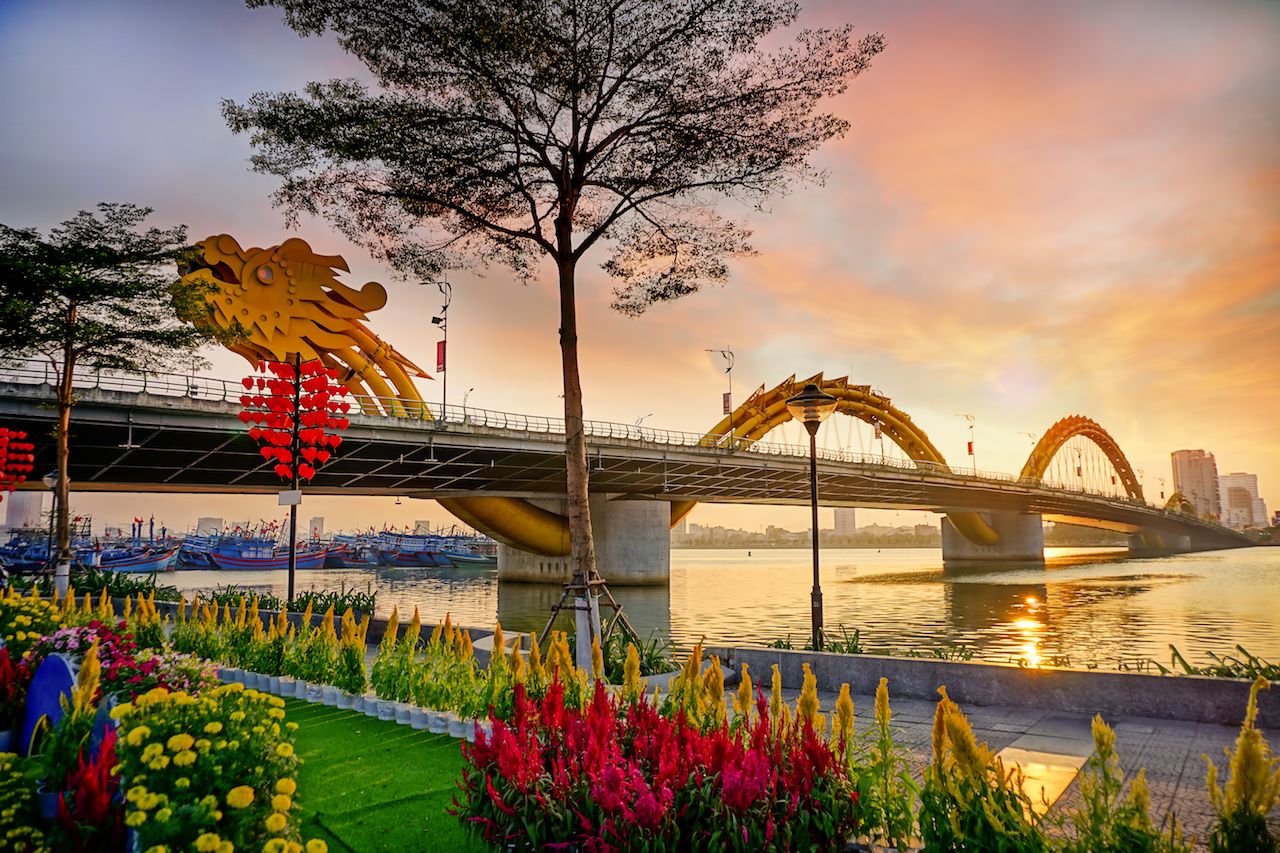
Photo: Tang Trung Kien/Shutterstock
You’ve probably seen pictures or video of the newly-installed fire-breathing dragon bridge over the Han River, but in Da Nang, Vietnam many bridges are excitingly lit with colorful lights at night. And to top it off, Da Nang has hosted an international fireworks competition over the river every year since 2008.
Busan, South Korea

Photo: hyeri.h/Shutterstock
Every year on Buddha’s birthday, temples all across South Korea light up in an astonishing array of colorful paper “wish lanterns.” During the festivities, the Samgwangsa Temple in Busan is extravagantly decorated in over 10,000 geometric and artistic arrangements of lanterns.
Rainbow Staircase, Istanbul, Turkey
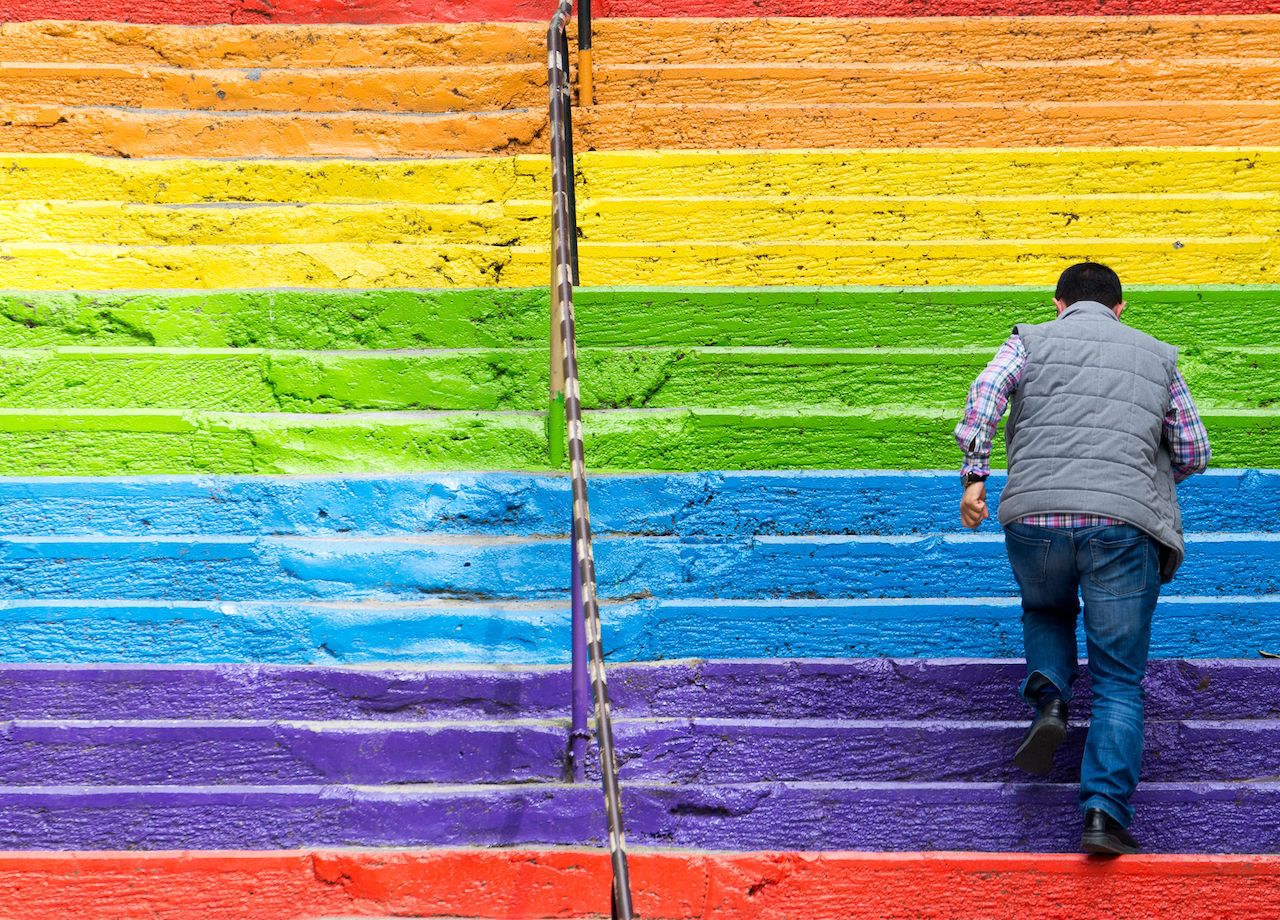
Photo: Comaniciu Dan/Shutterstock
A local retiree named Huseyin Cetinel devoted four whole days and almost $1000 out-of-pocket to decorate a flight of stairs in his neighborhood in Istanbul. His fellow residents loved the project so much that when the government painted over the steps in gray, it inspired a movement across the entire city–since then, communities all over Istanbul have brightened their own neighborhoods with rainbow-colored steps.
The Rainbow Village, Taichung, Taiwan
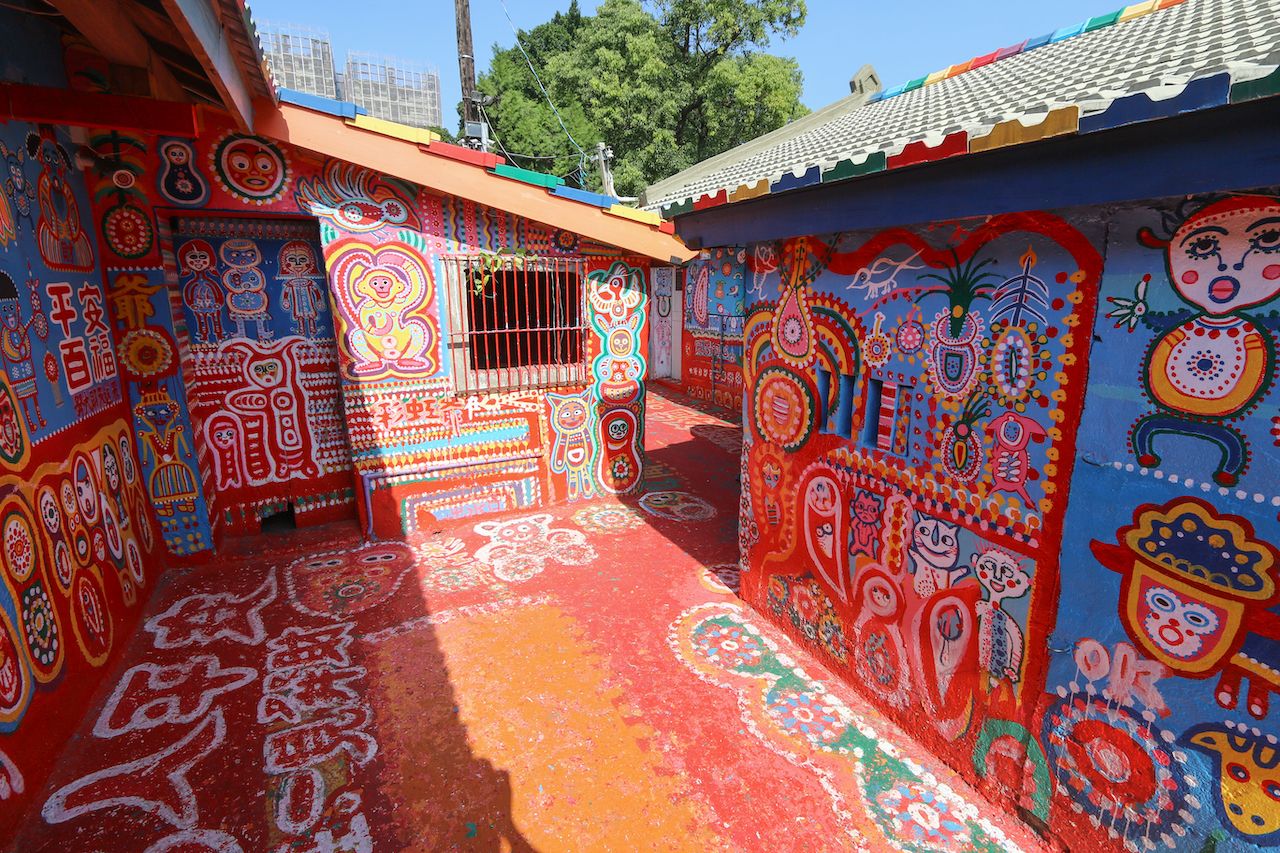
Photo: KYTan/Shutterstock
Huang Yung-Fu (lovingly known as “Rainbow Grandpa”) was living in a military dependents village on the outskirts of Taichung when the government announced that they were planning to demolish it. To save his home, Grandpa Huang took to the streets with his paints and his brushes and turned the previously dismal village into a whimsical work of art (which the government has since taken steps to preserve!).
Legoland
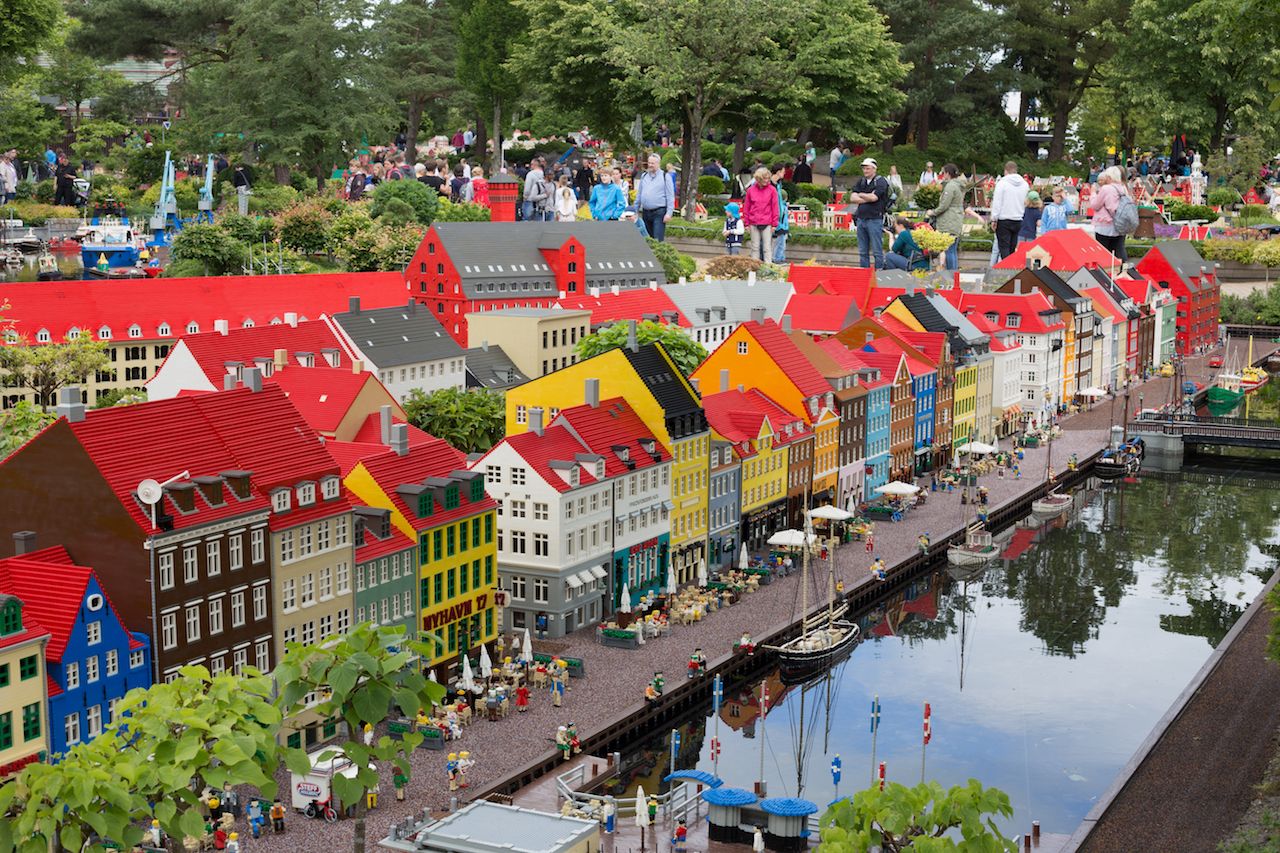
Photo: Anna Soelberg/Shutterstock
Not only are they tons of fun, Legos also have the corner on the market for bright, primary colors. With locations in California, Florida, Denmark, Germany, Malaysia, and the UK, you can get your colorful construction fix on three continents.
Nyhavn, Copenhagen, Denmark

Photo: Olga Gavrilova/Shutterstock
Nyhavn translates to “new harbor,” and describes the 17th century canal-front entertainment district in Copenhagen. Lined with distinctively colorful rowhouses (the first of which was constructed in 1661) and historical wooden ships, the district boasts an impressive number of canal-facing bars and restaurants (which provide patrons with blankets for outdoor dining even in colder months).
Kulusuk, Greenland

Photo: Jonas Tufvesson/Shutterstock
Located on a small island in southeast Greenland, this settlement was established in 1909 and is dotted with brightly painted wooden homes. The dialect of Greenlandic spoken in Kulusuk (called Tunumiit oraasiat) is considered the most innovative of the dialects and differs greatly from those found in western Greenland.
Menton, Cote d’Azur, France
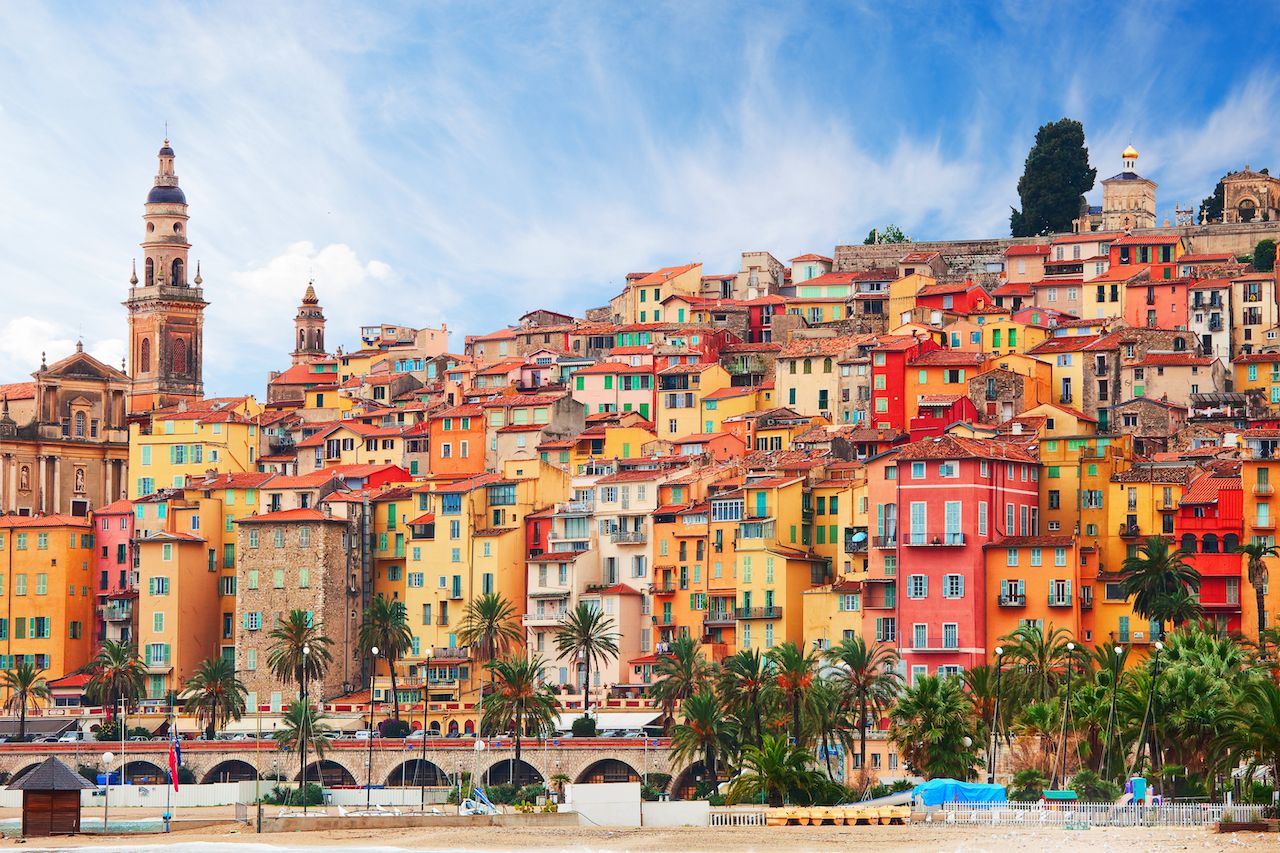
Photo: Nella/Shutterstock
Nicknamed “The Pearl of France,” this colorful coastal town is famous for its gardens and lemon and orange groves. In fact, the town is so centered on citrus that they throw a Lemon Festival every February, during which huge statues are built entirely out of different citrus fruits.
Keukenhof Park, Lisse, The Netherlands
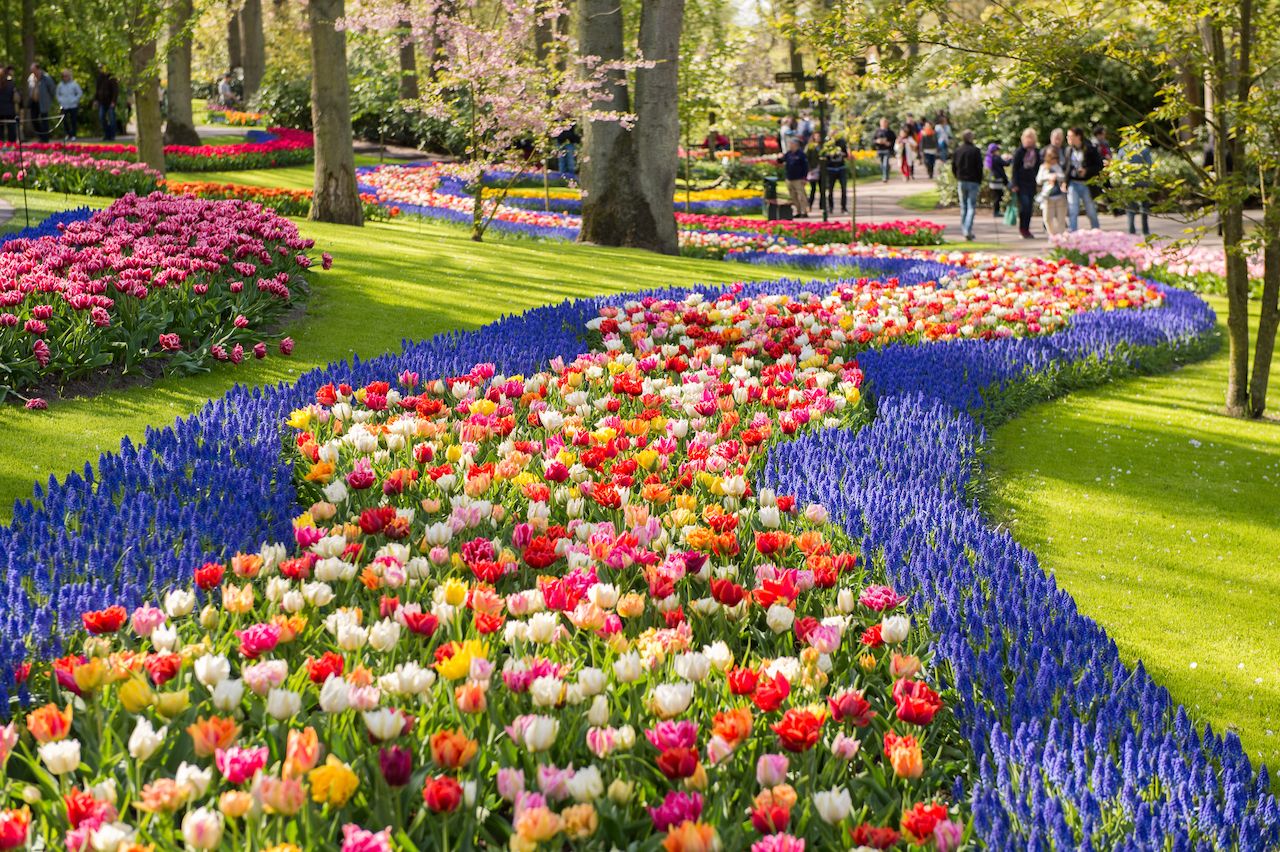
Photo: Anton_Ivanov/Shutterstock
Also called the “Garden of Europe,” Keukenhof Park (which covers 80 acres) is planted with over 7 million flower bulbs every year. Though the park is only open from March to May, it has been around since 1949 and remains a major attraction for tourists and dignitaries alike.
Old San Juan, Puerto Rico
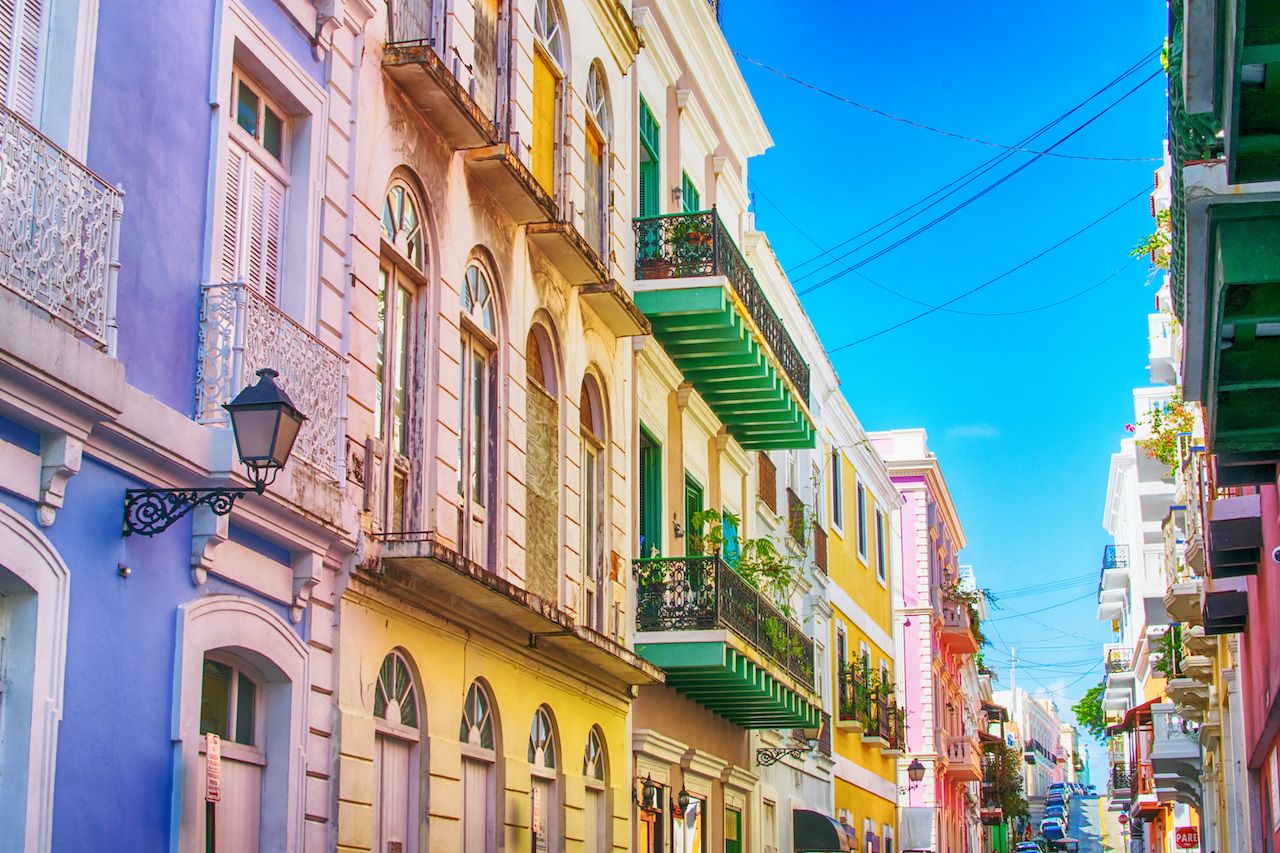
Photo: fldlcc/Shutterstock
Kelimutu crater lakes, Indonesia
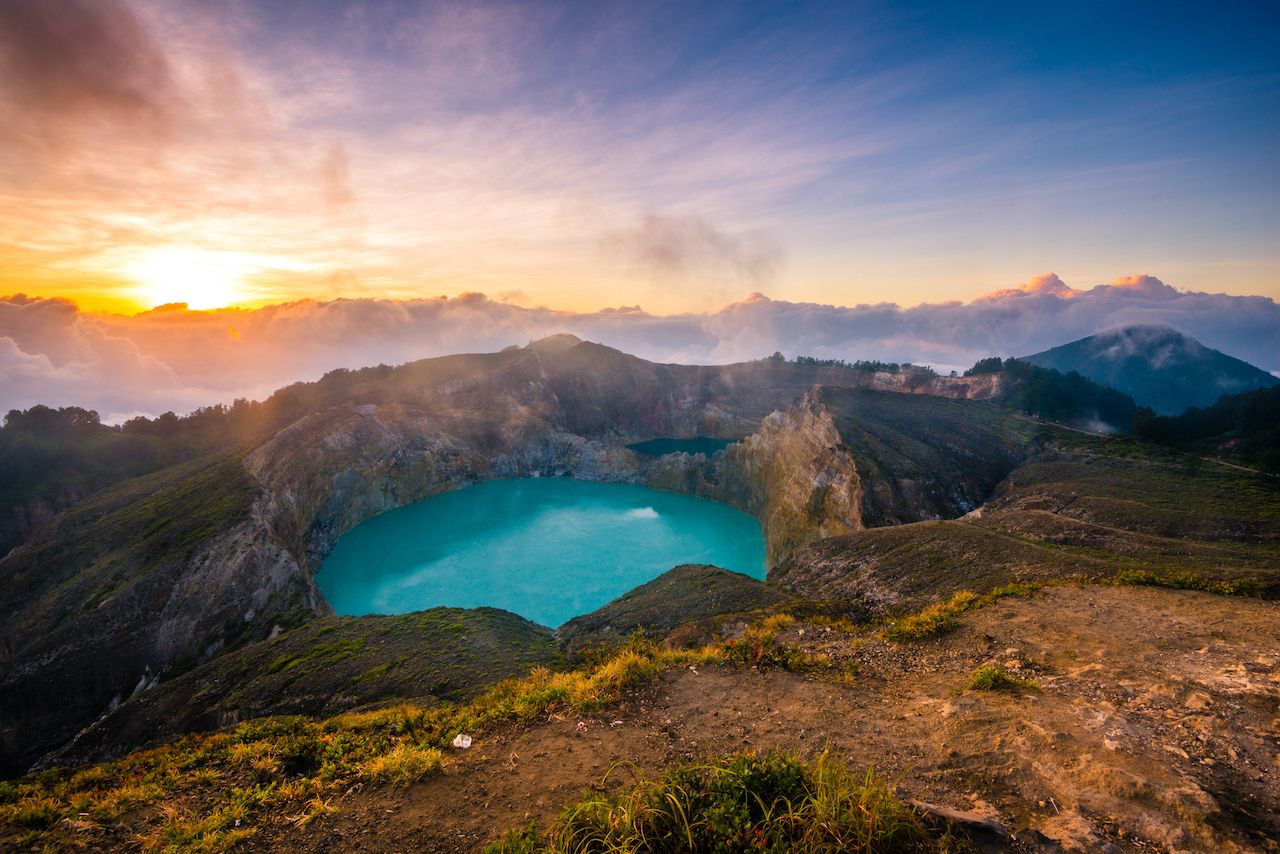
Photo: Reuben Teo/Shutterstock
Kelimutu, one of hundreds of volcanoes in Indonesia, is unique in that it is topped with three crater lakes of drastically different colors. Tiwu Ata Mbupu (“Lake of Old People”) sits apart from the other two and appears deep blue or even black. Tiwu Nuwa Muri Koo Fai (“Lake of Maidens”) is separated from Tiwu Ata Polo (“Enchanted Lake”) by a shared crater wall. These lakes tend to be bright blue-green and red, respectively. The colors of these lakes have been known to change depending on the chemical composition of the water and the position of the sun.
Laguna Colorada, Bolivia
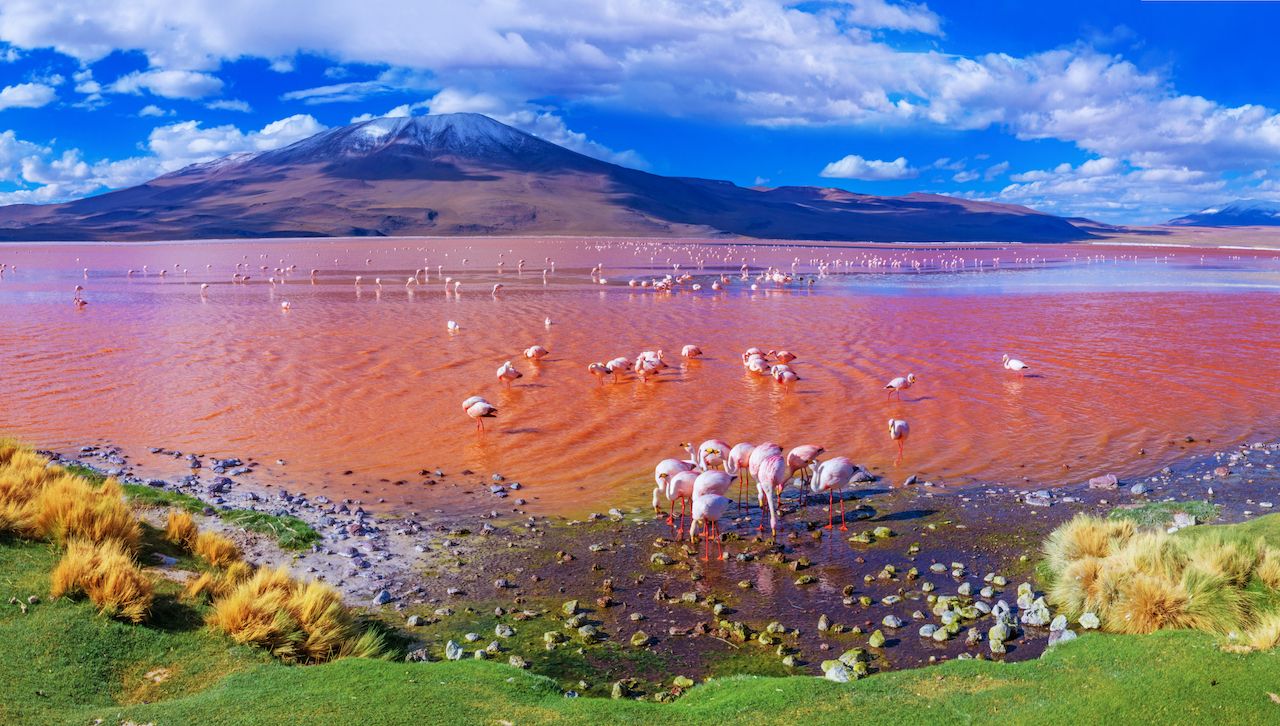
Photo: Belikova Oksana/Shutterstock
This shallow salt lake in southwestern Bolivia is bright red, due to pigments in the sediment and the presence of certain algae. Huge flocks of flamingos can be found wading in the shallows, and the center of the lake is dotted with bright white islands made entirely of borax.
Guilin Rice Terraces, Longji, China
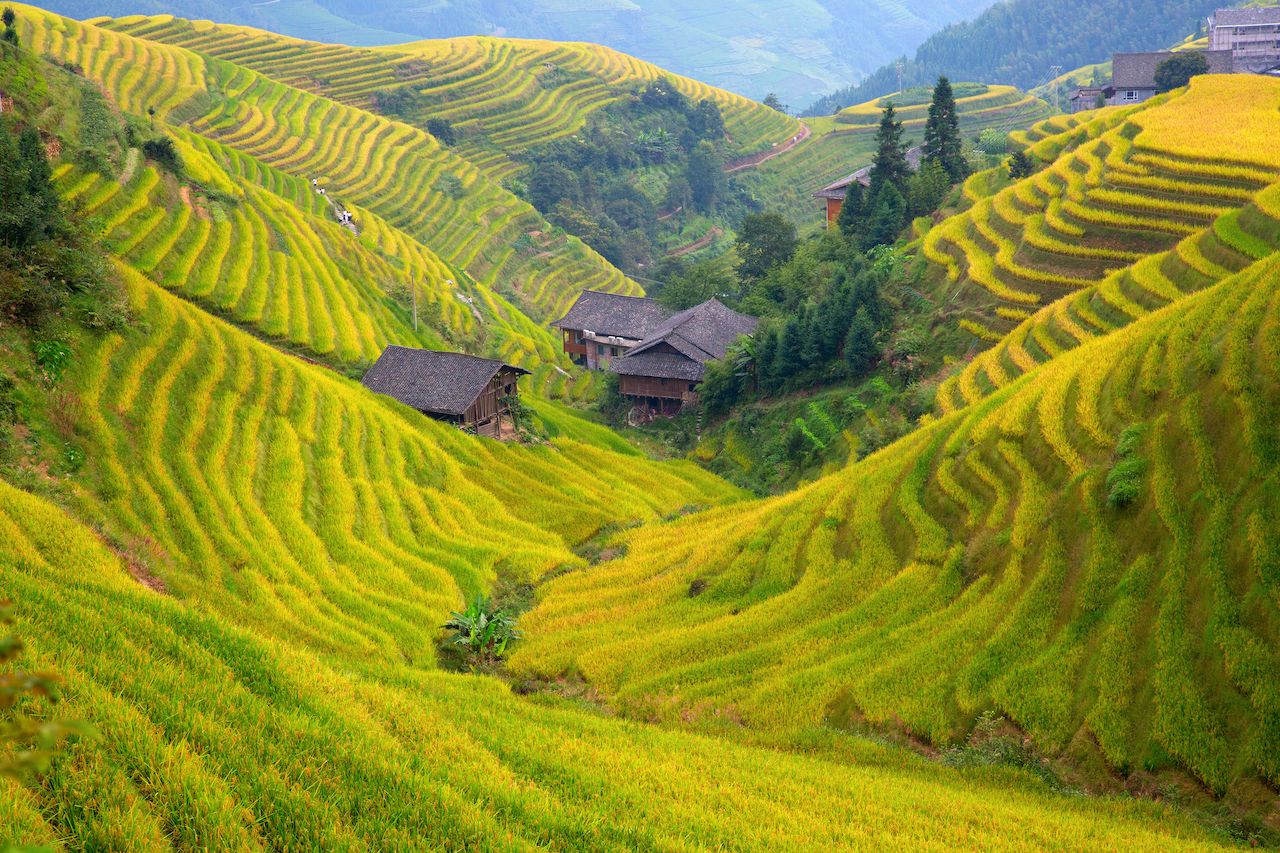
Photo: Fedor Selivanov/Shutterstock
Located in southern China close to Vietnam, the Longji terraced rice fields cover an area of almost 20,000 acres and rise as high as 3,600 feet into the air. These fields, nicknamed the “Dragon’s Backbone” because of their resemblance to scales, first appeared in this area around 1300 AD and take on a different appearance in every season, depending on the life cycle of the rice being grown.
Waitomo Caves, New Zealand
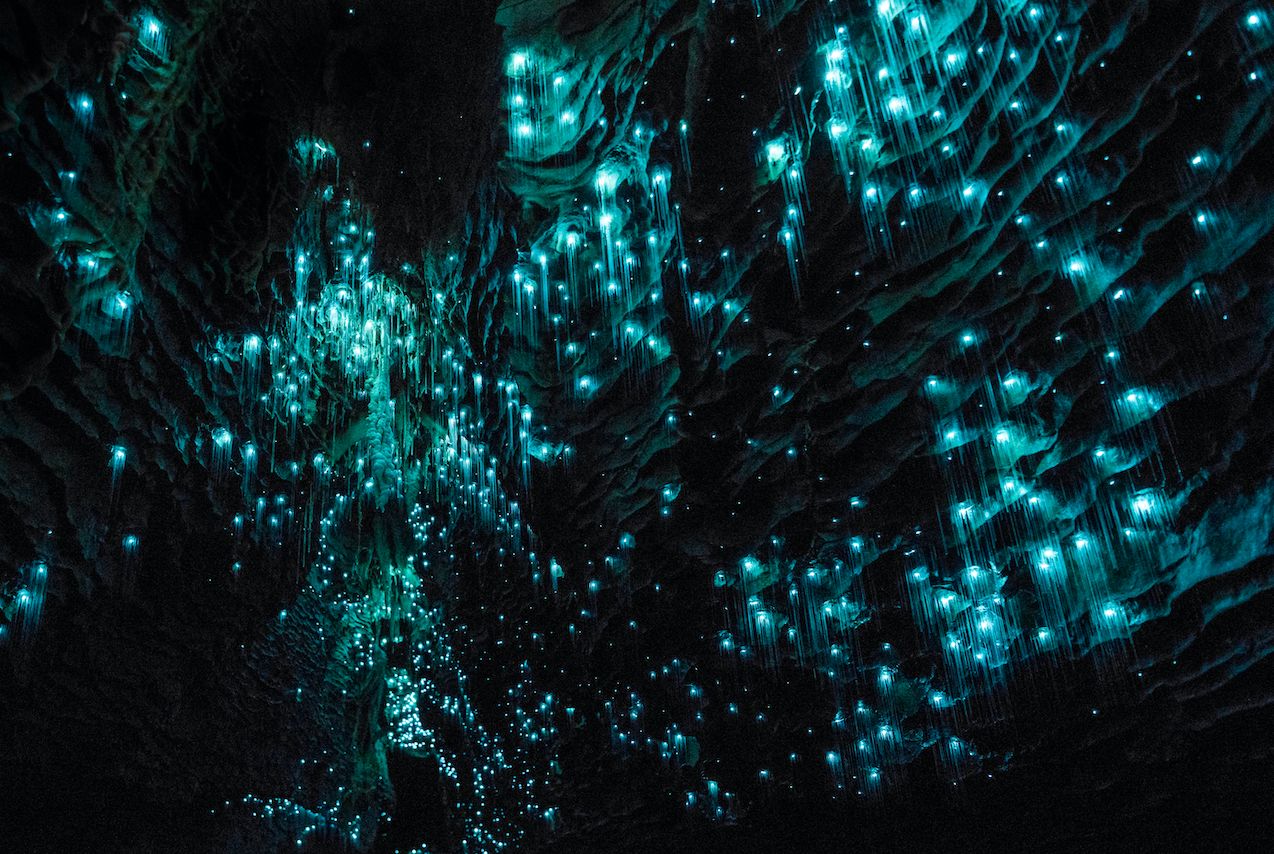
Photo: Shaun Jeffers/Shutterstock
These two-million-year-old caves in the North Island of New Zealand are home to Arachnocampa luminosa, a rare kind of glowworm whose presence in the caves in large quantities gives them their unique and unusual glow. What you’re actually seeing is the glow of the worm down a strand of silk meant for catching prey.
Kobe Luminarie, Kobe, Japan
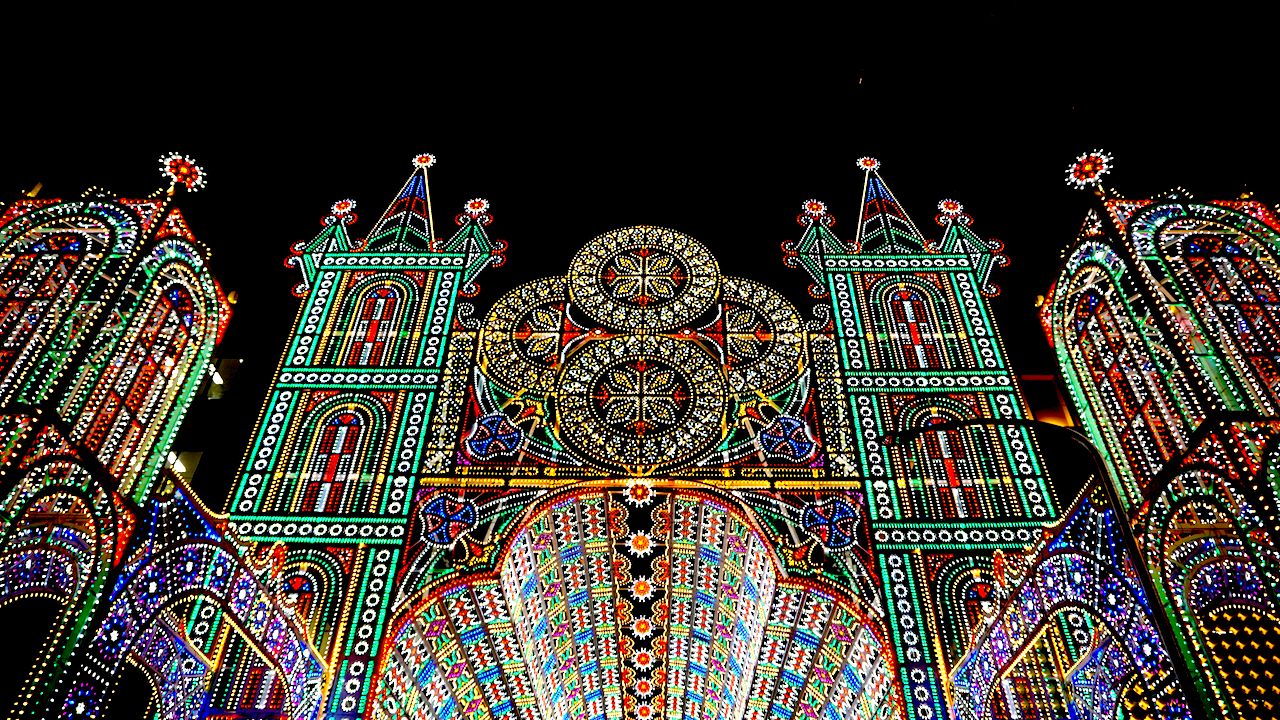
Photo: iamazim/Shutterstock
After the Great Hanshin Earthquake of 1995, the Italian government donated 200,000 individually hand-painted lights to Japan. The lights, originally designed as a beacon of hope for the many citizens without power and families of lost loved ones, have been installed and displayed at a light festival every December since, in memory of the catastrophic event.
Valley of Flowers, Uttarakhand, India
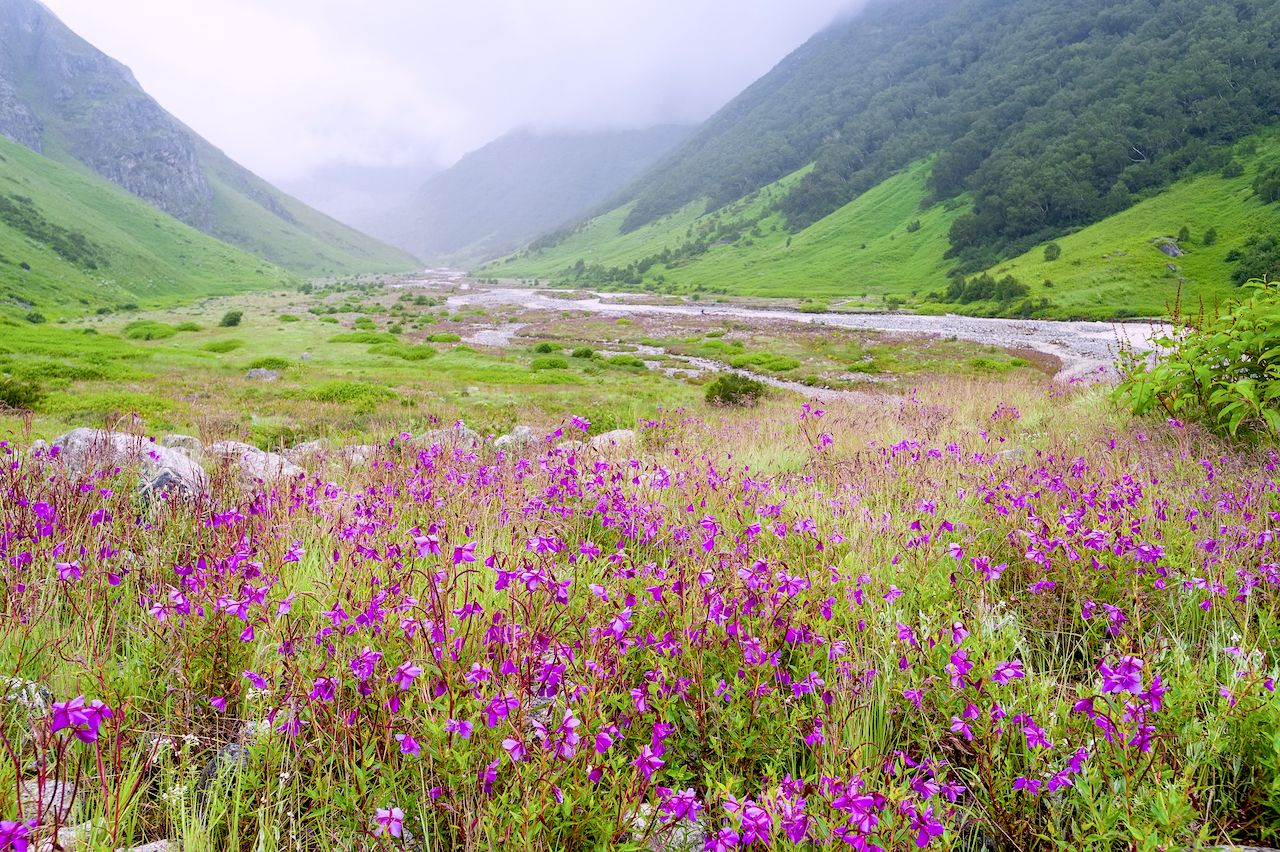
Photo: yakthai/Shutterstock
This national park located in the West Himalayas remains largely unknown and untouched thanks to its inaccessibility. Requiring a 10.5-mile hike from Govindghat, near Joshimath in Garhwal, the location was originally dubbed the “Valley of Flowers” by three British mountaineers in 1931, after getting lost and stumbling on it by accident.
Lake Retba, Senegal
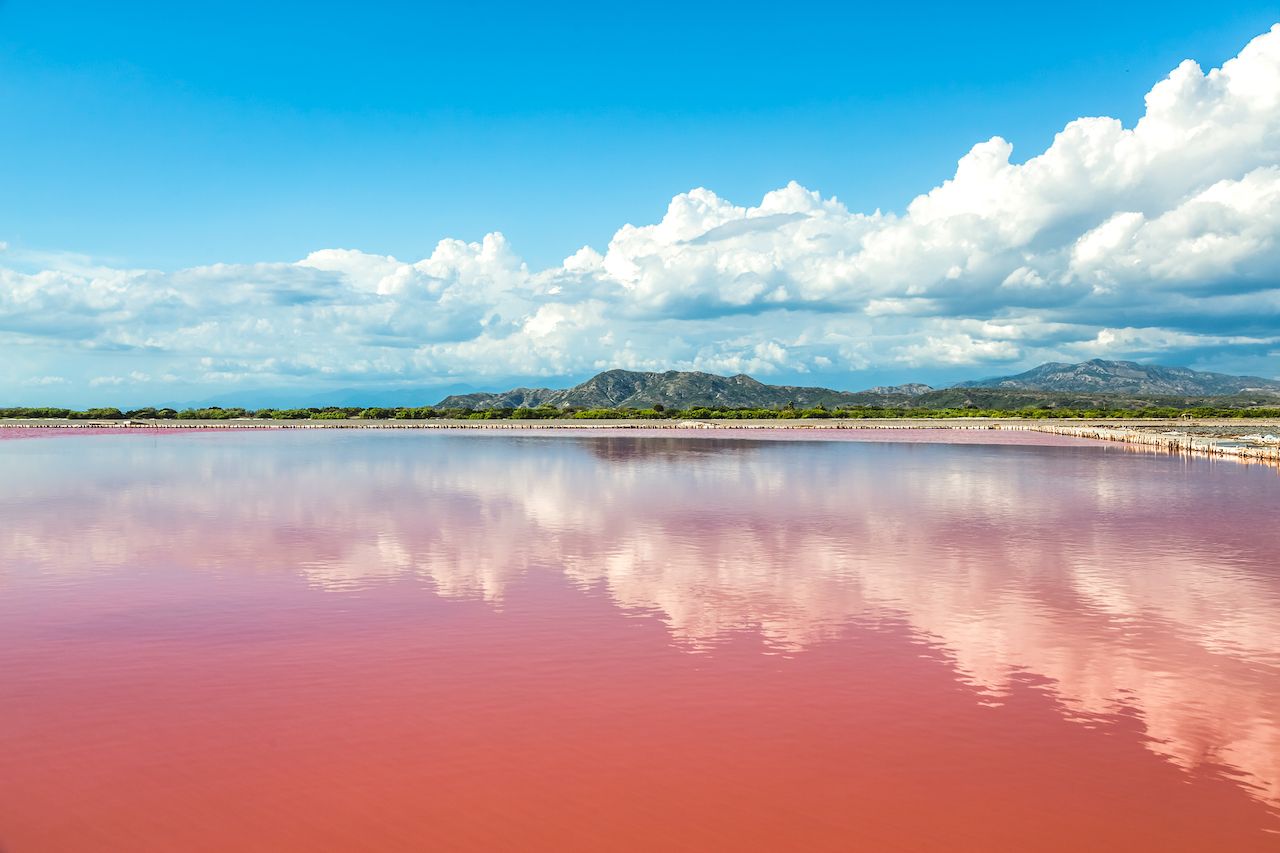
Photo: KonstantinKopachinsky/Shutterstock
Literally translating into “pink lake,” this body of water north of the Cap Vert peninsula in northwest Africa is known for its high salt content, and gets its pink color from large concentrations of Dunaliella salina algae, which produce the red pigment as a byproduct of their metabolism. Coincidentally, Dunaliella salina is one of few organisms that can survive in such salty conditions, making Lake Retba an ideal home for the algae species.
Meenakshi Temple, Madurai, India
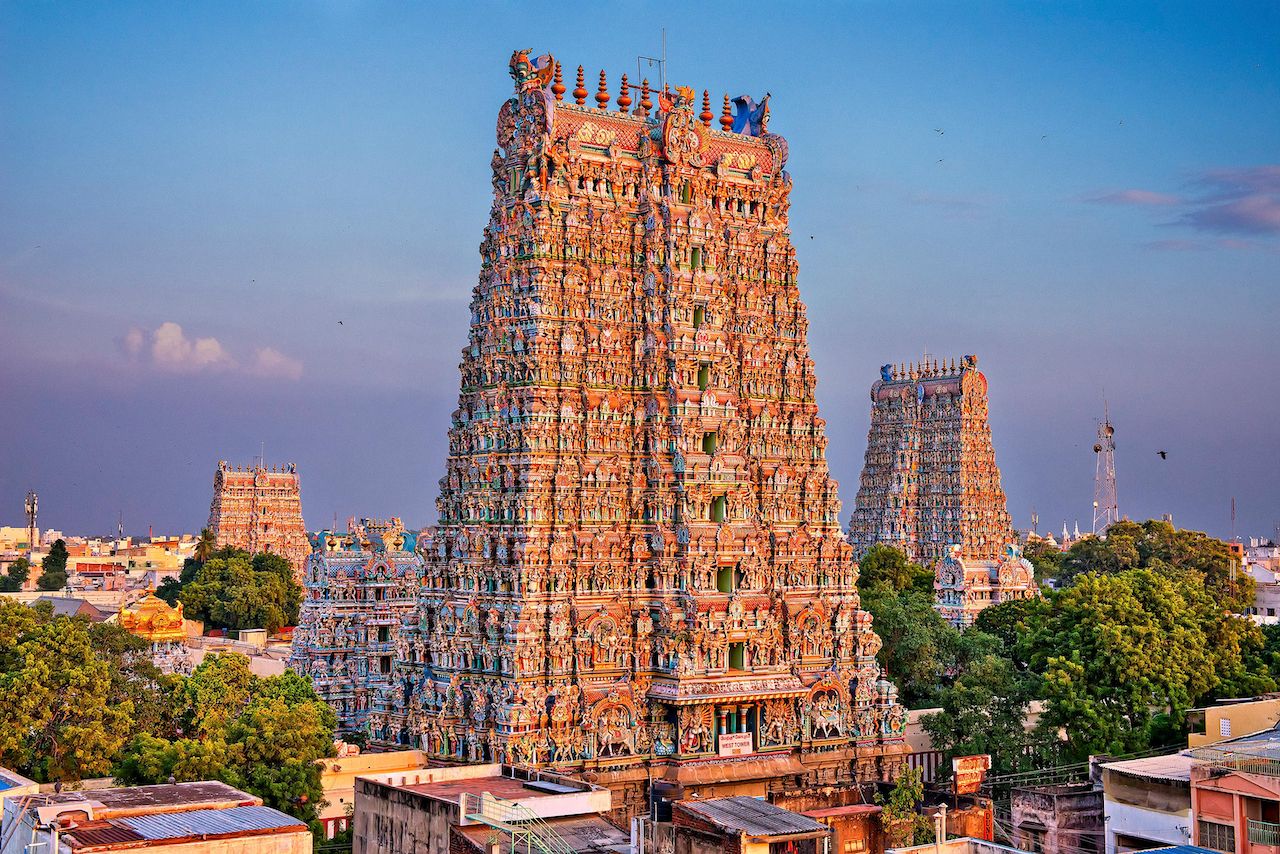
Photo: NV Studio/Shutterstock
Located on the southern bank of the Vaigai River in the 2500-year-old city of Madurai, the Meenakshi Amman Temple is dedicated to the gods Meenakshi (Parvati) and Sundareswarar (Shiva). The temple consists of 14 gopurams (gateway towers), all between 100-170 feet high, and two vimana (shrines).
Selangor, Malaysia
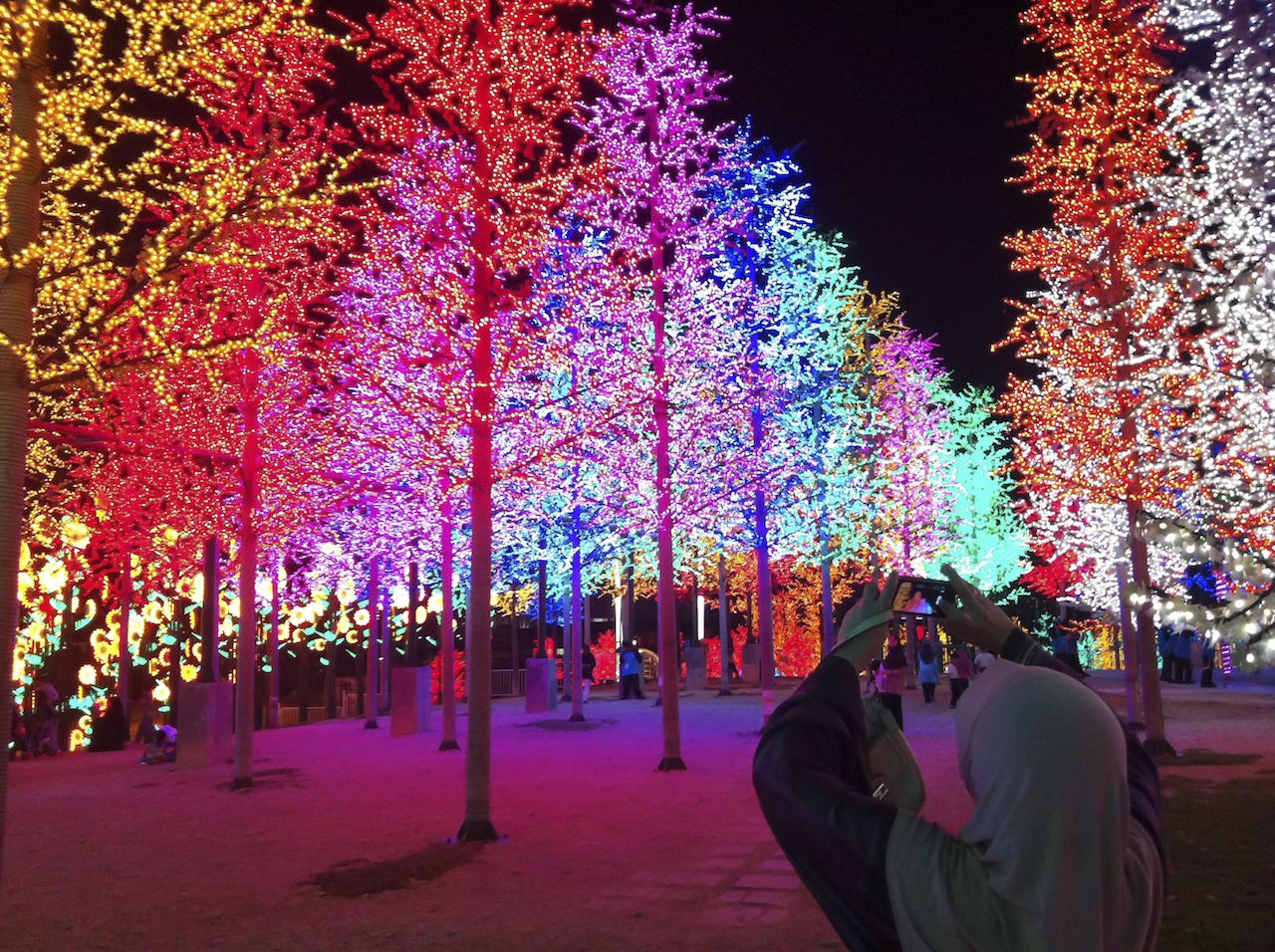
Photo: Ahmad Faizal Yahya/Shutterstock
The most developed and populated of Malaysia’s 13 states, Selangor (or Darul Ehsan, “Abode of Sincerity”) is best known for being home to the National Zoo of Malaysia, featuring 4,000 animals. These trees, a major tourist attraction in I-City (Shah Alam), are each covered in vibrant single-colored LED lights, and are lit 365 days a year.
Five Flower Lake, Jiuzhaigou Valley, China
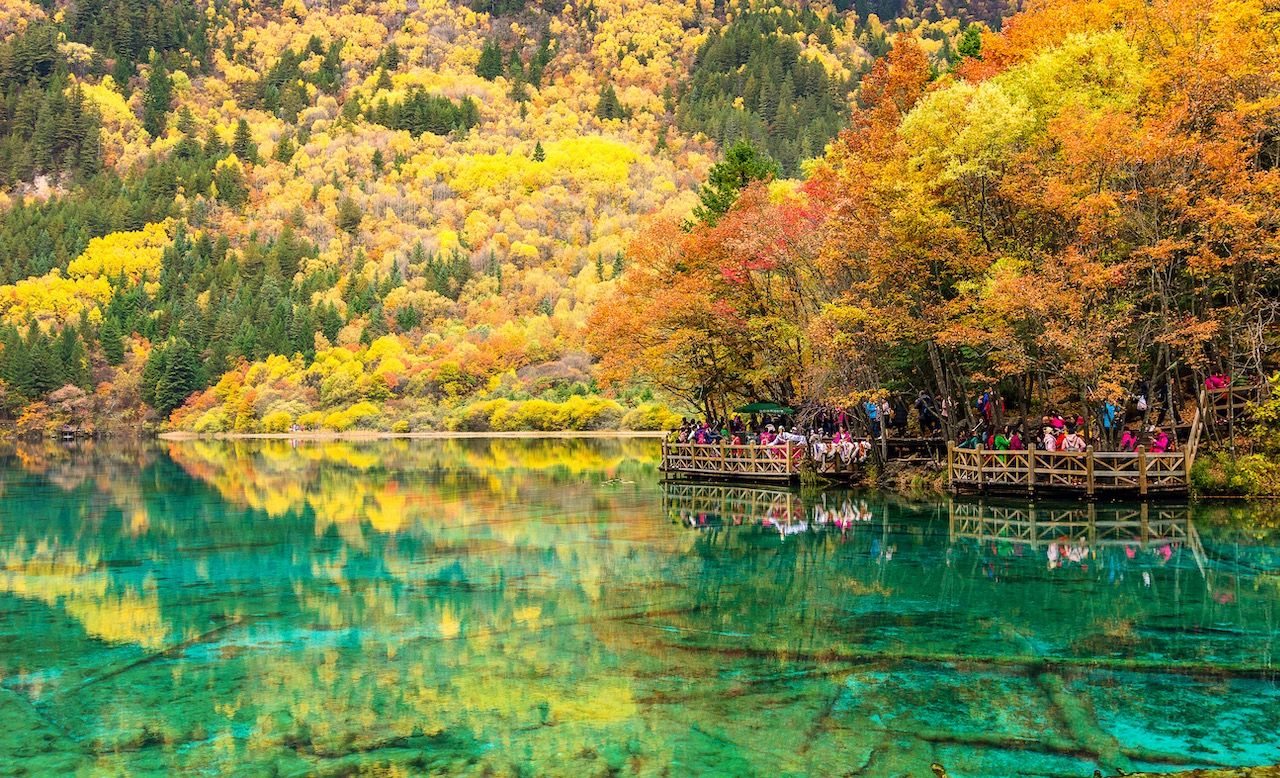
Photo: Raindear/Shutterstock
Located in the Jiuzhaigou Valley, a national park and reserve in Sichuan, the Five Flower Lake is the product of glacial runoff, with the blue, green, and turquoise waters drawing their color from differing calcium carbonate concentrations and varying depths. Due to the shallowness and clear waters of the Five Flower Lake, preserved ancient trees that litter the lakebed are visible from the surface.
Motisons Tower, Jaipur, India
Architects Ravindra Verma and Rajesh Singh were given complete artistic license over the design of the building and drew inspiration from a lotus flower. When the sun sets, the 50,000-square-foot structure comes alive with color-changing light panels and lit animated leaf veins.
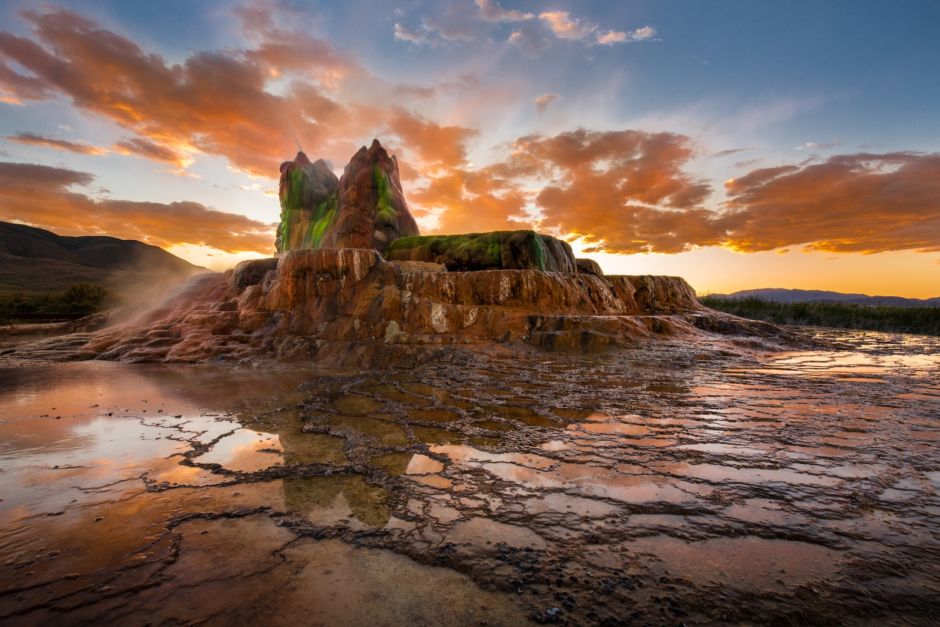
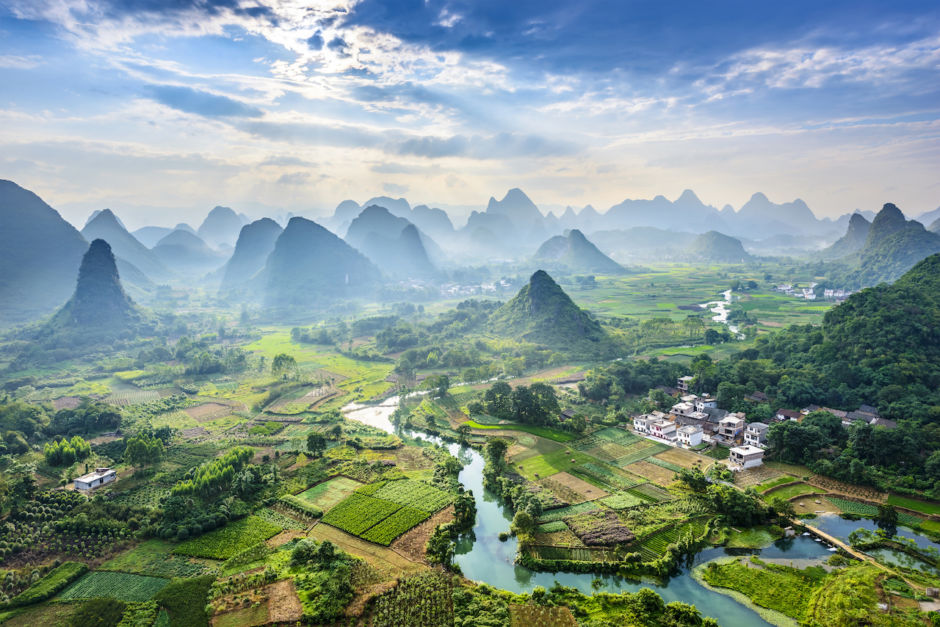
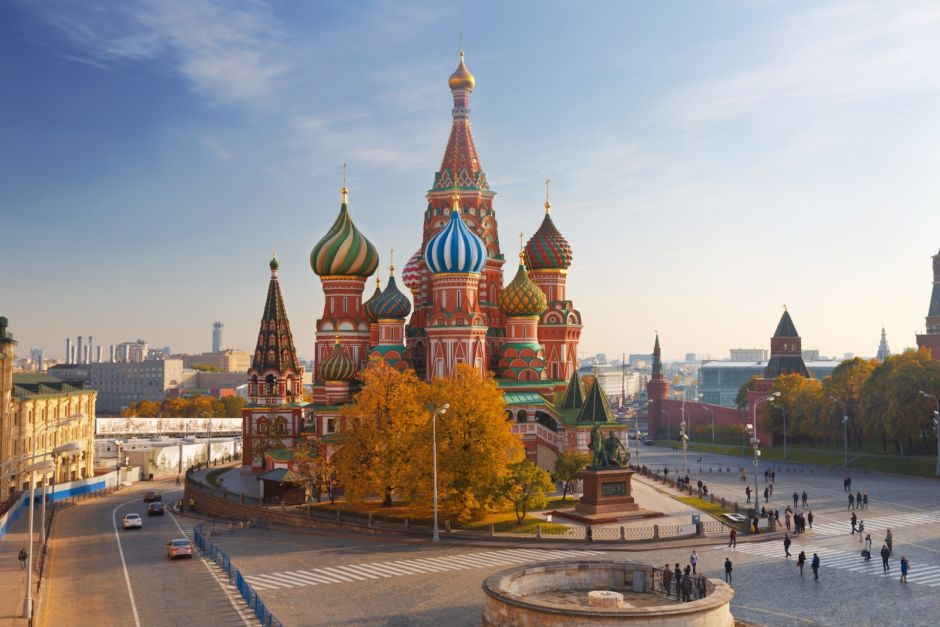
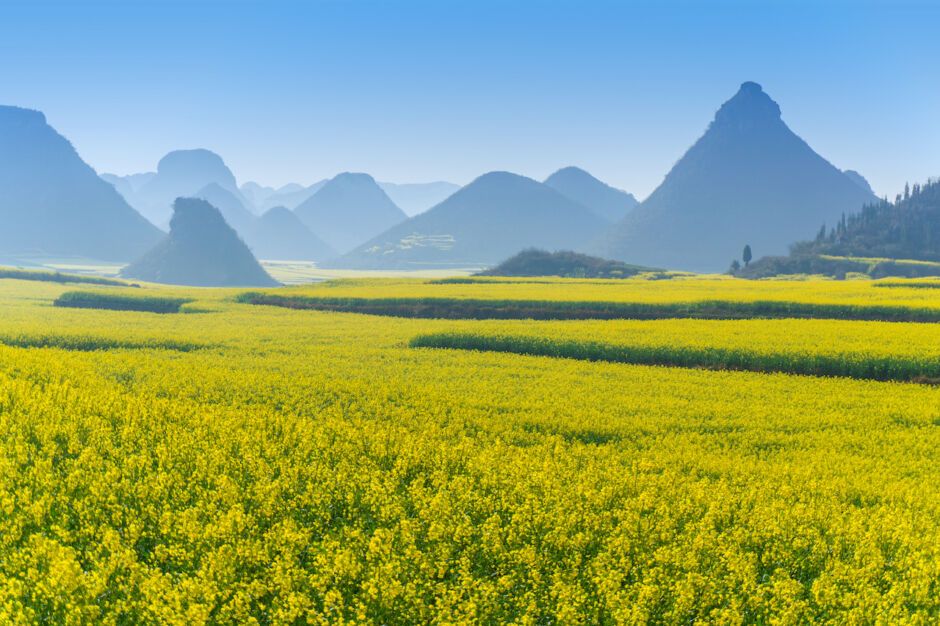
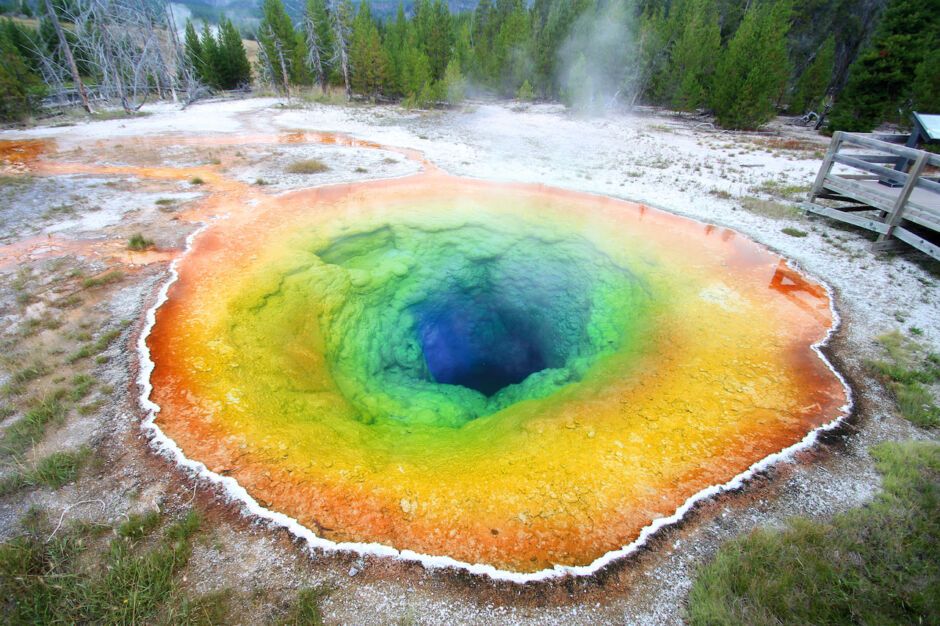
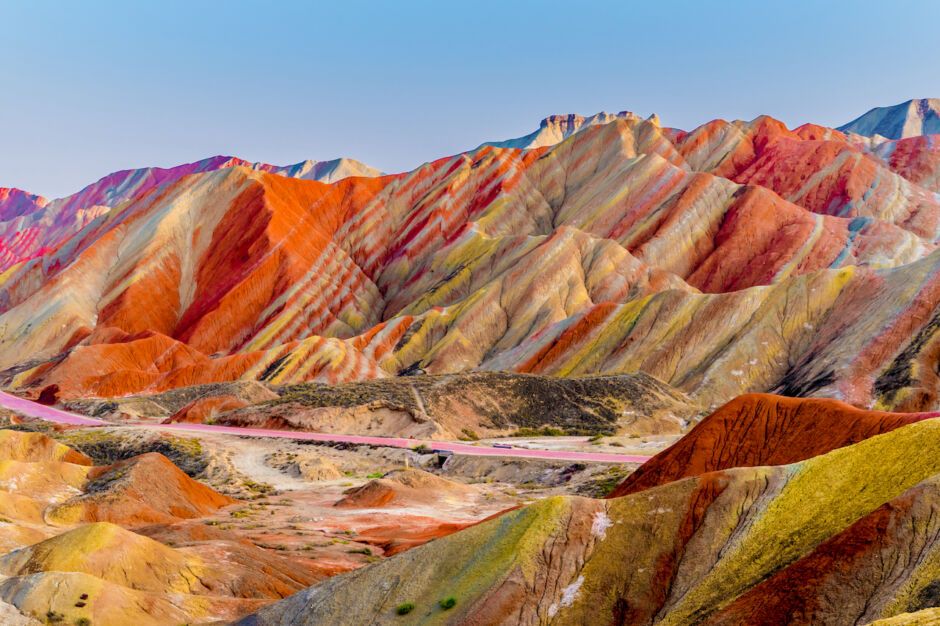

Intermission
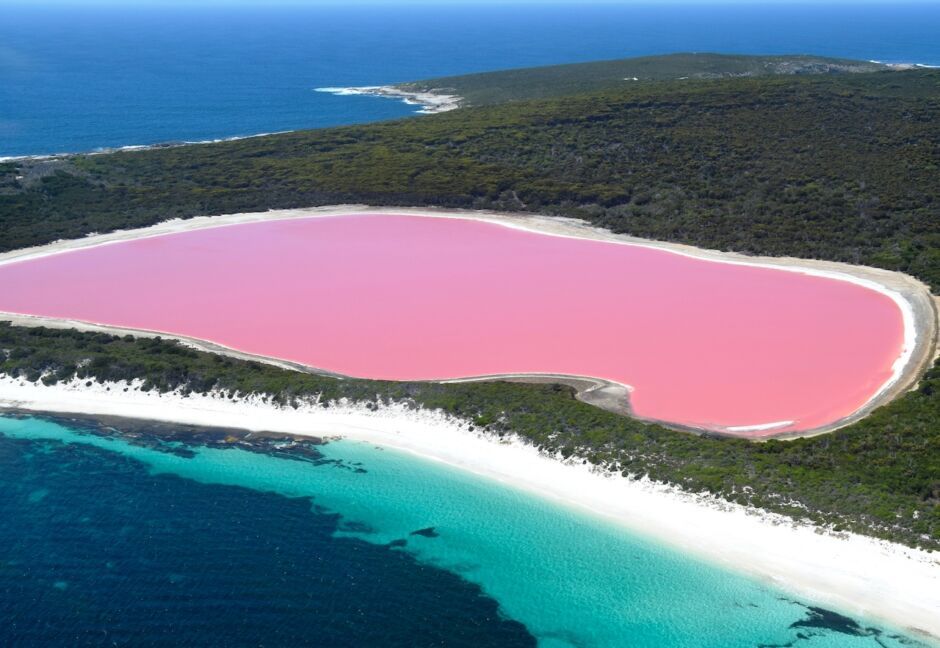
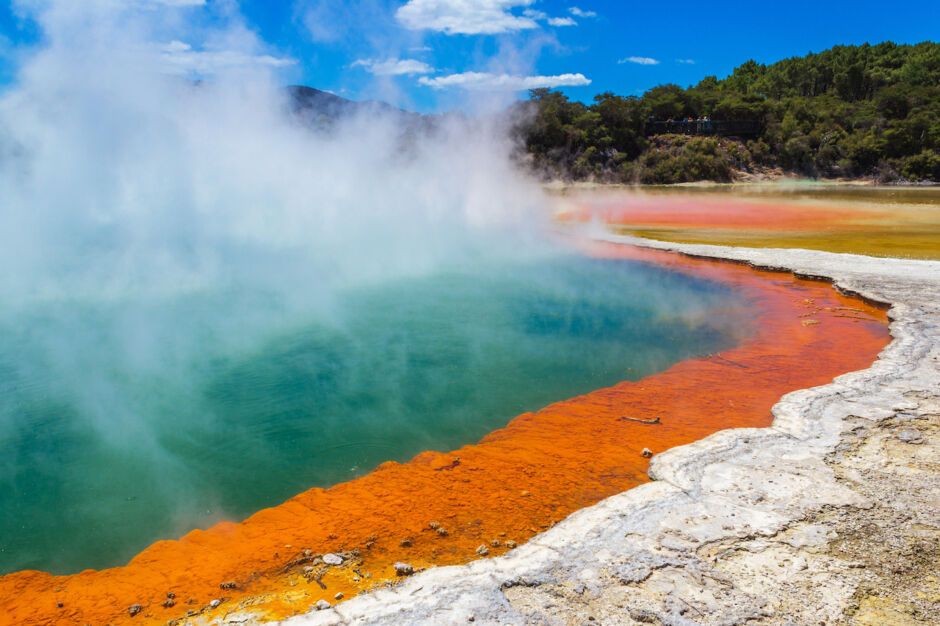
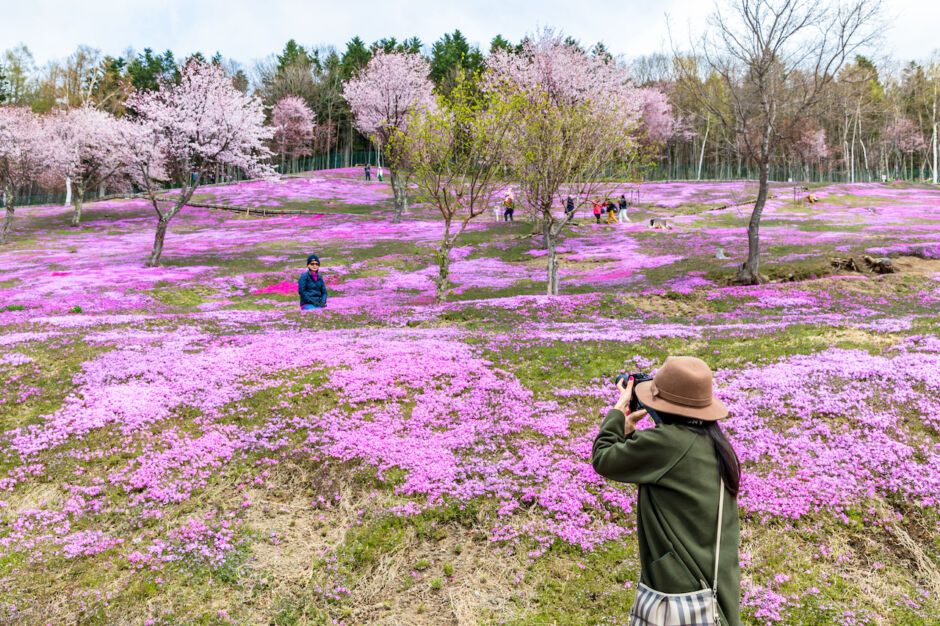
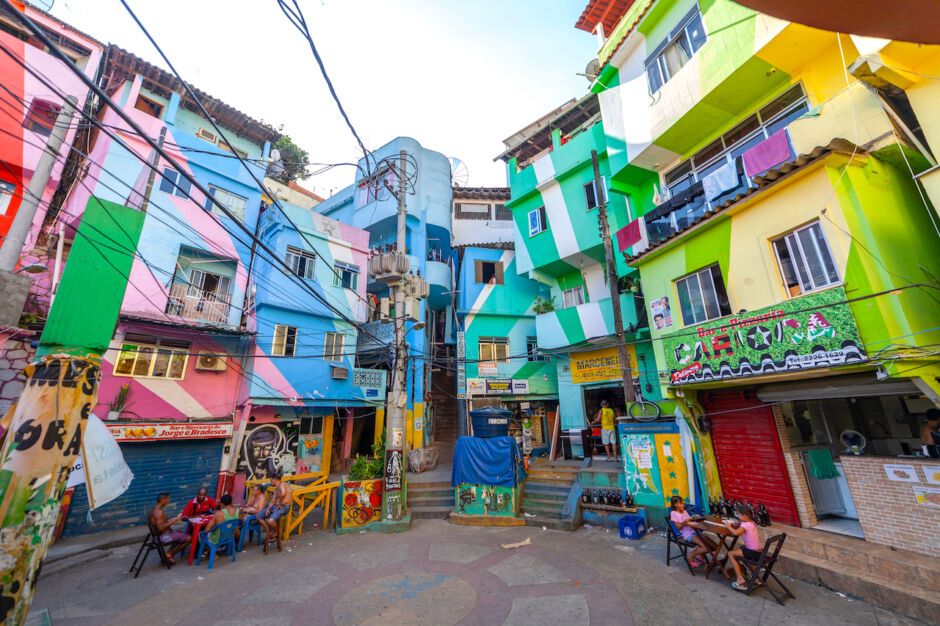
Intermission
